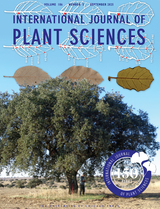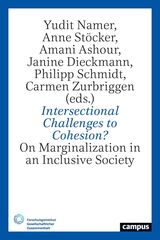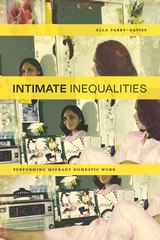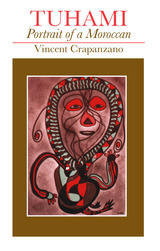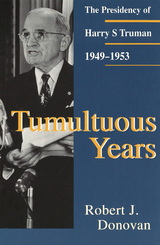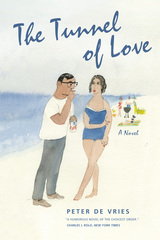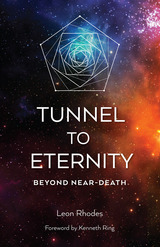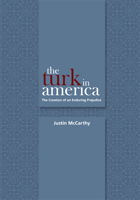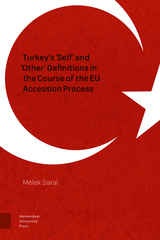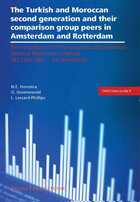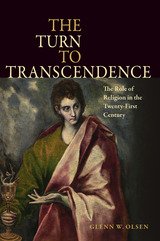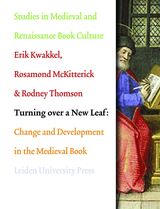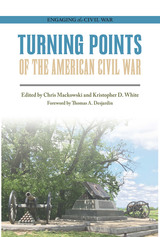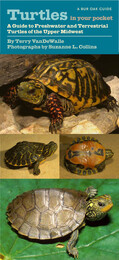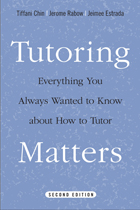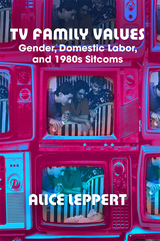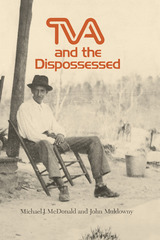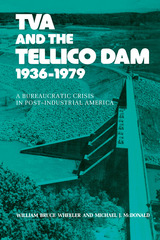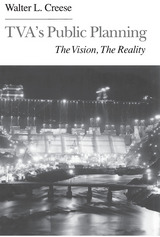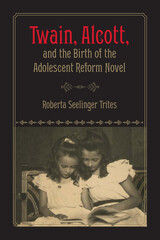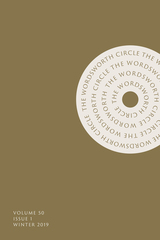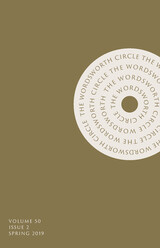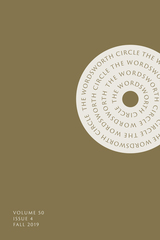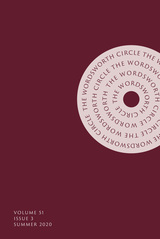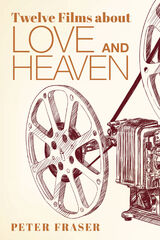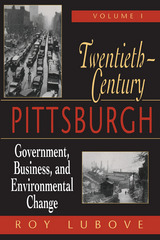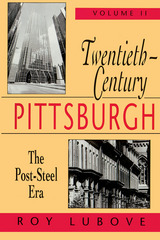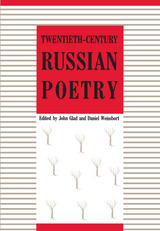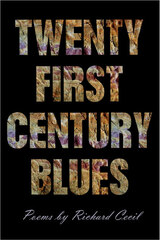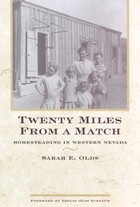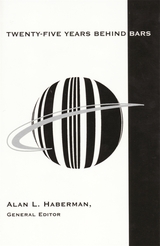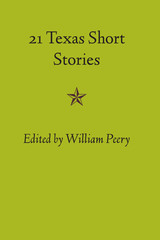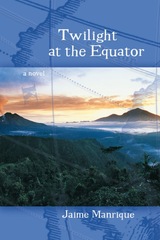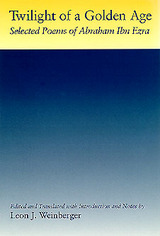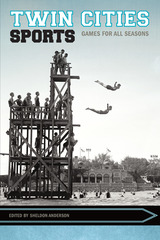 Tuberculosis and the Politics of Exclusion: A History of Public Health and Migration to Los Angeles
Abel, Emily K.
Rutgers University Press, 2007 Winner of the 2008 Arthur J. Viseltear Prize from the American Public Health Association and Nominated for the 2008 William H. Welch Medal, AAHM
Though notorious for its polluted air today, the city of Los Angeles once touted itself as a health resort. After the arrival of the transcontinental railroad in 1876, publicists launched a campaign to portray the city as the promised land, circulating countless stories of miraculous cures for the sick and debilitated. As more and more migrants poured in, however, a gap emerged between the city’s glittering image and its dark reality. Emily K. Abel shows how the association of the disease with “tramps” during the 1880s and 1890s and Dust Bowl refugees during the 1930s provoked exclusionary measures against both groups. In addition, public health officials sought not only to restrict the entry of Mexicans (the majority of immigrants) during the 1920s but also to expel them during the 1930s. Abel’s revealing account provides a critical lens through which to view both the contemporary debate about immigration and the U.S. response to the emergent global tuberculosis epidemic.
 Tuberculosis Control and Institutional Change in Shanghai, 1911–2011
Rachel S. Core
Hong Kong University Press, 2023 An analysis of the lessons learned from tuberculosis control in Shanghai.
Tuberculosis Control and Institutional Change in Shanghai, 1911–2011 is the first book on the most widespread and deadly infectious disease in China, both historically and today. Weaving together interviews with data from periodicals and local archives in Shanghai, Rachel Core examines the rise and fall of tuberculosis control in China from the 1950s to the 1990s. Under the socialist work unit system, the vast majority of people had guaranteed employment, a host of benefits tied to their workplace, and there was little mobility—factors that made the delivery of medical and public health services possible in both urban and rural areas. The dismantling of work units amid wider market reforms in the 1980s and 1990s led to the rise of temporary and casual employment and a huge migrant worker population, with little access to health care, creating new challenges in TB control. This study of Shanghai will provide valuable lessons for historians, social scientists, public health specialists, and many others working on public health infrastructure on both the national and global levels.
Tuberculosis: Part I, Tuberculosis Morbidity and Mortality and Its Control. Part II, Tuberculous Infection
Anthony M. Lowell, Lydia B. Edwards, and Carroll E. Palmer
Harvard University Press, 1969 This book provides a wealth of information on tuberculosis in the United States. Part I presents a detailed summary of the past history of tuberculosis and medical and administrative measures that have been applied in its control. Part II offers a clear picture of the status and trends of tuberculosis infection as determined by tuberculin skin testing programs, primarily one carried out among Navy recruits.
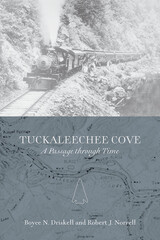 Tuckaleechee Cove: A Passage through Time
Boyce N. Driskell
University of Tennessee Press, 2015 Nestled amid the western slopes of the Great Smoky Mountains in East Tennessee, bisected by the Little River, and including the community of Townsend, Tuckaleechee Cove is known today as “the peaceful side of the Smokies.” Celebrated for its natural beauty, the area is also the site of human habitation dating back at least 13,000 years.
Tuckaleechee Cove’s rich past emerged from years of archaeological and historical research that began in 1999 when a state highway project uncovered a wealth of Native American and Euro-American remains, including burial mounds, fragments of tools, weapons, cooking vessels, and other evidence of past activity. This bountifully illustrated book combines details from that study with fascinating bits of history to tell the story of the cove and its disparate peoples.
The earliest Native Americans to visit the area were hunters and foragers who moved in small bands through the cove setting up temporary camps. Over the millennia, foraging gave way to more settled farming practices, with the establishment of permanent settlements about 2,000 years ago. By the 1600s the area’s residents were Cherokees who would soon encounter European explorers and traders. Displacing the Cherokees, Euro-Americans formed a number of small communities
in the cove with colorful names like Frog Town and Needmore. They farmed the land; built churches, schools, and small businesses; and fought in the Civil War. In 1900, a northern investor named W. B. Townsend recognized the area’s potential as a source of timber, and two years later the town bearing his name was literally abuzz with sawmill activity. By the Great Depression, however, the mills had closed, bringing hardship to cove residents. A measure of relief came in 1934 when the Great Smoky Mountains National Park was established nearby, opening a new, still unfolding chapter in the area’s history.
Boyce N. Driskell is the past director of the Archaeological Research Laboratory and adjunct research professor in the Department of Anthropology at the University of Tennessee, Knoxville.
Robert J. Norrell is a professor and the Bernadotte Schmidt Chair of Excellence in the Department of History at the University of Tennessee, Knoxville.
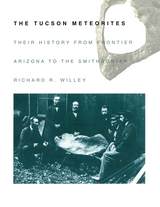 The Tucson Meteorites: Their History from Frontier Arizona to the Smithsonian
Richard R. Willey
University of Arizona Press, 1997 The Tucson Meteorites—the two known fragments totaling more that a ton of primordial space matter—were discovered during the first half of the nineteenth century on the desolate Mexican frontier that later became Arizona. In this book, Richard R. Willey recounts the bizarre history of these meteorites and explores the mystery, unresolved to the present day, of where they fell to earth and whether more fragments remain to be found in the mountains of southern Arizona.
Willey tracks the meteorites through years of confiscation and disputed ownership to the Smithsonian Institution. "I had seen passing allusions to the Meteorite in occasional writings on Tucson’s colorful history," he recalls, "but little that hinted at the social, political, and military involvement that the Meteorite had enjoyed in the Southwest of yesteryear, nor of the mystery surrounding other, yet unfound ‘enormous masses’ of the Meteorite." The book features both historical illustrations and photographs of the meteorite fragments and also includes data on their physical characteristics. Willey’s story will leave readers with an enhanced appreciation of life on the early Arizona frontier and of the facts surrounding the fate of the Tucson Meteorites in that frontier setting.
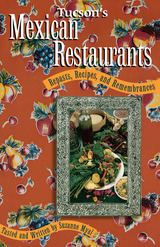 Tucson's Mexican Restaurants: Repasts, Recipes, and Remembrances
Suzanne Myal
University of Arizona Press, 1999 Tucson prides itself on being the Mexican Food Capital of America—and it's no wonder, with more than 150 restaurants to choose from. This book is a celebration of that culinary tradition, providing readers with not only a guide to outstanding eateries but also an intimate look at the heritage they represent.
From the traditional restaurants of South Tucson to newer dining spots on the north and east sides, Tucson's Mexican Restaurants is an affectionate look at some of the best places to savor this wonderful cuisine. Suzanne Myal takes readers into the kitchens of many of these establishments to offer insights into the families that run them, the secrets of food preparation, and even the history of some of Tucson's best-loved recipes. Many of those recipes, along with others from prominent Mexican American families, are reproduced in the book, inviting readers to try their hand at red beef tamales, chiles rellenos, and other favorite dishes.
The book is organized by six sections of town, with a locator map for each. The entry for each establishment includes address, hours, price range, and credit card information, and indicates the specialties of the house. Each entry is also coded for features such as level of alcohol service; availability of carryout, delivery, and catering; and whether the menu features heart-healthy or vegetarian options. A separate section lists Mexican bakeries and tortilla factories, and a guide to fiestas helps readers choose beer or tequila—and find menudo when they've overindulged.
From street trucks to historic sites, Mexican restaurants in Tucson offer something for every palate. This book can help visitors and residents alike find their way around them and better enjoy some of the best Mexican food north of the border.
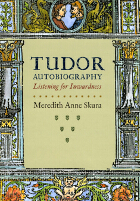 Tudor Autobiography: Listening for Inwardness
Meredith Anne Skura
University of Chicago Press, 2008 Histories of autobiography in England often assume the genre hardly existed before 1600. But Tudor Autobiography investigates eleven sixteenth-century English writers who used sermons, a saint’s biography, courtly and popular verse, a traveler’s report, a history book, a husbandry book, and a supposedly fictional adventure novel to share the secrets of the heart and tell their life stories.
In the past such texts have not been called autobiographies because they do not reveal much of the inwardness of their subject, a requisite of most modern autobiographies. But, according to Meredith Anne Skura, writers reveal themselves not only by what they say but by how they say it. Borrowing methods from affective linguistics, narratology, and psychoanalysis, Skura shows that a writer’s thoughts and feelings can be traced in his or her language. Rejecting the search for “the early modern self” in life writing, Tudor Autobiography instead asks what authors said about themselves, who wrote about themselves, how, and why. The result is a fascinating glimpse into a range of lived and imagined experience that challenges assumptions about life and autobiography in the early modern period.
Tuhami: Portrait of a Moroccan
Vincent Crapanzano
University of Chicago Press, 1980 Tuhami is an illiterate Moroccan tilemaker who believes himself married to a camel-footed she-demon. A master of magic and a superb story-teller, Tuhami lives in a dank, windowless hovel near the kiln where he works. Nightly he suffers visitations from the demons and saints who haunt his life, and he seeks, with crippling ambivalence, liberation from 'A'isha Qandisha, the she-demon.
In a sensitive and bold experiment in interpretive ethnography, Crapanzano presents Tuhami's bizarre account of himself and his world. In so doing, Crapanzano draws on phenomenology, psychoanalysis, and symbolism to reflect upon the nature of reality and truth and to probe the limits of anthropology itself. Tuhami has become one of the most important and widely cited representatives of a new understanding of the whole discipline of anthropology.
 Tuition Rising: Why College Costs So Much, With a New Preface
Ronald G. Ehrenberg
Harvard University Press, 2002 America’s colleges and universities are the best in the world. They are also the most expensive. Tuition has risen faster than the rate of inflation for the past thirty years. There is no indication that this trend will abate.
Ronald G. Ehrenberg explores the causes of this tuition inflation, drawing on his many years as a teacher and researcher of the economics of higher education and as a senior administrator at Cornell University. Using incidents and examples from his own experience, he discusses a wide range of topics including endowment policies, admissions and financial aid policies, the funding of research, tenure and the end of mandatory retirement, information technology, libraries and distance learning, student housing, and intercollegiate athletics.
He shows that colleges and universities, having multiple, relatively independent constituencies, suffer from ineffective central control of their costs. And in a fascinating analysis of their response to the ratings published by magazines such as U.S. News & World Report, he shows how they engage in a dysfunctional competition for students.
In the short run, colleges and universities have little need to worry about rising tuitions, since the number of qualified students applying for entrance is rising even faster. But in the long run, it is not at all clear that the increases can be sustained. Ehrenberg concludes by proposing a set of policies to slow the institutions’ rising tuitions without damaging their quality.
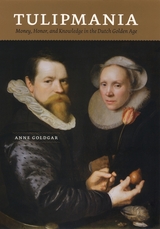 Tulipmania: Money, Honor, and Knowledge in the Dutch Golden Age
Anne Goldgar
University of Chicago Press, 2007 In the 1630s the Netherlands was gripped by tulipmania: a speculative fever unprecedented in scale and, as popular history would have it, folly. We all know the outline of the story—how otherwise sensible merchants, nobles, and artisans spent all they had (and much that they didn’t) on tulip bulbs. We have heard how these bulbs changed hands hundreds of times in a single day, and how some bulbs, sold and resold for thousands of guilders, never even existed. Tulipmania is seen as an example of the gullibility of crowds and the dangers of financial speculation.
But it wasn’t like that. As Anne Goldgar reveals in Tulipmania, not one of these stories is true. Making use of extensive archival research, she lays waste to the legends, revealing that while the 1630s did see a speculative bubble in tulip prices, neither the height of the bubble nor its bursting were anywhere near as dramatic as we tend to think. By clearing away the accumulated myths, Goldgar is able to show us instead the far more interesting reality: the ways in which tulipmania reflected deep anxieties about the transformation of Dutch society in the Golden Age.
“Goldgar tells us at the start of her excellent debunking book: ‘Most of what we have heard of [tulipmania] is not true.’. . . She tells a new story.”—Simon Kuper, Financial Times
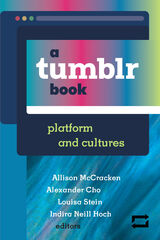 a tumblr book: platform and cultures
Allison McCracken, Alexander Cho, Louisa Stein, and Indira Neill Hoch, editors
University of Michigan Press, 2020 This book takes an extensive look at the many different types of users and cultures that comprise the popular social media platform Tumblr. Though it does not receive nearly as much attention as other social media such as Twitter or Facebook, Tumblr and its users have been hugely influential in creating and shifting popular culture, especially progressive youth culture, with the New York Times referring to 2014 as the dawning of the “age of Tumblr activism.”
Perfect for those unfamiliar with the platform as well as those who grew up on it, this volume contains essays and artwork that span many different topics: fandom; platform structure and design; race, gender and sexuality, including queer and trans identities; aesthetics; disability and mental health; and social media privacy and ethics. An entire generation of young people that is now beginning to influence mass culture and politics came of age on Tumblr, and this volume is an indispensable guide to the many ways this platform works.
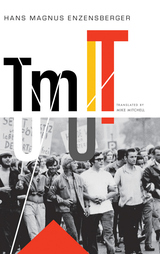 Tumult
Hans Magnus Enzensberger
Seagull Books, 2016 A collection of writings based on Enzensberger’s personal experience as a left-wing sympathizer during the 1960s.
Hans Magnus Enzensberger, widely regarded as Germany’s greatest living poet, was already well known in the 1960s, the tempestuous decade of which Tumult is an autobiographical record. Derived from old papers, notes, jottings, photos, and letters that the poet stumbled upon years later in his attic, the volume is not so much about the man, but rather the many places he visited and people whom he met on his travels through the Soviet Union and Cuba during the 1960s. The book is made up of four long-form pieces written from 1963 to 1970, each episode concluding with a poem and postscript written in 2014. Translated by Mike Mitchell, the book is a lively and deftly written travelogue offering a glimpse into the history of leftist thought. Dedicated to “those who disappeared,” Tumult is a document of that which remains one of humanity’s headiest times.
Tumultuous Years: The Presidency of Harry S. Truman, 1949-1953
Robert J. Donovan
University of Missouri Press, 1996 “In January of 1949 the aftershocks of the Second World War were still jarring large parts of the globe, although they had greatly diminished in the United States. In Asia, however, turbulence continued to rise as a result of the collapse of Japan, the tottering of the European empires after the war, and the combustion produced by nationalism mixed with communism. Because a segment of American opinion, generally represented in the more conservative wing of the Republican party, was very sensitive to events in Asia, the tremors in the Far East came as harbingers of disturbing political conflict in the United States.” Robert J. Donovan’s Tumultuous Years presents a detailed account of Harry S. Truman’s presidency from 1949-1953.
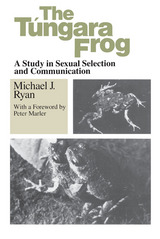 The Tungara Frog: A Study in Sexual Selection and Communication
Michael J. Ryan
University of Chicago Press, 1985 In a Panamanian pond, male túngara frogs (Physalaemus pustulosus) gather in choruses, giving their "advertisement" call to the females that move among them. If a female chooses to make physical contact with a male, he will clasp her and eventually fertilize her eggs. But in vying for the females, the males whose calls are most attractive may also attract the interest of another creature: the fringe-lipped bat, a frog eater.
In TheTúngara Frog, the most detailed and informative single study available of frogs and their reproductive behavior, Michael J. Ryan demonstrates the interplay of sexual and natural selection. Using techniques from ethology, behavioral ecology, sensory physiology, physiological ecology, and theoretical population genetics in his research, Ryan shows that large males with low-frequency calls mate most successfully. He examines in detail a number of explanations for the females' preferences, and he considers possible evolutionary forces leading to the males' success.
Though certain vocalizations allow males to obtain mates and thus should be favored by sexual selection, this study highlights two important costs of such sexual displays: the frogs expand considerable energy in their mating calls, and they advertise their whereabouts to predators. Ryan considers in detail how predators, especially the frige-lipped bat (Trachops cirrhosus), affect the evolution of the túngara frog's calls.
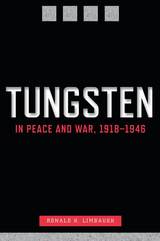 Tungsten in Peace and War, 1918–1946
Ronald H. Limbaugh
University of Nevada Press, 2011 Tungsten is a rare ferrous metal whose ability to form molecular compounds with other elements has made it one of the essential elements in steelmaking, electronics, and various military technologies. This is the first comprehensive study of the use of tungsten and its role in modern technology, politics, and international trade. The book combines a detailed general overview of tungsten’s uses in science and technology with a history of tungsten mining in the U.S. and elsewhere; international competition for tungsten supplies, especially between the two world wars of the twentieth century; and the complex national and international politics involved in supporting and protecting the U.S. tungsten supply and tungsten-mining industry. Tungsten in Peace and War, 1918–1946 is a significant addition to the history of technology and a revelation of the complex role that tungsten and other critical metals play in national and international politics and in the world economy.
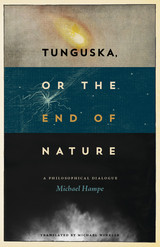 Tunguska, or the End of Nature: A Philosophical Dialogue
Michael Hampe
University of Chicago Press, 2015 On June 30, 1908, a mysterious explosion erupted in the skies over a vast woodland area of Siberia. Known as the Tunguska Event, it has been a source of wild conjecture over the past century, attributed to causes ranging from meteors to a small black hole to antimatter. In this imaginative book, Michael Hampe sets four fictional men based on real-life scholars—a physicist (Günter Hasinger and Steven Weinberg), a philosopher (Paul Feyerabend), a biologist (Adolf Portmann), and a mathematician (Alfred North Whitehead)—adrift on the open ocean, in a dense fog, to discuss what they think happened. The result is a playful and highly illuminating exploration of the definition of nature, mankind’s role within it, and what its end might be.
Tunguska, Or the End of Nature uses its four-man setup to tackle some of today’s burning issues—such as climate change, environmental destruction, and resource management—from a diverse range of perspectives. With a kind of foreboding, it asks what the world was like, and will be like, without us, whether we are negligible and the universe random, whether nature can truly be explained, whether it is good or evil, or whether nature is simply a thought we think. This is a profoundly unique work, a thrillingly interdisciplinary piece of scholarly literature that probes the mysteries of nature and humans alike.
Tunica Archaeology
Jeffrey P. Brain
Harvard University Press, 1988 Sequel to Tunica Treasure, this volume presents the results of a decade of research on the Tunica Indians of Mississippi and Louisiana. The author traces the Tunica from the moment of first contact in the sixteenth century to the present day, with special emphasis on the critical eighteenth century. He describes considerable new archaeological data and integrates relevant ethnohistorical details into a reconstruction of the dynamic story of changes in American Indian culture during a historic period.
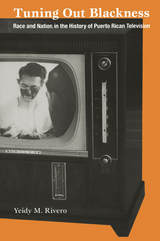 Tuning Out Blackness: Race and Nation in the History of Puerto Rican Television
Yeidy M. Rivero
Duke University Press, 2005 Tuning Out Blackness fills a glaring omission in U.S. and Latin American television studies by looking at the history of Puerto Rican television. In exploring the political and cultural dynamics that have shaped racial representations in Puerto Rico’s commercial media from the late 1940s to the 1990s, Yeidy M. Rivero advances critical discussions about race, ethnicity, and the media. She shows that televisual representations of race have belied the racial egalitarianism that allegedly pervades Puerto Rico’s national culture. White performers in blackface have often portrayed “blackness” in local television productions, while black actors have been largely excluded. Drawing on interviews, participant observation, archival research, and textual analysis, Rivero considers representations of race in Puerto Rico, taking into account how they are intertwined with the island’s status as a U.S. commonwealth, its national culture, its relationship with Cuba before the Cuban Revolution in 1959, and the massive influx of Cuban migrants after 1960. She focuses on locally produced radio and television shows, particular television events, and characters that became popular media icons—from the performer Ramón Rivero’s use of blackface and “black” voice in the 1940s and 1950s, to the battle between black actors and television industry officials over racism in the 1970s, to the creation, in the 1990s, of the first Puerto Rican situation comedy featuring a black family. As the twentieth century drew to a close, multinational corporations had purchased all Puerto Rican stations and threatened to wipe out locally produced programs. Tuning Out Blackness brings to the forefront the marginalization of nonwhite citizens in Puerto Rico’s media culture and raises important questions about the significance of local sites of television production.
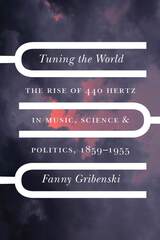 Tuning the World: The Rise of 440 Hertz in Music, Science, and Politics, 1859–1955
Fanny Gribenski
University of Chicago Press, 2023 Tuning the World tells the unknown story of how the musical pitch A 440 became the global norm.
Now commonly accepted as the point of reference for musicians in the Western world, A 440 hertz only became the standard pitch during an international conference held in 1939. The adoption of this norm was the result of decades of negotiations between countries, involving a diverse group of performers, composers, diplomats, physicists, and sound engineers. Although there is widespread awareness of the variability of musical pitches over time, as attested by the use of lower frequencies to perform early music repertoires, no study has fully explained the invention of our current concert pitch. In this book, Fanny Gribenski draws on a rich variety of previously unexplored archival sources and a unique combination of musicological perspectives, transnational history, and science studies to tell the unknown story of how A 440 became the global norm. Tuning the World demonstrates the aesthetic, scientific, industrial, and political contingencies underlying the construction of one of the most “natural” objects of contemporary musical performance and shows how this century-old effort was ultimately determined by the influence of a few powerful nations.
 Tunisian Revolutions: Reflections on Seas, Coasts, and Interiors
Julia Clancy-Smith
Georgetown University Press In December 2010 an out-of-work Tunisian street vendor, Mohamed Bouazizi, set himself on fire and precipitated the Arab Spring. Popular interpretations of Bouazizi's self-immolation presented economic and political oppression by the Ben Ali regimes as the root causes of widespread social despair that triggered the Tunisian revolution. Yet as Julia Clancy-Smith points out, Tunisia's long history of organized political activism and protest movements suggests a far more complicated set of processes. Proposing a conceptual framework of "coastalization" vs. "interiorization," Clancy-Smith examines Tunisia's last two centuries and demonstrates how geographical and environmental and social factors also lie behind that country's modern political history. Within this framework Clancy-Smith explores how Tunisia's coast became a Mediterranean playground for transnational elites, a mecca of tourism, while its interior agrarian regions suffered increasing neglect and marginalization. This distinction has had a profound impact on the fate of Tunisia and has manifested itself in divisive debates over politics, the state, and religion as well as women’s socio-legal status that have led to a series of mass civic actions culminating in revolution. Clancy-Smith proposes a fresh historical lens through which to view the relationship between spacial displacements, regionalization, and transnationalism. Georgetown Shorts—longer than an article, shorter than a book—deliver timely works of peer-reviewed scholarship in a fast-paced, agile environment. They present new ideas and original texts that are easily and widely available to students, scholars, libraries, and general readers.
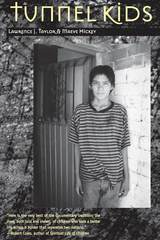 Tunnel Kids
Lawrence J. Taylor and Maeve Hickey
University of Arizona Press, 2001 Winner of the Southwest Book Award!
Beneath the streets of the U.S.-Mexico border, children are coming of age. They have come from all over Mexico to find shelter and adventure in the drainage tunnels that connect the twin cities of Nogales, Sonora, and Nogales, Arizona. This book opens up the world of the tunnel kids and tells how in this murky underworld of struggling immigrants, drug dealers, and thieves, these kids have carved out a place of their own. Two parallel tunnels— each fourteen feet wide and several miles long— drain the summer rains from Mexico to the United States. Here and in the crumbling colonias you'll meet the tunnel kids: streetwise El Boston, a six-year veteran of the tunnels; his little pal Jesús; Jesús' girlfriend, La Flor, and her six-month-old baby; wild Negra; poetic Guanatos; moody Romel and his beautiful girlfriend, La Fanta. They form an extended family of some two dozen young people who live hard-edged lives and answer to no one in El Barrio Libre— the free barrio.
Lawrence Taylor and Maeve Hickey met these kids at Mi Nueva Casa, the safe house built to draw the youths out of the tunnels and into a more normal life. The authors spent two summers with tunnel kids as they roamed all over Nogales and beyond in their struggle to survive. In the course of their adventures the kids described their lives, talking about what might tempt them to leave the tunnels— and what kept them there. Hickey's stunning portraits provide a heart-stopping counterpoint to Taylor's incisive prose. Story and photos together open a window into the life of the tunnel kids—a world like that of many homeless children, precarious and adaptive, albeit unique to the border. Where most people might see just another gang of doped-up, violent children, Taylor and Hickey discover displaced and sometimes heroic young people whose stories add a human dimension to the world of the U.S.-Mexico border.
The Tunnel of Love: A Novel
Peter De Vries
University of Chicago Press, 2015 Harking from the golden age of fiction set in American suburbia—the school of John Updike and Cheever—this work from the great American humorist Peter De Vries looks with laughter upon its lawns, its cocktails, and its slightly unreal feeling of comfort. De Vries’s classic situation comedy The Tunnel of Love follows the interactions of a socially insecure, pun-loving family man, an officious lady caseworker from an adoption agency, and a chauvinist pig—all suburban neighbors who know far too much about one another’s private lives in this goofy and gently hilarious tale of marital quibbles. Noted as much for his verbal fluidity and wordplay as for his ability to see humor through pain, De Vries will delight both new readers and old in this uproarious modern masterpiece.
Tunnel to Eternity: Beyond Near-Death
LEON RHODES
Swedenborg Foundation Publishers, 1997 From the experience of dying to awakening to tunnels, bright lights, unfamiliar realms, life reviews, and different levels of consciousness, Leon Rhodes takes the reader on a great adventure into the unknown. An officer in the International Association for Near-Death Studies (IANDS), Rhodes recounts the stories of near-death experiences (NDEs) that people have shared with him over the years. Chronicled as a source of inspiration are the profound changes that occurred in their lives after the discoveries they made.
In addition, the fascinating parallels between NDEs and the spiritual world described more than two hundred years ago by Emanuel Swedenborg provide many insights into the transition from this life to the next world. Rhodes’s unique Swedenborgian perspective broadens the discussion over the significance of the near-death phenomenon.
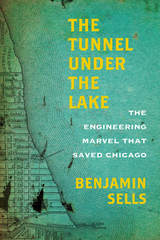 The Tunnel under the Lake: The Engineering Marvel That Saved Chicago
Benjamin Sells
Northwestern University Press, 2017 The Tunnel under the Lake recounts the gripping story of how the young city of Chicago, under the leadership of an audacious engineer named Ellis Chesbrough, constructed a two-mile tunnel below Lake Michigan in search of clean water.
Despite Chicago's location beside the world’s largest source of fresh water, its low elevation at the end of Lake Michigan provided no natural method of carrying away waste. As a result, within a few years of its founding, Chicago began to choke on its own sewage collecting near the shore. The befouled environment, giving rise to outbreaks of sickness and cholera, became so acute that even the ravages and costs of the U.S. Civil War did not distract city leaders from taking action.
Chesbrough's solution was an unprecedented tunnel five feet in diameter lined with brick and dug sixty feet beneath Lake Michigan. Construction began from the shore as well as the tunnel’s terminus in the lake. With workers laboring in shifts and with clay carted away by donkeys, the lake and shore teams met under the lake three years later, just inches out of alignment. When it opened in March 1867, observers, city planners, and grateful citizens hailed the tunnel as the "wonder of America and of the world."
Benjamin Sells narrates in vivid detail the exceptional skill and imagination it took to save this storied city from itself. A wealth of fascinating appendixes round out Sells’s account, which will delight those interested in Chicago history, water resources, and the history of technology and engineering.
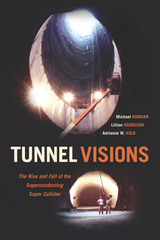 Tunnel Visions: The Rise and Fall of the Superconducting Super Collider
Michael Riordan, Lillian Hoddeson, and Adrienne W. Kolb
University of Chicago Press, 2015 Starting in the 1950s, US physicists dominated the search for elementary particles; aided by the association of this research with national security, they held this position for decades. In an effort to maintain their hegemony and track down the elusive Higgs boson, they convinced President Reagan and Congress to support construction of the multibillion-dollar Superconducting Super Collider project in Texas—the largest basic-science project ever attempted. But after the Cold War ended and the estimated SSC cost surpassed ten billion dollars, Congress terminated the project in October 1993.
Drawing on extensive archival research, contemporaneous press accounts, and over one hundred interviews with scientists, engineers, government officials, and others involved, Tunnel Visions tells the riveting story of the aborted SSC project. The authors examine the complex, interrelated causes for its demise, including problems of large-project management, continuing cost overruns, and lack of foreign contributions. In doing so, they ask whether Big Science has become too large and expensive, including whether academic scientists and their government overseers can effectively manage such an enormous undertaking.
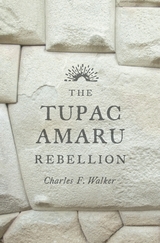 The Tupac Amaru Rebellion
Charles F. Walker
Harvard University Press, 2014 The largest rebellion in the history of Spain's American empire—a conflict greater in territory and costlier in lives than the contemporaneous American Revolution—began as a local revolt against colonial authorities in 1780. As an official collector of tribute for the imperial crown, José Gabriel Condorcanqui had seen firsthand what oppressive Spanish rule meant for Peru's Indian population. Adopting the Inca royal name Tupac Amaru, he set events in motion that would transform him into Latin America's most iconic revolutionary figure.
Tupac Amaru's political aims were modest at first. He claimed to act on the Spanish king's behalf, expelling corrupt Spaniards and abolishing onerous taxes. But the rebellion became increasingly bloody as it spread throughout Peru and into parts of modern-day Bolivia, Chile, and Argentina. By late 1780, Tupac Amaru, his wife Micaela Bastidas, and their followers had defeated the Spanish in numerous battles and gained control over a vast territory. As the rebellion swept through Indian villages to gain recruits and overthrow the Spanish corregidors, rumors spread that the Incas had returned to reclaim their kingdom.
Charles Walker immerses readers in the rebellion's guerrilla campaigns, propaganda war, and brutal acts of retribution. He highlights the importance of Bastidas—the key strategist—and reassesses the role of the Catholic Church in the uprising's demise. The Tupac Amaru Rebellion examines why a revolt that began as a multiclass alliance against European-born usurpers degenerated into a vicious caste war—and left a legacy that continues to influence South American politics today.
 The Turban and the Hat
Sonallah Ibrahim
Seagull Books, 2022 A novel of the invasion and occupation of Egypt by Napoleonic France as seen through the eyes of a young Egyptian.
The Napoleonic-era French invasion and occupation of Egypt are often seen as the Arab world’s first encounter with the military and technological prowess of the West—and it came as a terrible shock. The Turban and the Hat tells the story of those three tumultuous years from the perspective of a young Egyptian living in late-eighteenth-century Cairo. Knowing some French, he works as a translator for the occupiers. He meets their scientists and artists, has an affair with Bonaparte’s mistress, and accompanies the disastrous campaign to take Syria, where he witnesses the ravages of the plague and the horrific barbarism of war. He is astonished by the invaders’ lies and propaganda, but he finds that much of what he thought he knew about his fellow Egyptians was also an illusion. Convincing in its history but rich in themes that resonate today, The Turban and the Hat is a story of resistance, but also of collaboration, cooperation, and corruption. Sonallah Ibrahim, one of Egypt’s foremost novelists, gives us a marvelous account of the Western occupation of an Arab land, one that will resonate with contemporary readers. His portrayal of this tragic—and at times comic—“clash of civilizations” is never didactic, even as it reminds us that so many lessons of history go unlearned.
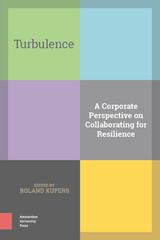 Turbulence: A Corporate Perspective on Collaborating for Resilience
Edited by Roland Kupers
Amsterdam University Press, 2014 The ever tighter coupling of our food, water and energy systems, in the context of a changing climate is leading to increasing turbulence in the world. As a consequence, it becomes ever more crucial to develop cities, regions, and economies with resilience in mind. Because of their global reach, substantial resources, and information-driven leadership structures, multinational corporations can play a major, constructive role in improving our understanding and design of resilient systems.
This volume is the product of the Resilience Action Initiative, a collaboration among Dow, DuPont, IBM, McKinsey & Co., Shell, Siemens, Swiss Re, Unilever, and Yara designed to explore possible corporate contributions to global resilience, especially at the nexus of water, food and energy. Aggressively forward-thinking, and consistent with an enlightened self-interest, the ideas considered here represent a corporate perspective on the broad collaborations required for a more resilient world.
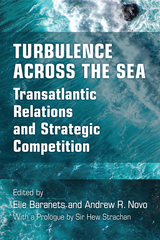 Turbulence Across the Sea: Transatlantic Relations and Strategic Competition
Edited by Elie Baranets and Andrew Novo
University of Michigan Press, 2024 Great Power competition is back. On the two sides of the Atlantic, however, this concept often means different things. While the United States is focused on China, Europe is preoccupied with Russia. Yet shifting American priorities toward Asia requires reconceptualizing the future role of NATO. In Europe, this shift has led to serious thought about how to achieve strategic autonomy that will allow Europe to guarantee its own security regardless of strategic choices made in Washington. As Chinese strategy focuses on dividing European actors and making them more economically dependent on Beijing, these developments may undermine Washington’s influence in Europe while limiting potential European action against Chinese interests.
With a mix of research methodologies applied by scholars from both sides of the Atlantic, Turbulence Across the Sea offers a comprehensive analysis of relations among European and North American actors in the context of strategic competition among the United States, Europe, Russia, and China. In doing so, it demonstrates that a reaffirmation of transatlantic cooperation is necessary to maintain security in the face of aggressive moves by both Russia and China. By analyzing attitudes from the perspective of both the various actors (Britain, France, Germany, and the European Union) and various sectors (intelligence cooperation, foreign direct investments, technology, and the defense industry), this book provides readers with a comprehensive perspective on the challenges and opportunities in the shifting landscape of security in the twenty-first century.
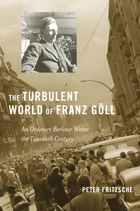 The Turbulent World of Franz Göll: An Ordinary Berliner Writes the Twentieth Century
Peter Fritzsche
Harvard University Press, 2011 Franz Göll was a thoroughly typical Berliner. He worked as a clerk, sometimes as a postal employee, night watchman, or publisher's assistant. He enjoyed the movies, ate spice cake, wore a fedora, tamed sparrows, and drank beer or schnapps. He lived his entire life in a two-room apartment in Rote Insel, Berlin's famous working-class district. What makes Franz Göll different is that he left behind one of the most comprehensive diaries available from the maelstrom of twentieth-century German life. Deftly weaving in Göll’s voice from his diary entries, Fritzsche narrates the quest of an ordinary citizen to make sense of a violent and bewildering century.
Peter Fritzsche paints a deeply affecting portrait of a self-educated man seized by an untamable impulse to record, who stayed put for nearly seventy years as history thundered around him. Determined to compose a “symphony” from the music of everyday life, Göll wrote of hungry winters during World War I, the bombing of Berlin, the rape of his neighbors by Russian soldiers in World War II, and the flexing of U.S. superpower during the Reagan years. In his early entries, Göll grappled with the intellectual shockwaves cast by Darwin, Freud, and Einstein, and later he struggled to engage with the strange lifestyles that marked Germany's transition to a fluid, dynamic, unmistakably modern society.
With expert analysis, Fritzsche shows how one man's thoughts and desires can give poignant shape to the collective experience of twentieth-century life, registering its manifold shocks and rendering them legible.
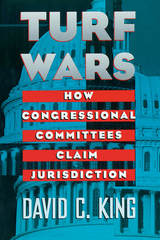 Turf Wars: How Congressional Committees Claim Jurisdiction
David C. King
University of Chicago Press, 1997 For most bills in American legislatures, the issue of turf—or which committee has jurisdiction over a bill—can make all the difference. Turf governs the flow and fate of all legislation. In this innovative study, David C. King explains how jurisdictional areas for committees are created and changed in Congress.
Political scientists have long maintained that jurisdictions are relatively static, changing only at times of dramatic reforms. Not so, says King. Combining quantitative evidence with interviews and case studies, he shows how on-going turf wars make jurisdictions fluid.
According to King, jurisdictional change stems both from legislators seeking electoral advantage and from nonpartisan House parliamentarians referring ambiguous bills to committees with the expertise to handle the issues. King brilliantly dissects the politics of turf grabbing and at the same time shows how parliamentarians have become institutional guardians of the legislative process.
Original and insightful, Turf Wars will be valuable to those interested in congressional studies and American politics more generally.
Turgenev: His Life and Times
Leonard Schapiro
Harvard University Press, 1982 Leonard Schapiro, one of the world’s most distinguished historians of the Russian past, has written the definitive biography of the enigmatic Ivan Turgenev. Based on new sources that have recently come to light in France and Russia, this work is a graceful and meticulous portrayal of the artist’s life—the personal and intellectual preoccupations of the man as he thought and formed opinions about contemporary events. Schapiro’s great achievement is his capacity to make Turgenev’s personal, political, and artistic concerns emerge whole.
The Turk in America: The Creation of an Enduring Prejudice
Justin McCarthy
University of Utah Press, 2010 Utah Series in Middle East Studies
In The Turk in America, historian Justin McCarthy seeks to explain the historical basis for American prejudice towards Turks in the nineteenth and early twentieth centuries. The volume focuses on fraudulent characterizations of Turks, mostly stemming from an antipathy in Europe and America toward non-Christians, and especially Muslims. Spanning one hundred and fifty years, this history explores the misinformation largely responsible for the negative stereotypes of Turks during this period.
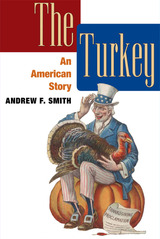 The Turkey: AN AMERICAN STORY
Andrew F. Smith
University of Illinois Press, 2006 “Talking turkey” about the bird you thought you knew Fondly remembered as the centerpiece of family Thanksgiving reunions, the turkey is a cultural symbol as well as a multi-billion dollar industry. As a bird, dinner, commodity, and as a national icon, the turkey has become as American as the bald eagle (with which it actually competed for supremacy on national insignias). Food historian Andrew F. Smith’s sweeping and multifaceted history of Meleagris gallopavo separates fact from fiction, serving as both a solid historical reference and a fascinating general read. With his characteristic wit and insatiable curiosity, Smith presents the turkey in ten courses, beginning with the bird itself (actually several different species of turkey) flying through the wild. The Turkey subsequently includes discussions of practically every aspect of the iconic bird, including the wild turkey in early America, how it came to be called “turkey,” domestication, turkey mating habits, expansion into Europe, stuffing, conditions in modern industrial turkey factories, its surprising commercial history of boom and bust, and its eventual ascension to holiday mainstay. As one of the easiest of foods to cook, the turkey’s culinary possibilities have been widely explored if little noted. The second half of the book collects an amazing array of over one hundred historical and modern turkey recipes from across America and Europe. From sandwiches to salmagundi, you’ll find detailed instructions on nearly every variation on the turkey. Historians will enjoy a look back at the varied appetites of their ancestors and seasoned cooks will have an opportunity to reintroduce a familiar food in forgotten ways.
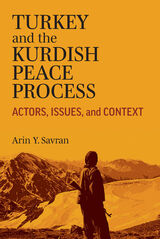 Turkey and the Kurdish Peace Process: Actors, Issues, and Context
Arin Y. Savran
University of Michigan Press, 2022 After the fall of the Ottoman Empire following World War I, the Kurds in the Middle East became the largest ethnic group in the region without a state of their own. Divided between Turkey, Syria, Iran, and Iraq, the Kurds have fought for their right to exist as a distinct national group, as well as for governing themselves. Turkey and the Kurdish Peace Process provides a historical and conceptual account of events in order to detail the key conditions, factors, and events that gave rise to the PKK (Kurdistan Workers’ Party) conflict in Turkey, as well as the conditions influencing the emergence, management, and collapse of the peace talks. Drawing from conflict resolution theories, this book investigates the transformation of key conflict actors and changes, over time, in their approach to the main conflict issues.
Moreover, Arin Y. Savran expands the concept of conflict transformation to encompass the ideological transformation of a movement as a result of a rigorous and deep intellectual epiphany on the part of the political leaders—a phenomenon that is unusual and little is known about, making it all the more relevant to include in future theoretical approaches in peace process studies. Methodologically, she rethinks conflict transformation/resolution approaches to focus on shifts in beliefs and relationships that occur prior to a peace process or the start of peace negotiations, when often much focus on peace processes is on the post-agreement phase. This book is among the first comprehensive, scholarly accounts to date (in the English language) that analyzes the Kurdish peace process.
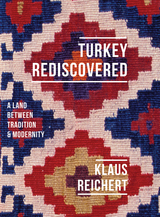 Turkey Rediscovered: A Land between Tradition and Modernity
Klaus Reichert
Haus Publishing, 2015 This book, available for the first time in English, is an exhilarating journey through Turkey’s history and a perceptive look at the interactions between secularism, religion, and multiethnic identity.
Without a guide and driven only by his own curiosity, Klaus Reichert travels to Anatolia, Istanbul, and the Aegean coast. He explores the strip of land where Adam and Eve are said to have settled after their expulsion from the Garden of Eden, and where Moses struck water from stone. While following in the footsteps of the brilliant architect Mimar Sinan and investigating the mysteries of his mosques, Reichert speaks to an old stonemason and a young teacher, visits one of the last remaining colonies of a rare breed of ibis, and walks the wide expanses surrounding the archaeological sites of western Turkey. Finally, he draws parallels between Kilim weaving, minimal music, and modernity as a whole. Under Reichert’s gaze, what is seen and learned becomes a colorful and provocative collection of images and patterns.
A one-of-a-kind travelogue that touches on Turkey’s traditions, natural history, and political divisions, Turkey Rediscovered shows us a new side to a land we thought we already knew.
Turkey Reframed: Constituting Neoliberal Hegemony
Baris Ozden
Pluto Press, 2013 Turkey Reframed documents the first decade of the 2000s, a period of radical change in Turkish society and politics, which has been marked by the major economic crisis of 2001 and the coming to power of ex-Islamist cadres organised under the Justice and Development Party (AKP).
The contributors analyse this period of radical change, with its continuities and breaks, and its main actor, the AKP, in relation to the creation of a neoliberal hegemony in post-1980 Turkey. They look at the conflictual, turbulent and painful history of neoliberal hegemony and the contested stabilisation strategy of the AKP government.
Turkey Reframed is a cutting-edge guide for students, scholars and other interested readers who want to understand this period in Turkey’s recent history and its social tensions.
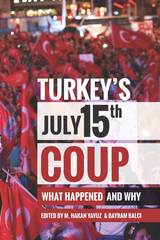 Turkey's July 15th Coup: What Happened and Why
Edited by M. Hakan Yavuz and Bayram Balci
University of Utah Press, 2018 Utah Series in Middle East Studies
On July 15, 2016, a faction of the Turkish military attempted to overthrow the government of President Recep Tayyip Erdoğan. The Turkish government blamed the unsuccessful coup attempt on Gülenists, adherents of an Islamist movement led by Fethullah Gülen. They had helped elect Erdoğan and his AK Party, with the goal of bringing an ostensibly “soft” version of Islam into the secular Turkish government. In alliance with the AK Party, Gülenists steadfastly increased their representation in various government institutions, including the military, the police, and the judiciary. This volume focuses on the historical and sociopolitical contexts of the Gülen Movement’s origins and political ascendancy along with its possible role in the failed coup.
Editors Yavuz and Balcı are among the first international scholars to have studied the movement from its nascent stages in Turkey. The volume's contributors include scholars who have researched the movement in Turkey, Central Asia, and the Balkans. The result is a comprehensive, timely assessment of numerous dimensions of Gülenist activities, including its social and political networks and the institutions that supported the movement as it became a major economic and educational force in Turkey and elsewhere. This volume reflects exchanges among scholars who having studied the Gülenists, assembled to discuss how and why the movement became belligerent opponents of Erdoğan’s government, and it addresses questions such as how this major, still continuing disruption in Turkey’s politics will affect not only the future of the movement but also that of Turkey's embattled democracy as well.
Turkey's 'Self' and 'Other' Definitions in the Course of the EU Accession Process
Melek Saral
Amsterdam University Press, 2017 While Turkey in recent years has experienced an exhaustive accession process to join the EU -a long desired aim-, at the same time it has been increasing its involvement across the Middle East, leading to a debate over whether it is altering its focus from West to East. This book reveals that a shift in focus can be seen through analysis of the Turkish political elites' definitions of "self" and "other" that were established as part of the EU accession process. Melek Saral uses these definitions to help us better understand the shift that Turkey is currently undergoing.
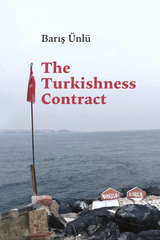 The Turkishness Contract
Baris Ünlü
Temple University Press, 2025 The Turkishness Contract places Critical Race Theory in conversation with literature on Turkey and nation-state making via a historical study enriched by in-depth interviews. In this new English-language edition, Barış Ünlü makes a number of comprehensive changes to his widely read and much discussed 2018 Turkish book, including a new preface and a new sweeping and theoretical introduction.
Ünlü uses Critical Race Theory to present a historical–sociological model to examine not only the historical constitution and contemporary functioning of the Turkish nation-state, but also the affective and bodily modalities of being Turkish. He also develops a framework for rethinking the complex relations between the socio-genesis of the Turkish nation and state and the psycho-genesis of the Turkish people, their cognitive habits and emotional orientations, and the structural privileges and unconsciousness strategies of Turkishness.
The Turkishness Contract addresses broader theoretical concerns including histories of colonialism, ethnic/racial social contracts, privilege, Armenian Genocide and the Kurdish question, as well as the unraveling of Turkey’s social contract at a moment of contemporary right-wing authoritarianism.
In the series Critical Race, Indigeneity, and Relationality
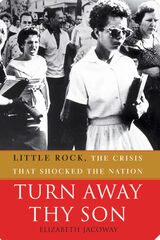 Turn Away Thy Son: Little Rock, The Crisis that Shocked the Nation
Elizabeth Jacoway
University of Arkansas Press, 2007 “This is a mesmerizing and brave book, a story with complicated layers and meaning for all Americans, a heroic saga of progress and its consequences.”
—Ken Burns, director of Jazz and The War In September 1957 nine black children tried to integrate Arkansas’s Little Rock Central High School in accordance with the Supreme Court’s decision in Brown v. Board of Education. Claiming he was acting to keep the peace, Gov. Orval Faubus used the Arkansas National Guard to keep them out of the school. After a lengthy standoff, President Eisenhower called in the 101st Airborne and reluctantly, slowly, but forcibly began to integrate the school. The standoff became a rallying cry for Southern segregationists and a marker of the country’s shame. The accounts that have been so mythologized over the years leave people embarrassed and angry, yet the myth is a cardboard cutout of the full story. Turn Away Thy Son, told from the point of view of sixteen key participants, brings the nine students, their tormentors, the school administration, the governor, and the press to vivid life. It shows the truth about Little Rock, beyond the caricatures to the fundamental driving forces that made school desegregation the hottest of hot-button issues in the Jim Crow South. Turn Away Thy Son was originally published by Free Press in 2007.
Winner of the 2008 Booker Worthen Literary Prize.
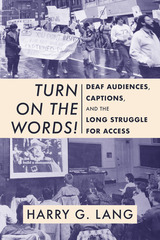 Turn on the Words!: Deaf Audiences, Captions, and the Long Struggle for Access
Harry G. Lang
Gallaudet University Press, 2021 The story of how captioning came into the lives of deaf and hard of hearing people has not been told with any detail, though captions are one of the greatest technological advancements in the effort to improve access to films, television, and other video content for both deaf and hearing audiences. In Turn on the Words!, Harry G. Lang documents the struggles and strategies over nearly a century to make spoken communication accessible through the use of captioning technology.
Lang describes the legislation, programs, and people who contributed great ingenuity and passion over decades to realize widespread access to captions, one breakthrough at a time. He also chronicles the resistance to captioned films from Hollywood studios and others, and the Deaf and hearing activists who championed the right to access. Deaf, hard of hearing, disabled, and English-as-a-second-language audiences now experience improved access to the educational, occupational, and cultural benefits of film and television programming. The struggle continues as deaf audiences advocate for equal access in a variety of settings such as movie theaters and online video-sharing platforms. This is a history of technological innovation, as well as a testament to the contributions of the Deaf community to the benefit of society as a whole.
This book has been made possible in part by the National Endowment for the Humanities: Exploring the human endeavor. Any views, findings, conclusions, or recommendations expressed in this book do not necessarily represent those of the National Endowment for the Humanities.
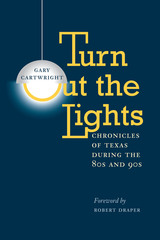 Turn Out the Lights: Chronicles of Texas during the 80s and 90s
By Gary Cartwright
University of Texas Press, 2000 Whether the subject is Jack Ruby, Willie Nelson, or his own leukemia-stricken son Mark, when it comes to looking at the world through another person's eyes, nobody does it better than Gary Cartwright. For over twenty-five years, readers of Texas Monthly have relied on Cartwright to tell the stories behind the headlines with pull-no-punches honesty and wry humor. His reporting has told us not just what's happened over three decades in Texas, but, more importantly, what we've become as a result. This book collects seventeen of Cartwright's best Texas Monthly articles from the 1980s and 1990s, along with a new essay, "My Most Unforgettable Year," about the lasting legacy of the Kennedy assassination. He ranges widely in these pieces, from the reasons for his return to Texas after a New Mexican exile to profiles of Kris Kristofferson and Willie Nelson. Along the way, he strolls through San Antonio's historic King William District; attends a Dallas Cowboys old-timers reunion and the Holyfield vs. Foreman fight; visits the front lines of Texas' new range wars; gets inside the heads of murderers, gamblers, and revolutionaries; and debunks Viagra miracles, psychic surgery, and Kennedy conspiracy theories. In Cartwright's words, these pieces all record "the renewal of my Texas-ness, a rediscovery of Texas after returning home."
Turn Thanks: POEMS
Lorna Goodison
University of Illinois Press, 1999 The lyric energy, compassion, humor, and tenderness that characterize Lorna Goodison's work are once again in evidence in Turn Thanks, her seventh collection. Here the Jamaican poet turns to acknowledge her own ancestors and those of her craft: mother and father, aunts and uncles, Africa, William Wordsworth, Vincent Van Gogh, the Wild Woman. "Whether you will receive this letter or not I cannot tell," she writes. "Still, I intend to send it . . . "
Turncoat
Molly Bendall
Omnidawn, 2025 Poems set in a state of heavy surveillance as the speaker navigates uncertainty and shifting realities.
Through the poems in Turncoat, Molly Bendall’s sixth collection, the speaker and other figures dwell under the ever-present eye of surveillance by unspecified authorities. Mistrust and dread become part of the fabric of their lives, as they never know who may be a turncoat—a person who disguises her allegiances and traffics in betrayal. These poems employ an invented paranoid syntax meant to evade oppressive surveillance. A series of intimate and darkly humorous incidents press the speaker to continually adapt to unseen—or even nonexistent—dangers. Haunted by a sense of disorientation and uncertainty about whether old friendships may have been compromised, or if spaces could disappear overnight, Bendall’s poems coax the reader to step across boundaries and snares, alternating between episodes of interrogation and flight.
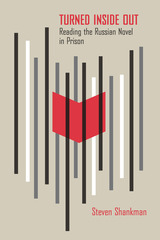 Turned Inside Out: Reading the Russian Novel in Prison
Steven Shankman
Northwestern University Press, 2017 In Turned Inside Out: Reading the Russian Novel in Prison, Steven Shankman reflects on his remarkable experience teaching texts by Fyodor Dostoevsky, Vasily Grossman, and Emmanuel Levinas in prison to a mix of university students and inmates. These persecuted writers—Shankman argues that Dostoevsky’s and Levinas’s experiences of incarceration were formative—describe ethical obligation as an experience of being turned inside out by the face-to-face encounter. Shankman relates this experience of being turned inside out to the very significance of the word “God,” to Dostoevsky’s tormented struggles with religious faith, to Vasily Grossman’s understanding of his Jewishness in his great novel Life and Fate, and to the interpersonal encounters the author has witnessed reading these texts with his students in the prison environment.
Turned Inside Out will appeal to readers with interests in the classic novels of Russian literature, in prisons and pedagogy, or in Levinas and phenomenology. At a time when the humanities are struggling to justify the centrality of their mission in today’s colleges and universities, Steven Shankman by example makes an undeniably powerful case for the transformative power of reading great texts.
Turner and the Sublime
Andrew Wilton
University of Chicago Press, 1981 Throughout his life Turner was profoundly influenced by the eighteenth-century aesthetic theory of the "sublime." However, as Andrew Wilton now shows, the sublime was not merely a springboard for Turner's innovations; he reinterpreted the theory with great individualism and offered it to the world as a fresh and even more far-reaching philosophy of art.
The 140 illustrations, which include 32 in color, reproduce watercolors and prints that demonstrate the development of Turner's response to the sublime in areas as various as architecture, the picturesque, the "terrific," the sea, cities, mountains, and lakes. Many of the subjects have not previously been published.
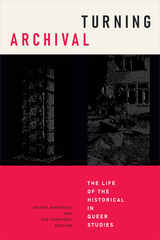 Turning Archival: The Life of the Historical in Queer Studies
Daniel Marshall and Zeb Tortorici, editors
Duke University Press, 2022 The contributors to Turning Archival trace the rise of “the archive” as an object of historical desire and study within queer studies and examine how it fosters historical imagination and knowledge. Highlighting the growing significance of the archival to LGBTQ scholarship, politics, and everyday life, they draw upon accounts of queer archival encounters in institutional, grassroots, and everyday repositories of historical memory. The contributors examine such topics as the everyday life of marginalized queer immigrants in New York City as an archive; secondhand vinyl record collecting and punk bootlegs; the self-archiving practices of grassroots lesbians; and the decolonial potential of absences and gaps in the colonial archives through the life of a suspected hermaphrodite in colonial Guatemala. Engaging with archives from Africa to the Americas to the Arctic, this volume illuminates the allure of the archive, reflects on that which resists archival capture, and outlines the stakes of queer and trans lives in the archival turn.
Contributors. Anjali Arondekar, Kate Clark, Ann Cvetkovich, Carolyn Dinshaw, Kate Eichhorn, Javier Fernández-Galeano, Emmett Harsin Drager, Elliot James, Marget Long, Martin F. Manalansan IV, Daniel Marshall, María Elena Martínez, Joan Nestle, Iván Ramos, David Serlin, Zeb Tortorici
 Turning Away: The Poetics of an Ancient Gesture
Benjamin A. Saltzman
University of Chicago Press, 2026 A sweeping account of how we are at our most human when we turn away from the pains of the world.
Why do we look away from the suffering of others? Why do we cover our faces in shame? Why do we lower our heads in grief? Few gestures are as universal as the averted gaze. Fewer still are as ambivalent and inscrutable. In this incisive study, Benjamin A. Saltzman reveals how the kaleidoscopic appearance of these gestures in art, poetry, and philosophy has turned them into an essential language for our uncomfortable engagements with the world, challenging us to reflect on the ways we fundamentally relate to others.
Into the horizon of contemporary discourse, Turning Away sets out from five influential episodes in which figures avert their gaze: Timanthes’s Sacrifice of Iphigenia, Plato’s Republic, Augustine’s Confessions, Christ’s Crucifixion, and the Fall and Expulsion of Adam and Eve. The gestures of aversion in these episodes refract across visual media, through philosophy and politics, into modernity and the present day, having been reimagined along the way by thinkers like Hannah Arendt, artists like Marc Chagall and Salvador Dalí, poets like Langston Hughes, and many others. Saltzman offers a timely critique of the privilege of turning away and of the too-easy condemnation of our tendencies to do so.
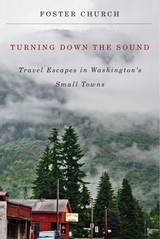 Turning Down the Sound: Travel Escapes in Washington's Small Towns
Foster Church
Oregon State University Press, 2014 In his new travelogue, Foster Church guides adventurers—lifelong residents of the Northwest and visitors alike—to the small communities beyond the state’s well-known urban center.
As in his previous book, Discovering Main Street: Travel Adventures in Small Towns of the Northwest, Church employs the finesse of his Pulitzer-Prize-winning journalism. He also shares his passion for encouraging tourists down less traveled paths—paths that curve beside valleys and wheat fields, travel along orchards and straits, and abut mountains and rivers.
Once inside these small towns, local flavors abound. Church reveals how each community’s unique character informs its hospitality and culture: In Morton, the abandoned Roxy movie theater was re-opened to host lectures and live performances. In the town of Palouse, a once-lonesome farming community in the Washington wheat country is now home to antiques shops and art galleries, and in Pomeroy, a pioneering legacy is celebrated in a lively annual festival.
With maps, photographs, and recommendations for more than thirty-five towns in all corners of the state, Turning Down the Sound vastly expands the resources available for readers and travelers keen on encountering what Church calls American tourism’s last frontier: its small towns.
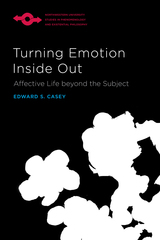 Turning Emotion Inside Out: Affective Life beyond the Subject
Edward S. Casey
Northwestern University Press, 2022 In Turning Emotion Inside Out, Edward S. Casey challenges the commonplace assumption that our emotions are to be located inside our minds, brains, hearts, or bodies. Instead, he invites us to rethink our emotions as fundamentally, although not entirely, emerging from outside and around the self, redirecting our attention from felt interiority to the emotions located in the world around us, beyond the confines of subjectivity. This book begins with a brief critique of internalist views of emotion that hold that feelings are sequestered within a subject. Casey affirms that while certain emotions are felt as resonating within our subjectivity, many others are experienced as occurring outside any such subjectivity. These include intentional or expressive feelings that transpire between ourselves and others, such as an angry exchange between two people, as well as emotions or affects that come to us from beyond ourselves. Casey claims that such far‑out emotions must be recognized in a full picture of affective life. In this way, the book proposes to “turn emotion inside out.”
 Turning Gardens in Japan into Japanese Gardens: Nation, Nature, Heritage, and Modernity since the 1890s
Christian Tagsold
Amsterdam University Press, 2025 In the mid nineteenth century, as Japan rapidly modernized, garden building declined in popularity. Only in the late nineteenth century did a new class of political and business leaders revive interest in horticulture, seeking garden designs that broke away from established patterns. As a result, these innovative gardens were largely overlooked by early Japanese garden historians and excluded from the canon they sought to establish.
In recent years, both scholars and the public have begun to reexamine and appreciate these gardens and their creators. Now recognized as part of Japan’s national heritage, these sites are being integrated into the history of Japanese horticulture. Christian Tagsold’s book examines this rediscovery, unraveling the complex dynamics of nature, heritage, nationhood, and modernity in Japan through the lens of these gardens.
 The Turning Key: Autobiography and the Subjective Impulse since 1800
Jerome H. Buckley
Harvard University Press, 1984 A noted scholar considers here a broad range of English autobiographical writing since 1800. Jerome Hamilton Buckley discusses not only autobiographies proper but also novels and poems animated by the subjective impulse. Drawing from time to time on American and Continental European writers, he focuses on British autobiographers, especially those, like Wordsworth, concerned with a larger psychological or spiritual dimension to their personal experience. With economy and grace, he examines the work of Darwin, Ruskin, Mill, Newman, C. S. Lewis, Bertrand Russell, and Edwin Muir. He discusses also the roleplaying and self-creation of Oscar Wilde, George Moore, Edmund Gosse, and Henry Adams. Variations in the autobiographical novel are described, with special attention to Dickens, George Eliot, Lawrence, and Joyce. Buckley concludes by exploring the differences between the principal Victorian poets and the confessional poets of today in their attitudes toward subjectivity.
Buckley reaffirms traditional notions—that the self exists and persists through its vicissitudes, that autobiography, for the most part, reflects or represents a pre-existing self rather than creating it, and that the self is rooted in history and in the objective social and physical world. No other book has attempted to place autobiography in a similar perspective, and none combines analysis of specific autobiographies with a regard for the function of subjectivity and a concern for its cultural consequences.
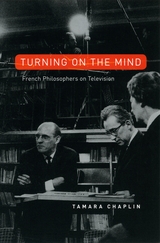 Turning On the Mind: French Philosophers on Television
Tamara Chaplin
University of Chicago Press, 2007 In 1951, the eight o’clock nightly news reported on Jean-Paul Sartre for the first time. By the end of the twentieth century, more than 3,500 programs dealing with philosophy and its practitioners—including Bachelard, Badiou, Foucault, Lyotard, and Lévy—had aired on French television. According to Tamara Chaplin, this enduring commitment to bringing the most abstract and least visual of disciplines to the French public challenges our very assumptions about the incompatibility of elite culture and mass media. Indeed, it belies the conviction that television is inevitably anti-intellectual and the quintessential archenemy of the book. Chaplin argues that the history of the televising of philosophy is crucial to understanding the struggle over French national identity in the postwar period. Linking this history to decolonization, modernization, and globalization, Turning On the Mind claims that we can understand neither the markedly public role that philosophy came to play in French society during the late twentieth century nor the renewed interest in ethics and political philosophy in the early twenty-first unless we acknowledge the work of television. Throughout, Chaplin insists that we jettison presumptions about the anti-intellectual nature of the visual field, engages critical questions about the survival of national cultures in a globalizing world, and encourages us to rethink philosophy itself, ultimately asserting that the content of the discipline is indivisible from the new media forms in which it has found expression.
Turning over a New Leaf: Change and Development in the Medieval Book
Erik Kwakkel
Amsterdam University Press, 2012 Books before print – manuscripts – were modified continuously throughout the medieval period. Focusing on the ninth and twelfth centuries, this volume explores such material changes as well as the varying circumstances under which handwritten books were produced, used and collected. An important theme is the relationship between the physical book and its users. Can we reflect on reading practices through an examination of the layout of a text? To what extent can we use the contents of libraries to understand the culture of the book? The volume explores such issues by focusing on a broad palette of texts and through a detailed analysis of manuscripts from all corners of Europe.
 A Turning Point in Higher Education: The Inaugural Address of Charles William Eliot
Charles William Eliot
Harvard University Press As American colleges and universities again examine their traditions and their future, Charles William Eliot's address is of special interest. His views on the aims of education, the obligations of the university, the role of the faculty, and the responsibilities of the administration make pertinent reading for those involved in the present academic situation, while his feelings about undergraduate manners and morals and about the education of women exemplify the striking changes of the past hundred years.
As Nathan Pusey notes, “Mr. Eliot speaks of university work in a way we can understand, and the sound of his inspiring phrases, although intended for another generation, comes down to us with a brightness and clarity which can be an inspiration to our time. If the true worth of a speech is to be measured by its constructive effect, President Eliot's inaugural is surely one of the very great addresses in the literature of American higher education.”
 Turning Points in Modern Times: Essays on German and European History
Karl Bracher
Harvard University Press, 1995 Turning Points in Modern Times focuses on events after 1917: the rise of Nazism on the Right and authoritarianism on the Left. Bracher provides an incisive framework for understanding the great ideological confrontation of this century--democracy versus totalitarianism in the forms of fascism, Nazism, and communism. His analysis of the outcomes underscores the significance and power of democratic values and governments.
The doyen of German political history, Karl Dietrich Bracher extends the argument against dictatorship that runs through his life's work, offers a blueprint for dealing with the recent past of the communist East German State (DDR), looks at the true facts of the Stasi collaboration, and challenges misperceptions of Hitler, Stalin, and others. He demonstrates the kinship between fascism and communism, considers Weimar and liberalism, assesses the legacy of Nazism, and outlines the ethos of democracy. In all this Bracher exposes the twentieth-century threats to the democratic state so that they can never again subvert representative government.
A founder of the new history of Germany, which considers the larger context for Hitler and illuminates events through the theories of social science and the values of liberalism and democracy, Bracher writes in the tradition of Acton, Burckhardt, Croce, and Dahrendorf. This is a vital history lesson for our turbulent times, when once more democracy is on the march after a twilight century.
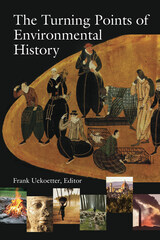 The Turning Points of Environmental History
Frank Uekotter
University of Pittsburgh Press, 2010 From the time when humans first learned to harness fire, cultivate crops, and domesticate livestock, they have altered their environment as a means of survival. In the modern era, however, natural resources have been devoured and defiled in the wake of a consumerism that goes beyond mere subsistence. In this volume, an international group of environmental historians documents the significant ways in which humans have impacted their surroundings throughout history.
John McNeill introduces the collection with an overarching account of the history of human environmental impact. Other contributors explore the use and abuse of the earth’s land in the development of agriculture, commercial forestry, and in the battle against desertification in arid and semi-arid regions. Cities, which first appeared some 5,500 years ago, have posed their own unique environmental challenges, including dilemmas of solid waste disposal, sewerage, disease, pollution, and sustainable food and water supplies.
The rise of nation-states brought environmental legislation, which often meant “selling off” natural resources through eminent domain. Perhaps the most damaging environmental event in history resulted from a “perfect storm” of effects: cheap fossil fuels (especially petroleum) and the rapid rise of personal incomes during the 1950s brought an exponential increase in energy consumption and unforseen levels of greenhouse gasses to the earth’s atmosphere. By the 1970s, the deterioration of air, land, and water due to industrialization, population growth, and consumerism led to the birth of the environmental and ecological movements.
Overall, the volume points to the ability and responsibility of humans to reverse the course of detrimental trends and to achieve environmental sustainability for existing and future populations.
Turning Points of the American Civil War
Edited by Chris Mackowski and Kristopher D. White, with a foreword by Thomas A. Desjardin
Southern Illinois University Press, 2017 Contributors to this collection, public historians with experience at Civil War battle sites, examine key shifts in the Civil War and the context surrounding them to show that many chains of events caused the course of the war to change: the Federal defeats at First Bull Run and Ball’s Bluff, the wounding of Joseph Johnston at Seven Pines and the Confederate victory at Chancellorsville, the issuance of the Emancipation Proclamation, the Federal victory at Vicksburg, Grant’s decision to move on to Richmond rather than retreat from the Wilderness, the naming of John B. Hood as commander of the Army of Tennessee, and the 1864 presidential election. In their conclusion, the editors suggest that the assassination of Abraham Lincoln might have been the war’s final turning point.
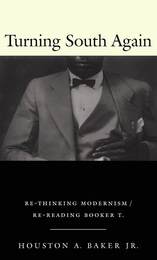 Turning South Again: Re-Thinking Modernism/Re-Reading Booker T.
Houston A. Baker Jr.
Duke University Press, 2001 In Turning South Again the distinguished and award-winning essayist, poet, and scholar of African American literature Houston A. Baker, Jr. offers a revisionist account of the struggle for black modernism in the United States. With a take on the work of Booker T. Washington and the Tuskegee Institute surprisingly different from that in his earlier book Modernism and the Harlem Renaissance, Baker combines historical considerations with psychoanalysis, personal memoir, and whiteness studies to argue that the American South and its regulating institutions—particularly that of incarceration—have always been at the center of the African American experience.
From the holds of slave ships to the peonage of Reconstruction to the contemporary prison system, incarceration has largely defined black life in the United States. Even Washington’s school at Tuskegee, Baker explains, housed and regulated black bodies no longer directly controlled by slave owners. He further implicates Washington by claiming that in enacting his ideas about racial “uplift,” Washington engaged in “mulatto modernism,” a compromised attempt at full citizenship. Combining autobiographical prose, literary criticism, psychoanalytic writing, and, occasionally, blues lyrics and poetry, Baker meditates on the consequences of mulatto modernism for the project of black modernism, which he defines as the achievement of mobile, life-enhancing participation in the public sphere and economic solvency for the majority of African Americans. By including a section about growing up in the South, as well as his recent return to assume a professorship at Duke, Baker contributes further to one of the book’s central concerns: a call to centralize the South in American cultural studies.
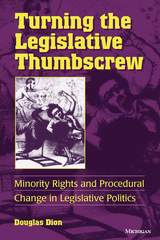 Turning the Legislative Thumbscrew: Minority Rights and Procedural Change in Legislative Politics
Douglas Dion
University of Michigan Press, 2001 The use of filibusters in the U.S. Senate by small numbers of members to prevent legislative action apparently desired by a majority of the members--as evidenced by the battles over civil rights legislation in the 1950s and 1960s--is legendary. Similar situations have existed in other legislative bodies over time. The fear that they will at some time be in the minority has inhibited actions by the majority groups to control the right of minority groups to block legislative action. And yet from time to time the majority in a legislative body has forced a change in the rules to control the rights of the minority. When does the majority seek to limit minority rights to obstruct legislation? Douglas Dion, in a unique study, develops a formal model to set out the conditions under which majorities will limit minority rights. He finds that when majorities are small, they will be more cohesive. This majority cohesion leads to minority obstruction, which in turn leads to majority efforts to force procedural change to control the ability of the minority to obstruct legislation. Dion then tests his findings in a rich consideration of historical cases from the nineteenth-century U.S. House of Representatives, the nineteenth- and twentieth-century U.S. Senate, the British House of Commons, and an account of the Austro-Hungarian Parliament written by Mark Twain.
Turning the Legislative Thumbscrew is a work that combines formal analysis with extensive historical evidence to address an important problem in democratic theory. Specialists in legislative politics and American political development, as well as those more broadly interested in the relationship between democratic theory and institutional structure, will find the work of great interest.
Douglas Dion is Assistant Professor of Political Science, University of Michigan.
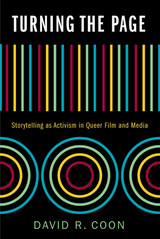 Turning the Page: Storytelling as Activism in Queer Film and Media
Coon, David R
Rutgers University Press, 2018 First runner-up for the 2019 John Leo and Dana Heller Award from the Popular Culture Association
Surprisingly, Hollywood is still clumsily grappling with its representation of sexual minorities, and LGBTQ filmmakers struggle to find a place in the mainstream movie industry. However, organizations outside the mainstream are making a difference, helping to produce and distribute authentic stories that are both by and for LGBTQ people.
Turning the Page introduces readers to three nonprofit organizations that, in very different ways, have each positively transformed the queer media landscape. David R. Coon takes readers inside In the Life Media, whose groundbreaking documentaries on the LGBTQ experience aired for over twenty years on public television stations nationwide. Coon reveals the successes of POWER UP, a nonprofit production company dedicated to mentoring filmmakers who can turn queer stories into fully realized features and short films. Finally, he turns to Three Dollar Bill Cinema, an organization whose film festivals help queer media find an audience and whose filmmaking camps for LGBTQ youth are nurturing the next generation of queer cinema.
Combining a close analysis of specific films and video programs with extensive interviews of industry professionals, Turning the Page demonstrates how queer storytelling in visual media has the potential to empower individuals, strengthen communities, and motivate social justice activism.
 Turning the Soul: Teaching through Conversation in the High School
Sophie Haroutunian-Gordon
University of Chicago Press, 1991 Is our nation's educational system faltering in part because it strives to teach students predetermined "right" answers to questions? In Turning the Soul, Sophie Haroutunian-Gordon offers and alternative to methods advocated by conventional educational practice. By guiding the reader back and forth between two high school classes discussing Shakespeare's Romeo and Juliet, she gracefully introduces the alternative approach to education: interpretive discussion.
One class, located in a private, racially integrated urban school, has had many conversations about the meaning of books. The second group, less advantaged students in a largely black urban school, has not. The reader watches as students in each group begin to draw upon experiences in their personal lives to speculate about events in the play. The students assist one another with the interpretation of complex passages, pose queries that help sustain the conversation, and struggle to "get Shakespeare right." Though the teachers suffer moments of intense frustration, they are rewarded by seeing their students learn to engage in meaningful exchange.
Because Turning the Soul draws on actual classroom conversations, it presents the range of difficulties that one encounters in interpretive discussion. The book describes the assumptions about learning that the use of such discussion in the classroom presupposes, and it offers a theoretical perspective from which to view the changes in both students and teachers.
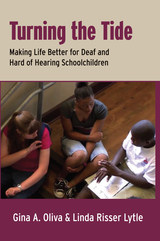 Turning the Tide: Making Life Better for Deaf and Hard of Hearing Schoolchildren
Gina A. Oliva
Gallaudet University Press, 2014 Both Gina A. Oliva and Linda Risser Lytle know what it is like to be the only deaf student in a mainstream school. Though they became successful educators, they recognize the need to research the same isolation experienced by other deaf and hard of hearing persons. In this way, they hope to improve education for current and future deaf students. Their efforts have culminated in Turning the Tide: Making Life Better for Deaf and Hard of Hearing Schoolchildren.
Turning the Tide presents a qualitative study of deaf and hard of hearing students who attended mainstream schools. The authors conducted three focus groups in different regions in the country, enlisting six to eight participants with diverse backgrounds for each session. They also gathered information from 113 online respondents who answered the same questions used in the focus groups. The respondents discussed many issues, including the difficulties of finding friends and social access, the struggle to establish an identity, the challenges of K-12 interpreting and class placement, and the vast potential of summer and weekend programs for deaf students. Their empowering stories clearly demonstrate that no deaf or hard of hearing student should be educated alone. The authors also elicited comments on other changes that parents, advocates, and other allies could work toward to improve further the educational environment of deaf children.
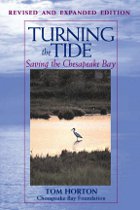 Turning the Tide: Saving the Chesapeake Bay
Tom Horton; Chesapeake Bay Foundation
Island Press, 2003 In 1991, Island Press published Turning the Tide, a unique and accessible examination of the Chesapeake Bay ecosystem. The book took an indepth look at the Bay’s vital signs to gauge the overall health of its entire ecosystem and to assess what had been done and what remained to be done to clean up the Bay.
This new edition of Turning the Tide addresses new developments of the past decade and examines the factors that will have the most significant effects on the health of the Bay in the coming years.With new case studies and updated maps, charts, and graphs, the book builds on the analytical power of ten years of experience to offer a new perspective, along with clear, science-based recommendations for the future.
For all those who want to know not only how much must be done to save the Bay but what they can do and how they can make a difference, Turning the Tide is an essential source of information.
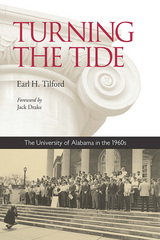 Turning the Tide: The University of Alabama in the 1960s
Earl H. Tilford
University of Alabama Press, 2014 This book documents the period when a handful of University of Alabama student activists formed an alliance with President Frank A. Rose, his staff, and a small group of progressive-minded professors in order to transform the university during a time of social and political turmoil. Together they engaged in a struggle against Governor George Wallace and a state legislature that reflected the worst aspects of racism in a state where the passage of civil rights legislation in 1964 and 1965 did little to reduce segregation and much to inflame the fears and passions of many white Alabamians.
Earl H. Tilford details the origins of the student movement from within the Student Government Association, whose leaders included Ralph Knowles and future governor Don Siegelman, among others; the participation of key members of “The Machine,” the political faction made up of the powerful fraternities and sororities on campus; and the efforts of more radical non-Greek students like Jack Drake, Ed Still, and Sondra Nesmith. Tilford also details the political maneuverings that drove the cause of social change through multiple administrations at the university. Turning the Tide highlights the contributions of university presidents Frank A. Rose and David Mathews, as well as administrators like the dean of men John L. Blackburn, who supported the student leaders but also encouraged them to work within the system rather than against it.
Based on archival research, interviews with many of the principal participants, and the author’s personal experiences, Tilford’s Turning the Tide is a compelling portrait of a university in transition during the turbulence surrounding the civil rights and anti-war movements of the 1960s.
Turning Traditions Upside Down: Rethinking Giordano Bruno's Enlightenment
Anne Eusterschulte
Central European University Press, 2013 Some of the world's most eminent researchers on Bruno offer an exhaustive overview of the state-of-theart research on his work, discussing Bruno's methodological procedures, his epistemic and literary practices, his natural philosophy, or his role as theologian and metaphysic at the cutting-edge of their disciplines. Short texts by Bruno illustrate the reasoning of the contributions. The book also reflects aspects of Bruno's reception in the past and today, inside and outside academia.
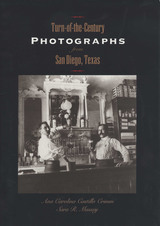 Turn-of-the-Century Photographs from San Diego, Texas
By Ana Carolina Castillo Crimm and Sara R. Massey
University of Texas Press, 2003 Situated in the South Texas borderlands some fifty miles west of Corpus Christi, San Diego was a thriving town already a hundred years old at the turn of the twentieth century. With a population that was 90 percent Mexican or Mexican American and 10 percent Anglo, the bicultural community was the seat of Duval County and a prosperous town of lumberyards, banks, mercantile stores, and cotton gins, which also supplied the needs of area ranchers and farmers. Though Anglos dominated its economic and political life, San Diego was culturally Mexican, and Mexican Americans as well as Anglos built successful businesses and made fortunes. This collection of nearly one hundred photographs from the estate of amateur photographer William Hoffman captures the cosmopolitan town of San Diego at a vibrant moment in its history between 1898 and 1909. Grouped into the categories women and their jobs, local homes, men and their businesses, children at school and church, families and friends, and entertainment about town, the photos offer an immediate visual understanding of the cultural and economic life of the community, enhanced by detailed captions that identify the subjects and circumstances of the photos. An introductory historical chapter constitutes the first published history of Duval County, which was one of the most important areas of South Texas in the early twentieth century.
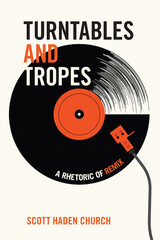 Turntables and Tropes: A Rhetoric of Remix
Scott Haden Church
Michigan State University Press, 2022 The creative practice of remix is essential to contemporary culture, as the proliferation of song mashups, political remix videos, memes, and even streaming television shows like Stranger Things demonstrates. Yet remix is not an exclusively digital practice, nor is it even a new one, as there is evidence of remix in the speeches of classical Greek and Roman orators. Turntables and Tropes is the first book to address remix from a communicative perspective, examining its persuasive dimensions by locating its parallels with classical rhetoric. Through identifying, recontextualizing, mashing up, and applying rhetorical tropes to contemporary digital texts and practices, this groundbreaking book presents a new critical vocabulary that scholars and students can use to analyze remix. Building upon scholarship from classical thinkers such as Isocrates, Quintilian, Nāgārjuna, and Cicero and contemporary luminaries like Kenneth Burke, Richard Lanham, and Eduardo Navas, Scott Haden Church shows that an understanding of rhetoric offers innovative ways to make sense of remix culture.
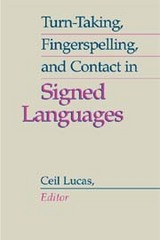 Turn-Taking, Fingerspelling, and Contact in Signed Languages
Ceil Lucas
Gallaudet University Press, 2002 From Reviewer's Bookwatch, a publication of The Midwest Book Review
Compiled and edited by Ceil Lucas, Turn-Taking, Fingerspelling, and Contact in Signed Languages is the eighth volume in the outstanding Gallaudet University Press "Sociolinguistics in Deaf Communities series." The ten contributors bring to their work an expertise in their subject matter and an ability to present their material with a careful balance of scholarship and accessibility. The essays include Kristin J. Mulrooney's "Variation in ASL Fingerspelling"; Bruce A. Sofinski's "So, Why Do I Call This English?"; Paul Dudis' "Grounded Blend Maintenance as a Discourse Strategy"; Mieke Van Herreweghe's "Turn-Taking Mechanisms and Active Participation in Meetings with Deaf and Hearing Participants in Flanders." The final article, "Deaf People in Bilingual Speaking Communities: The Case of Deaf People in Bareclona," is the impressive and collaborative work of Esperanza Morales-Lopez, Delfina Agliaga-Emetrio, Jesus Amador Alonso-Rodriguez, Rosa Maria Boldu-Menasanch, Julia Garrusta-Ribes, and Victoria Gras Ferrer. Turn-Taking, Fingerspelling, and Contact in Signed Languages is a welcome and strongly recommended addition to Signing and Sign Language academic reference collections and supplemental reading lists.
Ceil Lucas is Professor of Linguistics in the Department of Linguistics and Interpretation at Gallaudet University.
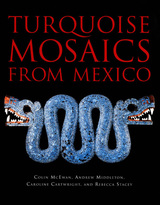 Turquoise Mosaics from Mexico
Colin McEwan, Andrew Middleton, Caroline Cartwright, and Rebecca Stacey
Duke University Press, 2006 The nine turquoise mosaics from Mexico are some the most striking pieces in the collections of the British Museum. Among the few surviving such artifacts, these exquisite objects include two masks, a shield, a knife, a helmet, a double-headed serpent, a mosaic on a human skull, a jaguar, and an animal head. They all originate from the Mixtec and Aztec civilizations first encountered by Europeans during the Spanish conquest in the early sixteenth century. The mosaics have long excited admiration for their masterful blend of technical skill and artistry and fascination regarding their association with ritual and ceremony. Only recently though, have scientific investigations undertaken by the British Museum dramatically advanced knowledge of the mosaics by characterizing, for the first time, the variety of natural materials that were used to create them. Illustrated with more than 160 color images, this book describes the recent scientific findings about the mosaics in detail, revealing them to be rich repositories of information about ancient Mexico. The materials used to construct the mosaics demonstrate their makers’ deep knowledge of the natural world and its resources. The effort that would have been involved in procuring the materials testifies to the mosaics’ value and significance in a society imbued with myths and religious beliefs. The British Museum’s analyses have provided evidence of the way that the materials were prepared and assembled, the tools used, and the choices that were made by artisans. In addition, by drawing on historical accounts including early codices, as well as recent archaeological discoveries, specialists have learned more about the place of the mosaics in ancient Mexican culture. Filled with information about the religion, art, and natural and cultural history as well as the extraordinary ability of modern science to enable detailed insight into past eras, Turquoise Mosaics from Mexico offers an overview of the production, utilization, and eventual fate of these beautiful and mysterious objects.
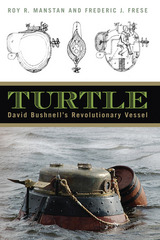 Turtle: David Bushnell's Revolutionary Vessel
Roy R. Manstan
Westholme Publishing, 2010 The Remarkable History and Reconstruction of the First Operational Submarine
At the onset of the American Revolution, the British expected to quell the rebellion quickly with a show of overwhelming force. In an experiment in asymmetric warfare, David Bushnell created the first submarine vessel designed specifically “for the destruction of vessels of war.” On a quiet September night in 1776, sergeant Ezra Lee maneuvered Bushnell’s strange little craft out from Manhattan and into the midst of the greatest naval fleet ever assembled in the Americas. Lee’s goal was to sink the British flagship HMS Eagle by attaching a powerful explosive to its hull. Although the mission was unsuccessful, Bushnell’s concept of submarine warfare was considered by George Washington to have been “an effort of genius.” David Bushnell was raised in the town of Saybrook at the mouth of the Connecticut River. More than two centuries later, another Turtle would be launched into the same river within sight of Bushnell’s first forays with his vessel during the summer of 1775. Under the direction of technical arts teacher Frederic J. Frese, students at Old Saybrook High School created a working replica of Bushnell’s submarine, facilitated through an education partnership with the Naval Undersea Warfare Center in Newport, Rhode Island, where Roy R. Manstan was a mechanical engineer and Navy trained diver. With twenty-first century submariners at the helm, the Turtle replica was subjected to a series of operational tests at the Mystic Seaport Museum in Mystic, Connecticut. In Turtle: David Bushnell’s Revolutionary Vessel, the authors provide new insight into Bushnell’s “engine of devastation,” tracing the history of undersea warfare before Bushnell and the origin of the many innovations Bushnell understood would be necessary for conducting a covert submarine attack. The knowledge gained from testing the Turtle replica enabled the authors to speculate as to what America’s first submariner Ezra Lee experienced that September night and what may have caused the attack to fail.
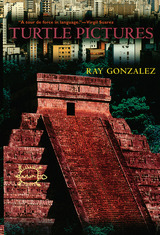 Turtle Pictures
Ray Gonzalez
University of Arizona Press, 2000 The rhythm of vision, the rhythm of dream, the rhythm of voices saturating the hot southwestern landscape. These are the rhythms of Ray Gonzalez, the haunting incantations of Turtle Pictures.
Gonzalez has forged a new Chicano manifesto, a cultural memoir that traces both his personal journey and the communal journey that Mexican Americans have traveled throughout this century, across this land. He interweaves lyrical poetry, prose poems, short fiction, and nonfiction commentary into a lush cacophony that traces the evolution of today's politically charged Chicano voices from the deafening silence of their ancestors. Adopting the turtle as a metaphor for the Native American origins of border culture, Gonzalez frames this multitextured individual vision until it becomes a universal portrait of American life: a slow, ancient creature morphing into one of voracious rapidity. In wild and challenging surrealistic images, he hammers out a political statement from language that takes on a special urgency. Walking a fine line between lyricism and polemic, and succeeding where others have stumbled, he calls on Mexican Americans to return to their roots in order to avoid being swept up in American material culture.
Turtle Pictures is a complex body of work by a poet totally in tune with the spirit and nuances of language, imbued with a deep sense of craft and literary tradition. It invites readers to revel in its richness and vitality, to be caught up in its chantlike spirit, to luxuriate in its hauntingly beautiful passages. It is a work to devour, to savor, to return to, for it speaks with all the rhythms of the soul.
Turtles in Your Pocket: A Guide to Freshwater and Terrestrial Turtles of the Upper Midwest
Terry VanDeWalle
University of Iowa Press, 2011 From the hefty alligator snapping turtle—the largest freshwater turtle in North America and the only turtle in the world with a predatory lure in its mouth—to the wood turtle, which uses “worm stomping” to catch earthworms, to the lovely ornate box turtle, which closes its shell completely for self-defense, the slow-but-sure turtle is an intriguing reptile. Terry VanDeWalle provides a complete description of each species, both male and female, along with distinguishing characteristics for fourteen subspecies, information about range and habitat, and natural history notes about behavior, hibernation, diet, and nesting. Two panels devoted to hatchlings provide short descriptions of the young of each species as well as photographs of some commonly seen young turtles.
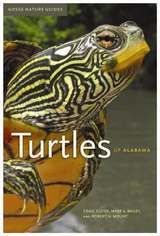 Turtles of Alabama
Craig Guyer, Mark A. Bailey, and Robert H. Mount
University of Alabama Press, 2015 For nearly 200 million years, Earth has been occupied by reptiles—a lineage of terrestrial vertebrates that includes some, like birds, that have invaded the aerial environment, and others, like turtles, that have invaded aquatic environments. With thirty-nine known species, Alabama harbors more turtle species than any other state in the nation, and its Mobile River basin is the center of the world's greatest biodiversity in turtles, surpassing all other river systems around the globe, including the Amazon and the Nile. Turtles of Alabama documents that extraordinary wealth and presents each species in full, describing its physical appearance, habitat and range, behavior, conservation and management, and taxonomy.
In addition to providing sixty-five full-color photographs of juveniles and adults along with forty-two colorfully detailed distribution maps, this volume features an introductory section explaining the physiography, climate, and habitats of the state, and offers illustrated taxonomic keys for all the species considered, including the oceanic behemoths that lay their eggs on Alabama's gulf beaches and the lumbering gopher tortoise that provides safe haven for countless other animals and arthropods in its underground burrows of the Coastal Plain. With fine line drawings to highlight various distinguishing attributes of the animals, this volume is the definitive guide to the state’s fascinating and diverse turtle populations—freshwater, marine, and terrestrial.
Although they are notoriously slow-moving, turtles still survive on Earth because of their remarkable adaptations—an exterior shell for body protection, long lives, high reproductive output, stamina, and a capacity for doing without. Turtles are cold-blooded reptiles that were here long before mammals, and they're still around, continuing to adapt to many different habitats and ecological niches, still interbreeding, evolving, and speciating. Turtles of Alabama is a fitting celebration of that phenomenal variety and strength.
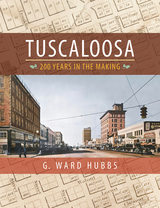 Tuscaloosa: 200 Years in the Making
G. Ward Hubbs
University of Alabama Press, 2019 Winner of Alabama Historical Association's 2020 Clinton Jackson Coley Book Award!
A lavishly illustrated history of this distinctive city’s origins as a settlement on the banks of the Black Warrior River to its development into a thriving nexus of higher education, sports, and culture
In both its subject and its approach, Tuscaloosa: 200 Years in the Making is an account unlike any other of a city unlike any other—storied, inimitable, and thriving. G. Ward Hubbs has written a lively and enlightening bicentennial history of Tuscaloosa that is by turns enthralling, dramatic, disturbing, and uplifting. Far from a traditional chronicle listing one event after another, the narrative focuses instead on six key turning points that dramatically altered the fabric of the city over the past two centuries.
The selection of this frontier village as the state capital gave rise to a building boom, some extraordinary architecture, and the founding of The University of Alabama. The state’s secession in 1861 brought on a devastating war and the burning of the university by Union cavalry; decades of social adjustments followed, ultimately leading to legalized racial segregation. Meanwhile, town boosters set out to lure various industries, but with varying success.
The decision to adopt new inventions, ranging from electricity to telephones to automobiles, revolutionized the daily lives of Tuscaloosans in only a few short decades. Beginning with radio, and followed by the Second World War and television, the formerly isolated townspeople discovered an entirely different world that would culminate in Mercedes-Benz building its first overseas production plant nearby. At the same time, the world would watch as Tuscaloosa became the center of some pivotal moments in the civil rights movement—and great moments in college football as well.
An impressive amount of research is collected in this accessibly written history of the city and its evolution. Tuscaloosa is a versatile history that will be of interest to a general readership, for scholars to use as a starting point for further research, and for city and county school students to better understand their home locale.
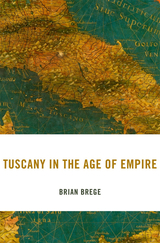 Tuscany in the Age of Empire
Brian Brege
Harvard University Press, 2021 Winner of the American Association for Italian Studies Book Prize
A new history explores how one of Renaissance Italy’s leading cities maintained its influence in an era of global exploration, trade, and empire.
The Grand Duchy of Tuscany was not an imperial power, but it did harbor global ambitions. After abortive attempts at overseas colonization and direct commercial expansion, as Brian Brege shows, Tuscany followed a different path, one that allowed it to participate in Europe’s new age of empire without establishing an empire of its own. The first history of its kind, Tuscany in the Age of Empire offers a fresh appraisal of one of the foremost cities of the Italian Renaissance, as it sought knowledge, fortune, and power throughout Asia, the Americas, and beyond.
How did Tuscany, which could not compete directly with the growing empires of other European states, establish a global presence? First, Brege shows, Tuscany partnered with larger European powers. The duchy sought to obtain trade rights within their empires and even manage portions of other states’ overseas territories. Second, Tuscans invested in cultural, intellectual, and commercial institutions at home, which attracted the knowledge and wealth generated by Europe’s imperial expansions. Finally, Tuscans built effective coalitions with other regional powers in the Mediterranean and the Islamic world, which secured the duchy’s access to global products and empowered the Tuscan monarchy in foreign affairs.
These strategies allowed Tuscany to punch well above its weight in a world where power was equated with the sort of imperial possessions it lacked. By finding areas of common interest with stronger neighbors and forming alliances with other marginal polities, a small state was able to protect its own security while carving out a space as a diplomatic and intellectual hub in a globalizing Europe.
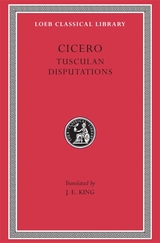 Tusculan Disputations
Cicero
Harvard University Press Philosophical dialogues of a grieving statesman.
Cicero (Marcus Tullius, 106–43 BC), Roman lawyer, orator, politician, and philosopher, of whom we know more than of any other Roman, lived through the stirring era that saw the rise, dictatorship, and death of Julius Caesar in a tottering republic. In his political speeches especially and in his correspondence we see the excitement, tension and intrigue of politics and the part he played in the turmoil of the time. Of about 106 speeches, delivered before the Roman people or the Senate if they were political, before jurors if judicial, fifty-eight survive (a few of them incompletely). In the fourteenth century Petrarch and other Italian humanists discovered manuscripts containing more than 900 letters of which more than 800 were written by Cicero and nearly 100 by others to him. These afford a revelation of the man all the more striking because most were not written for publication. Six rhetorical works survive and another in fragments. Philosophical works include seven extant major compositions and a number of others; and some lost. There is also poetry, some original, some as translations from the Greek.
The Loeb Classical Library edition of Cicero is in twenty-nine volumes.
 The Tutor'd Mind: Indian Missionary-Writers in Antebellum America
Bernd C. Peyer
University of Massachusetts Press, 1997 Part historical narrative, part textual analysis, this book traces the development of American Indian literature from the seventeenth century to the eve of the Civil War. Bernd C. Peyer focuses on the lives and writings of four prominent Indian missionaries—Samson Occom of the Mohegans, William Apess of the Pequots, Elias Boudinot of the Cherokees, and George Copway of the Ojibwa—each of whom struggled to negotiate a secure place between the imperatives of colonial rule and the rights of native peoples.
In the view of the English colonists and their descendants, Indian converts to Christianity were expected to repudiate native traditions and affirm the superiority of European civilization, to serve as role models, and to spread the gospel far into the wilderness. Yet as Bernd C. Peyer shows, Indian missionaries did not always fulfill the expectations of those who trained them. Once the Indians recognized that conversion alone did not guarantee protection from discrimination, they devised a variety of strategies, theological as well as practical, to resist assimilation into the dominant white culture. Making effective use of their literacy and education, they called attention to the discrepancy between the Protestant ideals they had been taught and the Anglo-American practices to which native people were subjected.
By uncovering this subtext of dissent and resistance, Peyer at once alters and enriches our understanding of the evolution of the American Indian literary tradition.
 Tutoring Matters: Everything You Always Wanted To Know About How To Tutor
Jerome Rabow
Temple University Press, 1999 Inside each of us is the promise of a tutor. If you've ever taught a child to tie her shoe, or helped a friend with his homework, or even helped a stranger understand a posted sign, you have it in you to empower others through learning. Tutors are allowed to do what teachers and parents are often not able to do. They can be patient, observe, question, support, challenge, and applaud. They can move towards nurturing the true and total intelligence of their tutees. Learning to tutor is simply overcoming fears, sharing and acquiring knowledge, and appreciating the potential and wisdom in each other.
Tutoring Matters is the authoritative manual for both the aspiring and seasoned tutor. Using firsthand experiences of over one hundred new and experienced tutors, this long-awaited guide offers chapters on attitudes and anxieties, teaching techniques, and building relationships. It educates the tutor on how to handle and appreciate social and language differences; how to use other adults -- teachers, administrators, parents, employers -- to a student's advantage; and, when your student or circumstances determine that it's time, how to put a positive and supportive end to the tutor-tutee relationship.
Written by experienced tutors and tutoring educators, Tutoring Matters celebrates -- and provides just the right tools for -- an individualized and successful tutoring relationship and shows just how much you can learn -- about the world and yourself -- through teaching others.
Tutoring Matters: Everything You Always Wanted to Know about How to Tutor
Authored by Tiffani Chin, Jerome Rabow and Jeimee Estrada
Temple University Press, 2011 Tutoring Matters is the authoritative guide for both the aspiring and seasoned tutor. Using firsthand experiences of over one hundred new and experienced college student tutors, the authors offer techniques for handling tutoring anxieties, teaching strategies, and tips for building relationships. This new edition has been fully updated to help tutors to engage the interest of their students. In addition, it features practical “tip boxes” that provide quick-reference guidelines on a range of tutoring challenges—from making a connection in your first tutoring session to becoming familiar with your pupil's life and tutoring needs. This new edition also provides practical experience-based tips "from the trenches" about how to tutor math and reading and how to help students develop other academic skills and interests.
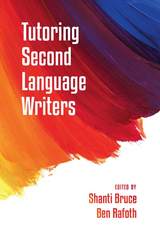 Tutoring Second Language Writers
Shanti Bruce
Utah State University Press, 2015 Tutoring Second Language Writers, a complete update of Bruce and Rafoth’s 2009 ESL Writers, is a guide for writing center tutors that addresses the growing need for tutors who are better prepared to work with the increasingly international population of students seeking guidance at the writing center. Drawing upon philosopher John Dewey’s belief in reflective thinking as a way to help build new knowledge, the book is divided into four parts. Part 1: Actions and Identities is about creating a proactive stance toward language difference, thinking critically about labels, and the mixed feelings students may have about learning English. Part 2: Research Opportunities demonstrates writing center research projects and illustrates methods tutors can use to investigate their questions about writing center work. Part 3: Words and Passages offers four personal stories of inquiry and discovery, and Part 4: Academic Expectations describes some of the challenges tutors face when they try to help writers meet readers’ specific expectations. Advancing the conversations tutors have with one another and their directors about tutoring second language writers and writing, Tutoring Second Language Writers engages readers with current ideas and issues that highlight the excitement and challenge of working with those who speak English as a second or additional language.
Contributors include Jocelyn Amevuvor, Rebecca Day Babcock, Valerie M. Balester, Shanti Bruce, Frankie Condon, Michelle Cox, Jennifer Craig, Kevin Dvorak, Paula Gillespie, Glenn Hutchinson, Pei-Hsun Emma Liu, Bobbi Olson, Pimyupa W. Praphan, Ben Rafoth, Jose L. Reyes Medina, Guiboke Seong, and Elizabeth (Adelay) Witherite.
The TV Arab
Jack G. Shaheen
University of Wisconsin Press, 1984
Dr. Shaheen, studying over 100 different popular entertainment programs, cartoons and major documentaries telecast on network, independent and public channels, totaling nearly 200 episodes that relate to Arabs, has thrown new and revealing light on the stereotypes of people from the Middle East.
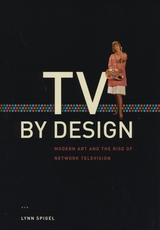 TV by Design: Modern Art and the Rise of Network Television
Lynn Spigel
University of Chicago Press, 2008 While critics have long disparaged commercial television as a vast wasteland, TV has surprising links to the urbane world of modern art that stretch back to the 1950s and ’60s During that era, the rapid rise of commercial television coincided with dynamic new movements in the visual arts—a potent combination that precipitated a major shift in the way Americans experienced the world visually. TV by Design uncovers this captivating story of how modernism and network television converged and intertwined in their mutual ascent during the decades of the cold war.
Whereas most histories of television focus on the way older forms of entertainment were recycled for the new medium, Lynn Spigel shows how TV was instrumental in introducing the public to the latest trends in art and design. Abstract expressionism, pop art, art cinema, modern architecture, and cutting-edge graphic design were all mined for staging techniques, scenic designs, and an ever-growing number of commercials. As a result, TV helped fuel the public craze for trendy modern products, such as tailfin cars and boomerang coffee tables, that was vital to the burgeoning postwar economy. And along with influencing the look of television, many artists—including Eero Saarinen, Ben Shahn, Saul Bass, William Golden, and Richard Avedon—also participated in its creation as the networks put them to work designing everything from their corporate headquarters to their company cufflinks.
Dizzy Gillespie, Ernie Kovacs, Duke Ellington, and Andy Warhol all stop by in this imaginative and winning account of the ways in which art, television, and commerce merged in the first decades of the TV age.
TV Family Values: Gender, Domestic Labor, and 1980s Sitcoms
Alice Leppert
Rutgers University Press, 2019 During the 1980s, U.S. television experienced a reinvigoration of the family sitcom genre. In TV Family Values, Alice Leppert focuses on the impact the decade's television shows had on middle class family structure. These sitcoms sought to appeal to upwardly mobile “career women” and were often structured around non-nuclear families and the reorganization of housework. Drawing on Foucauldian and feminist theories, Leppert examines the nature of sitcoms such as Full House, Family Ties, Growing Pains, The Cosby Show, and Who's the Boss? against the backdrop of a time period generally remembered as socially conservative and obsessed with traditional family values.
 TV Format Mogul: Reg Grundy's Transnational Career
Albert Moran
Intellect Books, 1995 Since the late 1990s, when broadcasters began adapting such television shows as Big Brother, Survivor, and Who Wants to Be a Millionaire? for markets around the world, the global television industry has been struggling to come to grips with the prevalence of program franchising across international borders. In TV Format Mogul, Albert Moran traces the history of this phenomenon through the lens of Australian producer Reg Grundy’s transnational career. Program copycatting, Moran shows, began long before its most recent rise to prominence. Indeed, he reveals that the practice of cultural and commercial cloning from one place to another, and one time to another, has occurred since the early days of broadcasting. Beginning in the late 1950s, Grundy brought non-Australian shows to Australian audiences, becoming the first person to take local productions to an overseas market. By following Grundy’s career, Moran shows how adaptation and remaking became the billion-dollar business they are today. An exciting new contribution from Australia’s foremost scholar of television, TV Format Mogul will be a definitive history of program franchising.
TV Formats Worldwide: Localizing Global Programs
Edited by Albert Moran
Intellect Books, 2009 Beginning around 2003, the growth of interest in the genre of reality shows has dominated the field of television studies. However, concentrating on this genre has tended to sideline the even more significant emergence of the program format as a central mode of business and culture in the new television landscape. TV Formats Worldwide redresses this balance and heralds the emergence of an important, exciting, and challenging area of television studies. Topics explored include reality TV, makeover programs, sitcoms, talent shows, and fiction serials, as well as broadcaster management policies, production decision chains, and audience participation processes. This seminal work will be of considerable interest to media scholars worldwide.
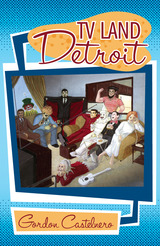 TV Land--Detroit
Gordon Castelnero
University of Michigan Press, 2006 An in-depth and personal look at the most popular and best-remembered local shows from the golden years of Detroit TV
Long before cable, prepackaged syndication, infomercials, do-it-yourselfers, and reality shows cluttered the television dial, there was a brand of entertainment that has today nearly vanished from the airwaves: local TV. And with its colorful and quirky cast of characters, Detroit TV arguably offered some of the best of the best of local programming anywhere in the nation-a smorgasbord of exuberant, one-of-a-kind television shows.
Based on actual interviews with the people who made Detroit TV, Gordon Castelnero's TV Land-Detroit awakens the emotional attachment and nostalgia our community has for these shows, bringing the beloved characters and memorable programs back to life.
From the glamorous Rita Bell to the insanity of the Ghoul, the zany Jingles in Boofland to the opinionated and often confrontational Lou Gordon and the gruff-voiced and somnolent George Pierrot, Castelnero reacquaints us with the talent and behind-the-scenes people, of the creative spirit in Detroit, and the intimacy they shared with the community both on and off the air.
Gordon Castelnero was a producer at WNIC radio for four years. He produced the acclaimed documentaries for WDIV and WTVS, Michigan, It Started Here! Michigan and the American Dream, and Titanic: The Final Chapter. He currently lives in Livonia, Michigan, and works at Technicolor in DVD and game media distribution. He can be contacted by e-mail at tvlanddetroit@yahoo.com
 TV Museum: Contemporary Art and the Age of Television
Maeve Connolly
Intellect Books, 2014 TV Museum takes as its subject the complex and shifting relationship between television and contemporary art. Informed by theories and histories of art and media since the 1950s, this book charts the changing status of television as cultural form, object of critique, and site of artistic invention. Through close readings of artworks, exhibitions, and institutional practices in diverse cultural and political contexts, Connolly demonstrates television’s continued importance for contemporary artists and curators seeking to question the formation and future of the public sphere. Paying particular attention to developments since the early 2000s, TV Museum includes chapters on exhibiting television as object; soaps, sitcoms, and symbolic value in art and television; reality TV and the social turn in art; TV archives, memory, and media events; broadcasting and the public realm; TV talk shows and curatorial practice; art workers and TV production cultures.
Lavishly illustrated and with in-depth discussion of over fifty canonical and contemporary artworks, TV Museum offers a new approach to the analysis of television’s place within contemporary art and culture.
 TV Snapshots: An Archive of Everyday Life
Lynn Spigel
Duke University Press, 2022 In TV Snapshots, Lynn Spigel explores snapshots of people posing in front of their television sets in the 1950s through the early 1970s. Like today’s selfies, TV snapshots were a popular photographic practice through which people visualized their lives in an increasingly mediated culture. Drawing on her collection of over 5,000 TV snapshots, Spigel shows that people did not just watch TV: women used the TV set as a backdrop for fashion and glamour poses; people dressed in drag in front of the screen; and in pinup poses, people even turned the TV setting into a space for erotic display. While the television industry promoted on-screen images of white nuclear families in suburban homes, the snapshots depict a broad range of people across racial, ethnic, and class backgrounds that do not always conform to the reigning middle-class nuclear family ideal. Showing how the television set became a central presence in the home that exceeded its mass entertainment function, Spigel highlights how TV snapshots complicate understandings of the significance of television in everyday life.
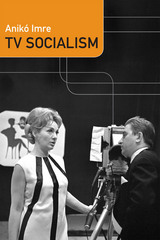 TV Socialism
Anikó Imre
Duke University Press, 2016 In TV Socialism, Anikó Imre provides an innovative history of television in socialist Europe during and after the Cold War. Rather than uniform propaganda programming, Imre finds rich evidence of hybrid aesthetic and economic practices, including frequent exchanges within the region and with Western media, a steady production of varied genre entertainment, elements of European public service broadcasting, and transcultural, multi-lingual reception practices. These televisual practices challenge conventional understandings of culture under socialism, divisions between East and West, and the divide between socialism and postsocialism. Taking a broad regional perspective encompassing Eastern Europe and the Soviet Union, Imre foregrounds continuities between socialist television and the region’s shared imperial histories, including the programming trends, distribution patterns, and reception practices that extended into postsocialism. Television, she argues, is key to understanding European socialist cultures and to making sense of developments after the end of the Cold War and the enduring global legacy of socialism.
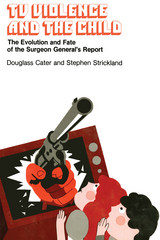 TV Violence and the Child: Evolution and Fate of the Surgeon General's Report
Douglass Cater
Russell Sage Foundation, 1975 In 1969, Senator John Pastore requested that the Surgeon General appoint a committee to conduct an inquiry into television violence and its effect on children. When the Surgeon General's report was finally released in 1972—after a three-year inquiry and a cost of over $1.8 million—it angered and confused a number of critics, including politicians, the broadcast industry, many of the social scientists who had helped carry out the research, and the public. While the final consequences of the Report may not be played out for years to come, TV Violence and the Child presents a fascinating study of the Surgeon General's quest and, in effect, the process by which social science is recruited and its findings made relevant to public policy. In addition to dealing with television as an object of concern, the authors also consider the government's effectiveness when dealing with social objectives and the influence of citizen action on our communication systems. Their overwhelming conclusion is that the nation's institutions are ill-equipped for recruiting expert talent, providing clear findings, and carrying out objectives in this area of delicate human concern.
TVA and the Tellico Dam: A Bureaucratic Crisis in Post-Industrial America
William Bruce Wheeler
University of Tennessee Press, 2004 This is a study of TVA management of Tellico Dam. Part of the ambitious New Deal project to bring modernity to Appalachia, TVA planning was far-reaching, often far-sighted, but also controversial, involving mass migration of people from their ancestral homes and threats to species, like the snail darter.
TVA's Public Planning: The Vision, The Reality
Walter L. Creese
University of Tennessee Press, 1990 Winner of the Lewis Mumford Prize (Society for American City and Regional Planning History) and Best Book Award (Southeast Society for Architectural Historians).
At its outset, the Tennessee Valley Authority was a comprehensive public planning project for the economic and social revitalization of a major American region, undertaken in a time of depression and major technological advance. Traditionally, the TVA has been viewed as a unique response to special circumstances, largely lacking in historical precedents.
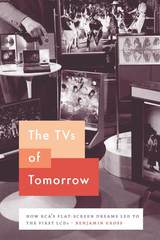 The TVs of Tomorrow: How RCA’s Flat-Screen Dreams Led to the First LCDs
Benjamin Gross
University of Chicago Press, 2018 In 1968 a team of scientists and engineers from RCA announced the creation of a new form of electronic display that relied upon an obscure set of materials known as liquid crystals. At a time when televisions utilized bulky cathode ray tubes to produce an image, these researchers demonstrated how liquid crystals could electronically control the passage of light. One day, they predicted, liquid crystal displays would find a home in clocks, calculators—and maybe even a television that could hang on the wall.
Half a century later, RCA’s dreams have become a reality, and liquid crystals are the basis of a multibillion-dollar global industry. Yet the company responsible for producing the first LCDs was unable to capitalize upon its invention. In The TVs of Tomorrow, Benjamin Gross explains this contradiction by examining the history of flat-panel display research at RCA from the perspective of the chemists, physicists, electrical engineers, and technicians at the company’s central laboratory in Princeton, New Jersey.
Drawing upon laboratory notebooks, internal reports, and interviews with key participants, Gross reconstructs the development of the LCD and situates it alongside other efforts to create a thin, lightweight replacement for the television picture tube. He shows how RCA researchers mobilized their technical expertise to secure support for their projects. He also highlights the challenges associated with the commercialization of liquid crystals at RCA and Optel—the RCA spin-off that ultimately manufactured the first LCD wristwatch. The TVs of Tomorrow is a detailed portrait of American innovation during the Cold War, which confirms that success in the electronics industry hinges upon input from both the laboratory and the boardroom.
Twain, Alcott, and the Birth of the Adolescent Reform Novel
Roberta S. Trites
University of Iowa Press, 2007 Trites argues that Twain and Alcott wrote on similar topics because they were so deeply affected by the Civil War, by cataclysmic emotional and financial losses in their families, by their cultural immersion in the tenets of Protestant philosophy, and by sexual tensions that may have stimulated their interest in writing for adolescents, Trites demonstrates how the authors participated in a cultural dynamic that marked the changing nature of adolescence in America, provoking a literary sentiment that continues to inform young adult literature. Both intuited that the transitory nature of adolescence makes it ripe for expression about human potential for change and reform.
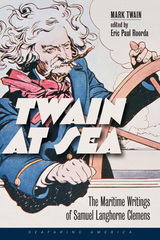 Twain at Sea: The Maritime Writings of Samuel Langhorne Clemens
Mark Twain
University Press of New England, 2018 Samuel Clemens (1835–1910) repeatedly traversed the ocean during his globetrotting life. A keen observer, the man who recast himself as Mark Twain was fascinated by seafaring. This book compiles selections ranging from his first voyage in 1866—San Francisco to Hawaii—to his circumnavigation of the world by steamship 1897. Despite his background as a “brown water” mariner, Twain was out of his element on the ocean. His writings about being at sea (as well as feeling at sea) reflect both a growing familiarity with voyaging and an enduring sense of amazement. Twain’s shipboard observations capture his interest and amusement in the “blue water” mariners he encountered, with their salty subculture and individual quirks. Twain at Sea collects the author’s essays and travelogues on the maritime world in one volume, including excerpts from Roughing It, The Innocents Abroad, A Tramp Abroad, Following the Equator, and other sources.
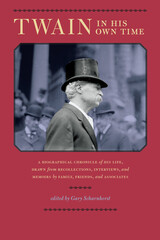 Twain in His Own Time: A Biographical Chronicle of His Life, Drawn from Recollections, Interviews, and Memoirs by Family, Friends, and Associates
Gary Scharnhorst
University of Iowa Press, 2010 Never one to suffer fools gladly, especially if they wore crinolines, Mark Twain lost as many friends as he made, and he targeted them all indiscriminately. The first major American writer born west of the Mississippi River, he enjoys a reputation unrivaled in American literary history, and from the beginning of his career he tried to control that reputation by fiercely protecting his public persona. Not a debunking account of Twain’s life but refreshingly immune from his relentless image making, Gary Scharnhorst’s Twain in His Own Time offers an anecdotal version of Twain’s life over which the master spin-doctor had virtually no control. The ninety-four recollections gathered in Twain in His Own Time form an unsanitized, collaborative biography designed to provide a multitude of perspectives on the iconic author. Opening with an interview with his mother that has never been reprinted, it includes memoirs by his daughters and by men who knew him when he was roughing it in Nevada and California, an interview with the pilot who taught him to navigate the Mississippi River, reminiscences from his illustrators E. M. Kemble and Dan Beard and two of his so-called adolescent angelfish, contributions from politicians and from such literary figures as Dan De Quille and George Bernard Shaw, and one of the most damning assessments of his character—by the author Frank Harris—ever published. Each entry is introduced by a brief explanation of its historical and cultural context; explanatory notes provide further information about people and places; and Scharnhorst’s introduction and chronology of Twain’s eventful life are comprehensive and detailed. Dozens of lively primary sources published incrementally over more than eighty years, most recorded after his death, illustrate the complexities of this flamboyant, outspoken personality in a way that no single biographer could.
 'Twas Only an Irishman's Dream: The Image of Ireland and the Irish in American Popular Song Lyrics, 1800-1920
William H. A. Williams
University of Illinois Press, 1996 Over time, the image of the Irish in the United States changed from that of hard-drinking Paddies to genial working-class citizens. In 'Twas Only an Irishman's Dream, William H. A. Williams traces the change in this image through more than seven hundred pieces of sheet music--popular songs from the stage and for the parlor--to show how Americans' opinions of Ireland and the Irish swung from one extreme to the other. As Williams shows, sheet music's place as a commercial item meant it had to be acceptable to the broadest possible song-buying public. Negotiations about the image of the Irish and Irish Americans involved Irish songwriters, performers, and pressured groups on one side, and non-Irish writers, publishers, and audiences on the other. Williams ties the contents of song lyrics to the history of the Irish diaspora, revealing how societies create ethnic stereotypes and how such stereotypes evolve, and even disappear, from mainstream popular culture.
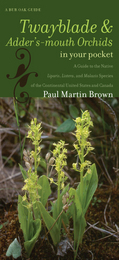 Twayblades and Adder's-mouth Orchids in Your Pocket: A Guide to the Native Liparis, Listera, and Malaxis Species of the Continental United States and Can
Paul Martin Brown
University of Iowa Press, 2008 Native orchids are increasingly threatened by pressure from population growth and development but, nonetheless, still present a welcome surprise to observant hikers in every state and province. Compiled and illustrated by long-time orchid specialist Paul Martin Brown, these pocket guides to the twayblades and adder’s-mouths form part of a series that will cover all the wild orchids of the continental United States and Canada.
Brown provides general distributional information, time of flowering, and habitat requirements for each species as well as a complete list of hybrids and the many different growth and color forms that can make identifying orchids so intriguing. For the twayblades and adder’s-mouths he includes information on 21 species, 1 additional variety, and 2 hybrids.
Most twayblades and adder’s-mouths are relatively small plants with tiny green flowers, but a few have richly colored blooms or particularly interesting habits that attract the native orchid enthusiast. Most of these species are easy to identify based upon their general appearance, range, and time of flowering. Answering three simple questions—when, where, and how does it grow?—and comparing the living plant with the striking photos in the backpack-friendly laminated guide should enable both professional and amateur naturalists to achieve the satisfaction of identifying a specific orchid.
TWC vol 50 num 1
The University of Chicago Press
University of Chicago Press Journals, 2019
TWC vol 50 num 2
The University of Chicago Press
University of Chicago Press Journals, 2019
TWC vol 50 num 3
The University of Chicago Press
University of Chicago Press Journals, 2019
TWC vol 50 num 4
The University of Chicago Press
University of Chicago Press Journals, 2019
TWC vol 51 num 1
The University of Chicago Press
University of Chicago Press Journals, 2020
TWC vol 51 num 2
The University of Chicago Press
University of Chicago Press Journals, 2020
TWC vol 51 num 3
The University of Chicago Press
University of Chicago Press Journals, 2020
TWC vol 51 num 4
The University of Chicago Press
University of Chicago Press Journals, 2020
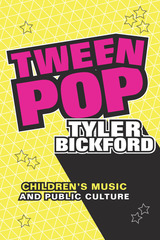 Tween Pop: Children's Music and Public Culture
Tyler Bickford
Duke University Press, 2020 In the early years of the twenty-first century, the US music industry created a new market for tweens, selling music that was cooler than Barney, but that still felt safe for children. In Tween Pop Tyler Bickford traces the dramatic rise of the “tween” music industry, showing how it marshaled childishness as a key element in legitimizing children's participation in public culture. The industry played on long-standing gendered and racialized constructions of childhood as feminine and white—both central markers of innocence and childishness. In addition to Kidz Bop, High School Musical, and the Disney Channel's music programs, Bickford examines Taylor Swift in relation to girlhood and whiteness, Justin Bieber's childish immaturity, and Miley Cyrus/Hannah Montana and postfeminist discourses of work-life balance. In outlining how tween pop imagined and positioned childhood as both intimate and public as well as a cultural identity to be marketed to, Bickford demonstrates the importance of children's music to core questions of identity politics, consumer culture, and the public sphere.
Tweets and the Streets: Social Media and Contemporary Activism
Paolo Gerbaudo
Pluto Press, 2012 Tweets and the Streets analyses the culture of the new protest movements of the 21st century. From the Arab Spring to the 'indignados' protests in Spain and the Occupy movement, Paolo Gerbaudo examines the relationship between the rise of social media and the emergence of new forms of protest.
Gerbaudo argues that activists' use of Twitter and Facebook does not fit with the image of a 'cyberspace' detached from physical reality. Instead, social media is used as part of a project of re-appropriation of public space, which involves the assembling of different groups around 'occupied' places such as Cairo’s Tahrir Square or New York’s Zuccotti Park.
An exciting and invigorating journey through the new politics of dissent, Tweets and the Streets points both to the creative possibilities and to the risks of political evanescence which new media brings to the contemporary protest experience.
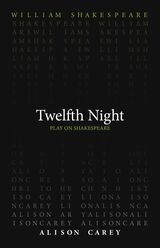 Twelfth Night
William Shakespeare
Arizona Center for Medieval and Renaissance Studies, 2023 Alison Carey brings the confusion and mischief of Shakespeare’s comedy into the twenty-first century.
Shakespeare’s Twelfth Night centers on power and love. One of the most perennially produced of Shakespeare’s comedies, it talks about shipwrecked twins, gender-bending romance, and a bumper crop of fools, from the wise to the ridiculous. Modernizing the language of the play, Alison Carey’s translation revives the joy of this comedy, taking the archaic humor and renewing it for a contemporary audience.
This translation of Twelfth Night was written as part of the Oregon Shakespeare Festival’s Play On! project, which commissioned new translations of thirty-nine Shakespeare plays. These translations present the work of “The Bard” in language accessible to modern audiences while never losing the beauty of Shakespeare’s verse. Enlisting the talents of a diverse group of contemporary playwrights, screenwriters, and dramaturges from diverse backgrounds, this project reenvisions Shakespeare for the twenty-first century. These volumes make these works available for the first time in print—a new First Folio for a new era.
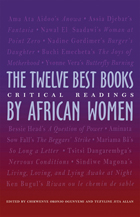 The Twelve Best Books by African Women: Critical Readings
Chikwenye Okonjo Ogunyemi
Ohio University Press, 2009 In 2002, at the annual Zimbabwe International Book Fair, twelve literary books by African women were included for the first time in the category of “Africa’s 100 Best Books of the Twentieth Century.” This was an important but belated affirmation of women writers on the continent and a first step toward establishing a recognized canon of African women’s literature.
The Twelve Best Books by African Women is a collection of critical essays on eleven works of fiction and one play. The titles by African women that were included in the list of “Africa’s 100 Best Books of the Twentieth Century” are: Anowa, Ama Ata Aidoo (1970); A Question of Power, Bessie Head (1974); Woman at Point Zero, Nawal El Saadawi (1975); The Beggars’ Strike, Aminata Sow Fall (1979); Burger’s Daughter, Nadine Gordimer (1979); The Joys of Motherhood, Buchi Emesheta (1979); So Long a Letter, Mariama Bâ (1980); Fantasia: An Algerian Cavalcade, Assia Djebar (1983); Nervous Conditions, Tsitsi Dangarembga (1988); Living, Loving and Lying Awake at Night, Sindiwe Magona (1991); Butterfly Burning, Yvonne Vera (1998); Riwan ou le chemin de sable, Ken Bugul (1999).
This collection of original essays recognizes the gesture of inclusion as an important shift in consciousness and creates a fresh awareness of the literary works by African women writers. Each essay offers a penetrating analysis of individual texts and opens up a fresh perspective that allows scholars and students alike to explore new dimensions of these writers’ work.
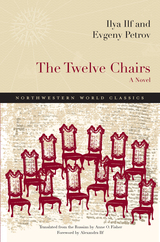 The Twelve Chairs: A Novel
Ilya Ilf and Evgeny Petrov, Translated from the Russian by Anne O. Fisher with a Foreword by Alexander Ilf
Northwestern University Press, 2011 Winner, 2012 Northern California Book Award for Fiction in Translation
More faithful to the original text and its deeply resonant humor, this new translation of The Twelve Chairs brings Ilf and Petrov’s Russian classic fully to life. The novel’s iconic hero, Ostap Bender, an unemployed con artist living by his wits, joins forces with Ippolit Matveyevich Vorobyaninov, a former nobleman who has returned to his hometown to look for a cache of missing jewels hidden in chairs that have been appropriated by the Soviet authorities. The search for the chairs takes them from the provinces of Moscow to the wilds of the Transcaucasus mountains. On their quest they encounter a variety of characters, from opportunistic Soviet bureaucrats to aging survivors of the old propertied classes, each one more selfish, venal, and bungling than the last. A brilliant satire of the early years of the Soviet Union, as well as the inspiration for a Mel Brooks film, The Twelve Chairs retains its universal appeal.
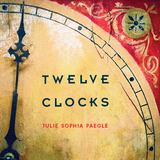 Twelve Clocks
Julie Sophia Paegle
University of Arizona Press, 2015 From the fall of Troy recorded at the beginning of Western poetry to the ongoing mass extinction of species, Twelve Clocks meditates on the temporality of loss across the many scales of our experience and knowledge. Framed by central images of beginnings and ends, this collection searches six cities and intervals of time for the measures of loss, labor, and care. Through formal innovations derived from the second, the minute, the hour, etc., and the methods of their measure, these poems move from the stark violence of Homer’s tale to the terrible precision and power of the atomic age.
As the reader is transported from Las Vegas to Argentina to the landscapes of Ancient Greek epic poetry, Twelve Clocks explores the connections between song, ancestry, family, loss, and time. If the imagery of the collection hints Troy might be an image of the wrecked Argentine economy under neoliberal economics, the poems eschew the abstractions of politics in favor of a vivid and sensuous lyricism.
The interconnectivity of the poems in Twelve Clocks is mirrored by different elements’ transcendence throughout the collection. The clock that goes missing in one poem turns up in another, characters vanish and reappear, matter destroyed in one poem reoccurs as energy in another, and then matter and energy both go missing. Taken together, the poems confront the literary legacy of Western poetic tradition and our shared future.
Twelve Englishmen of Mystery
Edited by Earl F. Bargainnier
University of Wisconsin Press, 1984 There are hundreds of satisfactory and satisfying British mystery writers whose works should be studied both for their own individual accomplishments and for their comments on the society in which they were published, in the last 150 years, but who have not received any critical comment lately.
This volume is designed to correct that fault in a dozen of those unjustifiably neglected British authors: Wilkie Collins, A.E.W. Mason, G.K. Chesterton, H.C. Bailey, Anthony Berkeley Cox, Nicholas Blake, Michael Gilbert, Julian Symons, Dick Francis, Edmund Crispin, H.R.F. Keating, and Simon Brett.
Twelve Films about Love and Heaven
Pete Fraser
St. Augustine's Press, 2023 Peter Fraser revisits stories told onscreen that in different ways all convey clear and ringing truths and touch the deepest human chords. Spanning different time periods and cultures, Twelve Films about Love and Heaven speaks to the hearts of those who cry at old movies and the old abiding Faith, and who believe a well-written book is always worth the time. It is a reminder to both artists and spectators that the pursuit of virtue, and above all in our family roles, is the greatest of adventures and the most glorious of victories.
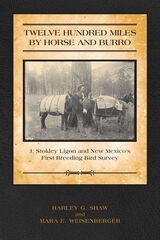 Twelve Hundred Miles by Horse and Burro: J. Stokley Ligon and New Mexico’s First Breeding Bird Survey
Harley G. Shaw and Mara E. Weisenberger
University of Arizona Press, 2011 J. Stokley Ligon's work in bird conservation, habitat protection, and wildlife legislation during the mid-twentieth century is well-documented in his own writing and the writing of others. But hovering in the background of Ligon's life story has always been the rumor of a trip he made alone as a young man in 1913 in which he covered much of New Mexico alone on horseback. Details of the trip had faded into history, and Ligon—a self-effacing man—had never published the story.
As it turns out, the trek was Ligon's first job with the US Biological Survey, and it did not go entirely undocumented. The breeding bird population report that eventually resulted from the journey, photographs from glass plate negatives, and—perhaps most enticingly—Ligon's own personal diary from these travels are presented here. Not just a compelling account of the expedition itself, the materials and insights found in this volume also reveal aspects of Ligon's family history, his early interest in wildlife, and the development of the wilderness skills needed to undertake such a survey.
Using his original itinerary and handwritten report, the authors of this book revisited many of the places that Ligon surveyed and in a few cases were even able to locate and repeat Ligon's early photographs. Combined with a discussion of the conditions of birds and other wildlife then and now, this volume serves as a useful tool for understanding how wildlife numbers, distribution, and habitats changed in New Mexico over the course of the twentieth century.
Birding enthusiasts, historians, naturalists, and even armchair adventurers will all find something to love in this chronicle of a young man from a West Texas ranching family with a driving ambition to be a professional naturalist and writer.
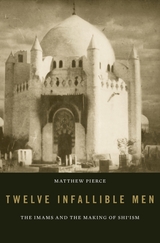 Twelve Infallible Men: The Imams and the Making of Shi’ism
Matthew Pierce
Harvard University Press, 2016 A millennium ago, Baghdad was the capital of one of history’s greatest civilizations. A new Islamic era was under way. Yet despite the profound cultural achievements, many Muslims felt their society had gone astray. Shiˀa Muslims challenged the dominant narrative of Islamic success with stories of loss. Faithful Muslims have long debated whether Sunni caliphs or Shiˀa imams were the true heirs of the Prophet Muhammad. More influential has been the way Muslim communities remembered those disputes through stories that influenced how to think and feel about them, Matthew Pierce argues.
Twelve Infallible Men focuses on the role of narratives of the imams in the development of a distinct Shiˀa identity. During the tenth century, at a critical juncture in Islamic history, a group of scholars began assembling definitive works containing accounts of the twelve imams’ lives. These collective biographies constructed a sacred history, portraying the imams as strong, beautiful, learned, and pious. Miracles surrounded their birth, and they became miracle workers in turn, but were nevertheless betrayed and martyred by enemies.
These biographies inspired and entertained, but more importantly they offered a meaningful narrative of history for Muslims who revered the imams. The accounts invoked shared memories and shaped communal responses and ritual practices of grieving. Mourning the imams’ tragic fates helped nascent Shiˀa communities resist the pressure to forget their story. The biographies of the imams became a focal point of cultural memory, inspiring Shiˀa religious imagination for centuries to come.
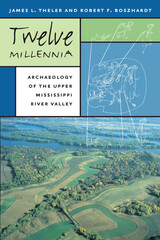 Twelve Millennia: Archaeology of the Upper Mississippi River Valley
James L Theler
University of Iowa Press, 2003 The people of Taquile Island on the Peruvian side of beautiful Lake Titicaca, the highest navigable lake in the Americas, are renowned for the hand-woven textiles that they both wear and sell to outsiders. One thousand seven hundred Quechua-speaking peasant farmers, who depend on potatoes and the fish from the lake, host the forty thousand tourists who visit their island each year. Yet only twenty-five years ago, few tourists had even heard of Taquile. In Weaving a Future: Tourism, Cloth, and Culture on an Andean Island, Elayne Zorn documents the remarkable transformation of the isolated rocky island into a community-controlled enterprise that now provides a model for indigenous communities worldwide. Over the course of three decades and nearly two years living on Taquile Island, Zorn, who is trained in both the arts and anthropology, learned to weave from Taquilean women. She also learned how gender structures both the traditional lifestyles and the changes that tourism and transnationalism have brought. In her comprehensive and accessible study, she reveals how Taquileans used their isolation, landownership, and communal organizations to negotiate the pitfalls of globalization and modernization and even to benefit from tourism. This multi-sited ethnography set in Peru, Washington, D.C., and New York City shows why and how cloth remains central to Andean society and how the marketing of textiles provided the experience and money for Taquilean initiatives in controlling tourism. The first book about tourism in South America that centers on traditional arts as well as community control, Weaving a Future will be of great interest to anthropologists and scholars and practitioners of tourism, grassroots development, and the fiber arts.
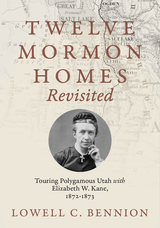 Twelve Mormon Homes Revisited: Touring Polygamous Utah with Elizabeth Kane, 1872-1873
Lowell C. Bennion
University of Utah Press, 2024 In Twelve Mormon Homes: Visited in Succession on a Journey through Utah to Arizona, first published in 1874, Elizabeth Kane recorded impressions of what she heard and saw among the Mormon people in the twelve communities that hosted her and her family. Neither an apologist nor a convert, Kane maintained her anti-polygamy stance, even while gaining admiration for the women who had entered and endured what she considered an objectionable practice. In this new volume, Lowell C. Bennion immerses readers in the social and architectural worlds encountered by Kane. He provides descriptions of the people and customs of the plural families that hosted her and reconstructions of what the houses looked like at the time of the visit, particularly valuable to contemporary readers because all but two—the Hinckley house at Cove Creek Fort and the Dame house in Parowan—have long since been demolished. By retracing Elizabeth Kane's steps, readers will gain a new perspective on attitudes toward Mormon life in the nineteenth century.
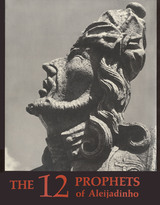 Twelve Prophets of Aleijadinho
Hans Mann
University of Texas Press, 1967 They stand on a hilltop in the mountains of Minas Gerais in Brazil—twelve dramatic figures, twelve Old Testament prophets soundlessly crying their warnings to mankind. There they have stood for over two centuries, masterpieces by that strange, unhappy sculptor, Antonio Francisco Lisboa—or, as he is better known, Aleijadinho, "The Little Cripple." These figures, some mirroring in their faces the calm certainty of their prophesies and some reflecting the desperation of their warnings, have an impact upon the mind and the emotions of the modern viewer fully as great as their effect must have been upon those for whom they were originally carved—the adventurers of the lusty goldmining region which was eighteenth-century Minas Gerais. Their impact draws added depth from the realization that they bear also the mark of the anguish of their creator. Aleijadinho, the mulatto son of a local builder, grew up untutored amid the building fever of the mining centers, grew up to endure throughout the last half of his long life the physical torment and the mental suffering of a painful and mutilating disease. Yet, developing his self-schooled talent, he stamped the hallmark of his creativity upon the religious art of the whole region. In this volume the late artist photographer Hans Mann provides a sensitive pictorial study of the Twelve Prophets, of the six scenes of the Crucifixion which stand just below the Prophets on that windy hillside at Congonhas do Campo, and of other representative examples of the sculpture of Aleijadinho. A brief text by the photographer's wife, Graciela Mann, provides the information and background needed for the fullest enjoyment of the pictures. The prose poem "When the Statues Speak," by Carlos Drummond de Andrade, sets the dramatic mood for the photographs of the Prophets themselves.
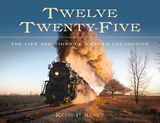 Twelve Twenty-Five: The Life and Times of a Steam Locomotive
Kevin P. Keefe
Michigan State University Press, 2016 The against-all-odds story of a World War II–era steam locomotive and the determination of two generations of volunteers to keep it running comes alive in Twelve Twenty-Five: The Life and Times of a Steam Locomotive.
Pere Marquette 1225 was built in 1941 at the peak of steam locomotive development. The narrative traces the 1225’s regular freight service in Michigan, its unlikely salvation from the scrapyard for preservation at Michigan State University, and the subsequent work to bring it back to steam, first by a student club and later by a railroad museum. Milestones along the way include 1225’s retirement in 1951, its donation to MSU in 1957, its return to steam in 1988, a successful career hauling tens of thousands of excursion riders, and its starring role in the 2004 movie The Polar Express. The massive infrastructure that supported American steam locomotives in their heyday disappeared long ago, forcing 1225’s faithful to make their own spare parts, learn ancient railroad skills, and interpret the entire effort for the public. As such, the continuing career of 1225 is a triumph of historic preservation.
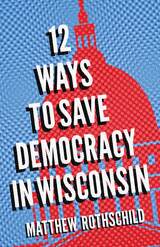 Twelve Ways to Save Democracy in Wisconsin
Matthew Rothschild
University of Wisconsin Press, 2021 Wisconsin, once a progressive stronghold led by Robert La Follette and others, inaugurated far-reaching reforms that broadened public involvement in civic affairs. A wave of innovative social programs aimed at making the state more egalitarian followed. In recent decades, however, the Badger State has become a laboratory for antidemocratic maneuvers that have increased the political influence of the super-rich and corporations while decreasing the power of voters.
From tightening campaign finance laws and banning gerrymandering to rooting out structural racism and moving toward economic equality, each chapter focuses on one of the dozen reforms that are required to heal democracy within the state. Rothschild provides an in-depth rationale for each, dismantling the counterarguments against them and exploring the complexities involved in implementing them. He offers concrete proposals and action items for grassroots organizers and concerned community advocates to restore constituent control of state politics. This pocket-sized handbook is essential for politically aware citizens as well as journalists and watchdogs who see Wisconsin as a crucial battleground state and political bellwether for the nation.
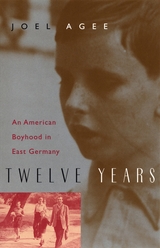 Twelve Years: An American Boyhood in East Germany
Joel Agee
University of Chicago Press, 2000 Joel Agee, the son of James Agee, was raised for twelve years in East Germany, where his stepfather, the novelist Bodo Uhse, was a member of the privileged communist intelligentsia. This is the story of how young Joel failed to become a good communist, becoming instead a fine writer.
"A wonderfully evocative memoir. . . . Agee evoked for me the atmosphere of postwar Berlin more vividly than the actual experience of it—and I was there." —Christopher Lehmann-Haupt, New York Times
"One of those rare personal memoirs that brings to life a whole country and an epoch." —Christopher Isherwood
"Twelve Years consists of a series of finely honed anecdotes written in a precise, supple prose rich with sensual detail." —David Ghitelman, Newsday
"By turns poetic and picturesque, Agee energetically catalogues his expatriate passage to manhood with a pinpoint eye and a healthy American distaste for pretension. . . . Huckleberry Finn would have . . . welcomed [him] as a soulmate on the raft." —J. D. Reed, Time
"A triumph. . . . Unfettered by petty analysis or quick explanations, a story that is timeless and ageless and vital." —Robert Michael Green, Baltimore Sun
 Twelve-Cent Archie
Beaty, Bart
Rutgers University Press, 2015 For over seventy-five years, Archie and the gang at Riverdale High have been America’s most iconic teenagers, delighting generations of readers with their never-ending exploits. But despite their ubiquity, Archie comics have been relatively ignored by scholars—until now.
Twelve-Cent Archie is not only the first scholarly study of the Archie comic, it is an innovative creative work in its own right. Inspired by Archie’s own concise storytelling format, renowned comics scholar Bart Beaty divides the book into a hundred short chapters, each devoted to a different aspect of the Archie comics. Fans of the comics will be thrilled to read in-depth examinations of their favorite characters and motifs, including individual chapters devoted to Jughead’s hat and Archie’s sweater-vest. But the book also has plenty to interest newcomers to Riverdale, as it recounts the behind-the-scenes history of the comics and analyzes how Archie helped shape our images of the American teenager.
As he employs a wide range of theoretical and methodological approaches, Beaty reveals that the Archie comics themselves were far more eclectic, creative, and self-aware than most critics recognize. Equally comfortable considering everything from the representation of racial diversity to the semiotics of Veronica’s haircut, Twelve-Cent Archie gives a fresh appreciation for America’s most endearing group of teenagers.
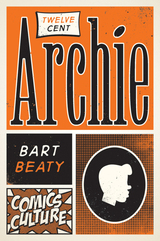 Twelve-Cent Archie: New edition with full color illustrations
Beaty, Bart
Rutgers University Press, 2017 For over seventy-five years, Archie and the gang at Riverdale High have been America’s most iconic teenagers, delighting generations of readers with their never-ending exploits. But despite their ubiquity, Archie comics have been relatively ignored by scholars—until now.
Twelve-Cent Archie is not only the first scholarly study of the Archie comic, it is an innovative creative work in its own right. Inspired by Archie’s own concise storytelling format, renowned comics scholar Bart Beaty divides the book into a hundred short chapters, each devoted to a different aspect of the Archie comics. Fans of the comics will be thrilled to read in-depth examinations of their favorite characters and motifs, including individual chapters devoted to Jughead’s hat and Archie’s sweater-vest. But the book also has plenty to interest newcomers to Riverdale, as it recounts the behind-the-scenes history of the comics and analyzes how Archie helped shape our images of the American teenager.
As he employs a wide range of theoretical and methodological approaches, Beaty reveals that the Archie comics themselves were far more eclectic, creative, and self-aware than most critics recognize. Equally comfortable considering everything from the representation of racial diversity to the semiotics of Veronica’s haircut, Twelve-Cent Archie gives a fresh appreciation for America’s most endearing group of teenagers.
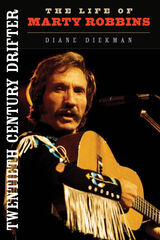 Twentieth Century Drifter: The Life of Marty Robbins
Diane Diekman
University of Illinois Press, 2012 Twentieth Century Drifter: The Life of Marty Robbins is the first biography of this legendary country music artist and NASCAR driver who scored sixteen number-one hits and two Grammy awards. Yet even with fame and fortune, Marty Robbins always yearned for more.
Drawing from personal interviews and in-depth research, biographer Diane Diekman explains how Robbins saw himself as a drifter, a man always searching for self-fulfillment and inner peace. Born Martin David Robinson to a hardworking mother and an abusive alcoholic father, he never fully escaped the insecurities burned into him by a poverty-stricken nomadic childhood in the Arizona desert. In 1947 he got his first gig as a singer and guitar player. Too nervous to talk, the shy young man walked onstage singing. Soon he changed his name to Marty Robbins, cultivated his magnetic stage presence, and established himself as an entertainer, songwriter, and successful NASCAR driver.
For fans of Robbins, NASCAR, and classic country music, Twentieth Century Drifter: The Life of Marty Robbins is a revealing portrait of this well-loved, restless entertainer, a private man who kept those who loved him at a distance.
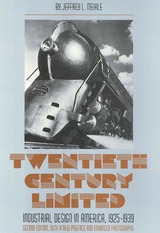 Twentieth Century Limited: Industrial Design In America 1925-1939
Jeffrey L. Meikle
Temple University Press, 2001 In the late 1920's "streamlined" became the term businessmen used to describe new models that were easier to produce as well as those that met with less sales resistance than older products. Illustrating this concept with streamlined objects from soup cans to the Chrysler building, Jeffrey Meikle's classic book, Twentieth Century Limited, celebrates the birth of the industrial design profession from 1925-1939. This second edition includes a new preface and improved photographic reproduction.
Commercial artists who answered the call of business -- Walter Dorwin Teague, Norman Bel Geddes, Henry Dreyfuss, and Raymond Loewy the best known among them -- were pioneers who envisioned a coherent machine-age environment in which life would be clean, efficient, and harmonious. Working with new materials -- chrome, stainless steel, Bakelite plastic -- they created a streamlined expressionist style which reflected the desire of the Depression-era public for a frictionless, static society.
Appliances such as Loewy's Coldspot refrigerator "set a new standard" (according to the advertisements), and its usefulness extended to the way it improved the middle-class consumer's taste for sleek new products.
Profusely illustrated with 150 photographs, Twentieth Century Limited pays tribute to the industrial designers and the way they transformed American culture; a generation after its initial publication, this book remains the best introduction to the subject. The new edition will fascinate anyone interested in art, architecture, technology, and American culture of the 1930's.
 A Twentieth Century Prophet: Oscar Jaszi, 1875-1957
György Litván
Central European University Press, 2006 A fascinating look at a man, who fought for liberal ideals and for progress in Central Europe but was forced to spend the latter half of his life in America. Oscar Jászi was a historian, political theorist and sociologist, who dedicated his tremendous intellect to modern democracy in Hungary. Exiled from his homeland, Jászi's moral courage stood strong against the political tyranny and totalitarianism of the interwar period that nearly destroyed Hungary's political and social foundations. From his early years in Budapest to his later life as professor at Oberlin College in Ohio, he worked tirelessly for what he described as "a new moral, social, and economic synthesis is needed." The life of Oscar Jászi represents one of the great triumphs of reason over violence, regardless of the defeat of his vision for a 'Danubian Federation,' and his subsequent exile. His vow to not be buried in an undemocratic Hungary was kept, and as his country emerged from the ruins of the Soviet block, his remains were transferred to Budapest in 1991, a symbol of his lasting philosophy and the spirit of his will.
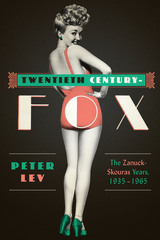 Twentieth Century-Fox: The Zanuck-Skouras Years, 1935–1965
By Peter Lev
University of Texas Press, 2013 When the Fox Film Corporation merged with Twentieth Century Pictures in 1935, the company posed little threat to industry juggernauts such as Paramount and MGM. In the years that followed however, guided by executives Darryl F. Zanuck and Spyros Skouras, it soon emerged as one of the most important studios. Though working from separate offices in New York and Los Angeles and often of two different minds, the two men navigated Twentieth Century-Fox through the trials of the World War II boom, the birth of television, the Hollywood Blacklist, and more to an era of exceptional success, which included what was then the highest grossing movie of all time, The Sound of Music. Twentieth Century-Fox is a comprehensive examination of the studio’s transformation during the Zanuck-Skouras era. Instead of limiting his scope to the Hollywood production studio, Lev also delves into the corporate strategies, distribution models, government relations, and technological innovations that were the responsibilities of the New York headquarters. Moving chronologically, he examines the corporate history before analyzing individual films produced by Twentieth Century-Fox during that period. Drawn largely from original archival research, Twentieth Century-Fox offers not only enlightening analyses and new insights into the films and the history of the company, but also affords the reader a unique perspective from which to view the evolution of the entire film industry.
 Twentieth-Century American Literary Naturalism: An Interpretation
Donald Pizer
Southern Illinois University Press, 1982
Scorned by critics since birth, decreed dead by many, naturalism, according to Donald Pizer, is “one of the most persistent and vital strains in American fiction, perhaps the only modern literary form in America that has been both popular and significant.”
To define naturalism and explain its tenacious hold throughout the twentieth century on the American creative imagination, Pizer explores six novels: James T. Farrell’s Studs Lonigan, John Dos Passos’s U.S.A., John Steinbeck’s The Grapes of Wrath, Norman Mailer’s The Naked and the Dead, William Styron’s Lie Down in Darkness, and Saul Bellow’s The Adventures of Augie March.
Pizer’s approach to these novels is empirical; he does not wrench each novel awkwardly until it fits his framework of generalizations and principles; rather, he approaches the novels as fiction and arrives at his definition through his close reading of the works.
Establishing the background of naturalism, Pizer explains that it comes under attack because it is “sordid and sensational in subject matter,” it challenges “man’s faith in his innate moral sense and thus his responsibility for his actions,” and it is so full of “social documentation” that it is often dismissed as little more than a photographic record of a life or an era; thus the “aesthetic validity of the naturalistic novel has often been questioned.”
Pizer posits the 1890s, the 1930s,and the late 1940s as the decades when naturalism flourished in America. He concentrates on literary criticism, not on the philosophy ofnaturalism, to show that literary criticism can make a contribution to a particularly muddled area of literary history—a naturalism that is alive and changing, thus resisting the neat definitions reserved for the dead.
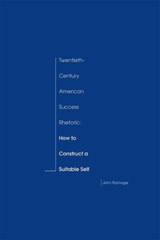 Twentieth-Century American Success Rhetoric: How to Construct a Suitable Self
John Ramage
Southern Illinois University Press, 2005 Self-help authors like Tom Peters and Stephen Covey, who have dominated best-seller lists over the last two decades, have exercised increasing influence on political, governmental, and educational organizations. By contrast, the topic of American success books— texts that promise to help readers succeed by retrofitting their identity to meet workplace demands—has been ignored by scholars since the 1980s. John Ramage challenges the neglect of this hugely popular literature and revives a once-lively conversation among eminent critics about the social phenomenon represented in the work of Bruce Barton, Dale Carnegie, and Norman Vincent Peale, among others. Using literary texts from Don Quixote to Catch-22 to gloss the discussion, Ramage utilizes Kenneth Burke’s rhetorical theory to understand symbolic acts and social issues and brings together earlier commentaries within a new critical framework. He considers the problematic and paradoxical nature of success and examines its meaning in terms of its traditional dialectic partner, happiness. A synopsis of seventeenth- to nineteenth-century forerunners prefaces this analysis in which Ramage links literary code heroes with the activities of twentieth-century business leaders to determine whether, in the search for authenticity, the heroic individual or the corporation is ultimately served. This comprehensive study chronicles the legitimation of the success book genre, enumerates rhetorical strategies used to win over readers, and supplies the historical context that renders each book’s message timely. After considering some of the dangers of crossing disciplinary borders, as exemplified by Deborah Tannen’s work, Ramage critiques Stanley Fish’s theoretical strictures against this practice, finally summoning academic critics to action with a strong call to exert greater influence within the popular marketplace.
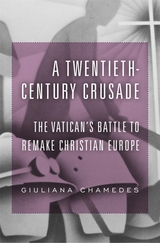 A Twentieth-Century Crusade: The Vatican’s Battle to Remake Christian Europe
Giuliana Chamedes
Harvard University Press, 2019 The first comprehensive history of the Vatican’s agenda to defeat the forces of secular liberalism and communism through international law, cultural diplomacy, and a marriage of convenience with authoritarian and right-wing rulers.
After the United States entered World War I and the Russian Revolution exploded, the Vatican felt threatened by forces eager to reorganize the European international order and cast the Church out of the public sphere. In response, the papacy partnered with fascist and right-wing states as part of a broader crusade that made use of international law and cultural diplomacy to protect European countries from both liberal and socialist taint.
A Twentieth-Century Crusade reveals that papal officials opposed Woodrow Wilson’s international liberal agenda by pressing governments to sign concordats assuring state protection of the Church in exchange for support from the masses of Catholic citizens. These agreements were implemented in Mussolini’s Italy and Hitler’s Germany, as well as in countries like Latvia, Lithuania, and Poland. In tandem, the papacy forged a Catholic International—a political and diplomatic foil to the Communist International—which spread a militant anticommunist message through grassroots organizations and new media outlets. It also suppressed Catholic antifascist tendencies, even within the Holy See itself.
Following World War II, the Church attempted to mute its role in strengthening fascist states, as it worked to advance its agenda in partnership with Christian Democratic parties and a generation of Cold War warriors. The papal mission came under fire after Vatican II, as Church-state ties weakened and antiliberalism and anticommunism lost their appeal. But—as Giuliana Chamedes shows in her groundbreaking exploration—by this point, the Vatican had already made a lasting mark on Eastern and Western European law, culture, and society.
Twentieth-Century Literature in Retrospect
Reuben Arthur Brower
Harvard University Press The sixteen essays in this second volume of Harvard English Studies explore and reevaluate the work of twentieth-century writers and critics from Joyce and James to Iris Murdoch and Mailer, from Yeats and Eliot to critics and poets of the present generation. Part I, “Writers and Critics,” includes among other essays an exploration of erotic imagination in Dubliners and a study of Dickensian motifs in Murdoch’s London novels. Other articles deal with the present standing of Yeats’s and Eliot’s poetry, the prosodies of free verse, and the role of the writer in modern fiction. Part II, “Twentieth Century Valuations Reconsidered” assesses some of the influential twentieth-century critical positions on Shakespeare, the pastoral, Donne, the metaphysical poets, Milton, Pope, and Wordsworth. Distinguished contributors include Josephine Miles, Frank Kermode, F. R. Leavis, and Christopher Ricks.
 Twentieth-Century New England Land Conservation: A Heritage of Civic Engagement
Charles H. W. Foster
Harvard University Press Written by and about New Englanders, this book is relevant to others attempting to address conservation problems on a regional basis. These are the stories of people acting the New England way—recognizing a need, taking on a responsibility without being asked, and applying the Yankee attitude in order to bring about tangible conservation gains. But above all, the account is one of hope for the future for, as the authors document, conditions at the turn of the twentieth century were of a nature we would not tolerate today: cut and burned-over forests, eroded topsoil, depleted farmlands, streams choked with refuse and pollution, and species at the very brink of extinction. The stories told here are of people using what they had, setting to work to remedy these conditions, and doing so successfully. At a time of growing concern for the environment both locally and globally, theirs is a story certain to inform and inspire the next generation of conservation leaders.
Twentieth-Century Pittsburgh, Volume Two: The Post-Steel Era
Roy Lubove
University of Pittsburgh Press, 1996 This volume traces the major decisions, events, programs, and personalities that transformed the city of Pittsburgh during its urban renewal project, which began in 1977. Roy Lubove demonstrates how the city showed united determination to attract high technology companies in an attempt to reverse the economic fallout from the decline of the local steel industry. Lubove also separates the successes from the failures, the good intentions from the actual results.
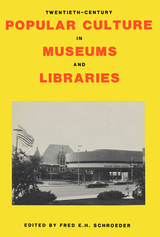 Twentieth-Century Popular Culture in Museums and Libraries
Fred E.H. Schroeder
University of Wisconsin Press, 1981 Although libraries and museums for many centuries have taken the lead, under one rational or another, in recovering, storing, and displaying various kinds of culture of their periods, lately, as the gap between elite and popular culture has apparently widened, these repositories of artifacts of the present for the future have tended to drift more and more to what many people call the aesthetically pleasing elements of our culture. The degree to which our libraries and museums have ignored our culture is terrifying, when one scans the documents and artifacts of our time which, if history in any wise repeats itself, will in the immediate and distant future become valuable indices of our present culture to future generations. As Professor Schroeder dramatically states it, “No doubt about it, it is the contemporary popular culture that is the endangered species.”
The essays in this book investigate the reasons for present-day neglect of popular culture materials and chart the various routes by which conscientious and insightful librarians and museum directors can correct this disastrous oversight.
Twentieth-Century Russian Poetry
John Glad
University of Iowa Press, 1992
This celebrated anthology, first published in 1978 as Russian Poetry: The Modern Period, provides a much-needed panoramic overview of Russian poetry since the Bolshevik Revolution of 1917.
Major features of this collection include a new and expanded introduction, a substantial new section of glasnost-era poetry, a generous sampling of postrevolutionary poetry in Russia, full representation of poets of the first and second post-World War II generations, and poetry of the successive emigrations, flights, or expulsions from Russia.
Twentieth-Century Russian Poetry makes an important contribution to our continuing understanding of a changing world order. This anthology should be read by all those who wish to know more about the poetry of Russia, those interested in international cultural and literary history, and all Slavicists.
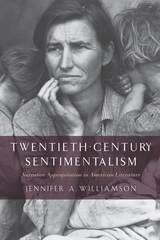 Twentieth-Century Sentimentalism: Narrative Appropriation in American Literature
Williamson, Jennifer A.
Rutgers University Press, 2013 Today’s critical establishment assumes that sentimentalism is an eighteenth- and nineteenth-century literary mode that all but disappeared by the twentieth century. In this book, Jennifer Williamson argues that sentimentalism is alive and well in the modern era. By examining working-class literature that adopts the rhetoric of “feeling right” in order to promote a proletarian or humanist ideology as well as neo-slave narratives that wrestle with the legacy of slavery and cultural definitions of African American families, she explores the ways contemporary authors engage with familiar sentimental clichés and ideals. Williamson covers new ground by examining authors who are not generally read for their sentimental narrative practices, considering the proletarian novels of Grace Lumpkin, Josephine Johnson, and John Steinbeck alongside neo-slave narratives written by Margaret Walker, Octavia Butler, and Toni Morrison. Through careful close readings, Williamson argues that the appropriation of sentimental modes enables both sympathetic thought and systemic action in the proletarian and neo-slave novels under discussion. She contrasts appropriations that facilitate such cultural work with those that do not, including Kathryn Stockett’s novel and film The Help. The book outlines how sentimentalism remains a viable and important means of promoting social justice while simultaneously recognizing and exploring how sentimentality can further white privilege.
Sentimentalism is not only alive in the twentieth century. It is a flourishing rhetorical practice among a range of twentieth-century authors who use sentimental tactics in order to appeal to their readers about a range of social justice issues. This book demonstrates that at stake in their appeals is who is inside and outside of the American family and nation.
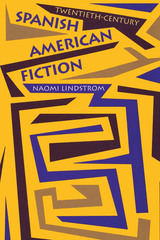 Twentieth-Century Spanish American Fiction
By Naomi Lindstrom
University of Texas Press, 1994 Spanish American fiction became a world phenomenon in the twentieth century through multilanguage translations of such novels as Gabriel Garcia Marquez's One Hundred Years of Solitude, Manuel Puig's Kiss of the Spider Woman, Octavio Paz's Labyrinth of Solitude, and Isabel Allende's House of the Spirits. Yet these "blockbusters" are only a tiny fraction of the total, rich outpouring of Spanish-language literature from Latin America. In this book, Naomi Lindstrom offers English-language readers a comprehensive survey of the century's literary production in Latin America (excluding Brazil). Discussing movements and trends, she places the famous masterworks in historical perspective and highlights authors and works that deserve a wider readership. Her study begins with Rodó's famous essay Ariel and ends with Rigoberta Menchú's 1992 achievement of the Nobel Prize. Her selection of works is designed to draw attention, whenever possible, to works that are available in good English translations. A special feature of the book is its treatment of the "postboom" period. In this important concluding section, Lindstrom discusses documentary narratives, the new interrelations between popular culture and literary writing, and underrepresented groups such as youth cultures, slum dwellers, gays and lesbians, and ethnic enclaves. Written in accessible, nonspecialized language, Twentieth-Century Spanish American Fiction will be equally useful for general readers as a broad overview of this vibrant literature and for scholars as a reliable reference work.
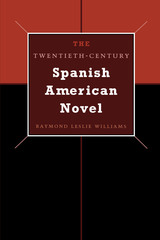 The Twentieth-Century Spanish American Novel
By Raymond Leslie Williams
University of Texas Press, 2003 A Choice Magazine Outstanding Academic Book Spanish American novels of the Boom period (1962-1967) attracted a world readership to Latin American literature, but Latin American writers had already been engaging in the modernist experiments of their North American and European counterparts since the turn of the twentieth century. Indeed, the desire to be "modern" is a constant preoccupation in twentieth-century Spanish American literature and thus a very useful lens through which to view the century's novels. In this pathfinding study, Raymond L. Williams offers the first complete analytical and critical overview of the Spanish American novel throughout the entire twentieth century. Using the desire to be modern as his organizing principle, he divides the century's novels into five periods and discusses the differing forms that "the modern" took in each era. For each period, Williams begins with a broad overview of many novels, literary contexts, and some cultural debates, followed by new readings of both canonical and significant non-canonical novels. A special feature of this book is its emphasis on women writers and other previously ignored and/or marginalized authors, including experimental and gay writers. Williams also clarifies the legacy of the Boom, the Postboom, and the Postmodern as he introduces new writers and new novelistic trends of the 1990s.
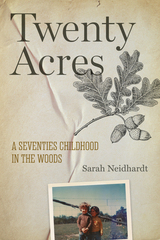 Twenty Acres: A Seventies Childhood in the Woods
Sarah Neidhardt
University of Arkansas Press, 2023 "A memoir infused with both empathy and inquiry." —Wendy J. Fox, Electric Literature
“Twenty Acres is an engaging, thoughtful memoir of growing up in an off-the-grid cabin as part of the 1970s back-to-the-land movement. Sarah Neidhardt captures her subject beautifully and offers a compelling portrait of a highly specific, historically significant time and place.”
—Kate Daloz, author of We Are As Gods: Back to the Land in the 1970s on the Quest for a New America
Sarah Neidhardt grew up in the woods. When she was an infant, her parents left behind comfortable, urbane lives to take part in the back-to-the-land movement. They moved their young family to an isolated piece of land deep in the Arkansas Ozarks where they built a cabin, grew crops, and strove for eight years to live self-sufficiently.
In this vivid memoir Neidhardt explores her childhood in wider familial and social contexts. Drawing upon a trove of family letters and other archival material, she follows her parents’ journey from privilege to food stamps—from their formative youths, to their embrace of pioneer homemaking and rural poverty, to their sudden and wrenching return to conventional society—and explores the back-to-the-land movement of the 1970s as it was, and as she lived it.
A story of strangers in a strange land, of class, marriage, and family in a changing world, Twenty Acres: A Seventies Childhood in the Woods is part childhood idyll, part cautionary tale. Sarah Neidhardt reveals the treasures and tolls of unconventional, pastoral lives, and her insightful reflections offer a fresh perspective on what it means to aspire to pre-industrial lifestyles in a modern world.
Twenty First Century Blues
Richard Cecil
Southern Illinois University Press, 2004 Death, fame, art, and religion become comic subjects in Twenty First Century Blues, the fourth collection from Richard Cecil.Whether elegizing his predecessors, predicting his own end, channeling Dickinson’s “corpse-eye-view of stony death,” or imagining Yeats living in Indiana and dealing with English department politics, Cecil tempers his morbidity with a straightforward, tender brand of humor and a refreshing honesty about the shelf life of contemporary poetry. Deadpan and dark, yet pulsing with the spirit of life, these poems speak of historic France, Italy, and Switzerland, where religious persecutions, ancient catastrophes, and other, less personal, failures overshadow the disappointments and shortcomings of the poet’s modern life in the Midwest. Grimly cheered by these revelations, Cecil shows that poets, like cicadas screaming in the summer air, “won’t shut up until we’re skeletons.”
Twenty Miles From A Match: Homesteading In Western Nevada
Sarah E. Olds
University of Nevada Press, 1978 Twenty Miles From a Match, originally published in 1978, is the autobiography of an indomitable woman and her family’s twenty years of adventures and misadventures in a desert wilderness. In 1908, a venturesome woman named Sarah Olds packed up her brood and went homesteading in the deserts north of Reno, west of Sutcliffe on Pyramid Lake. Her ailing husband said, welcoming her to their new home, "There, old lady. There’s your home, and it’s damn near in the heart of Egypt." Olds tells of the hardships, frustrations, poverty, and other tribulations her family suffered from shortly after the turn of the century until well into the Great Depression. Through it all, however, runs a thread of humor, cheerfulness, and the ability to laugh at adversity. The foreword is by her daughter, Leslie Olds Zurfluh, the fourth of Sarah and A. J. Olds's six children.
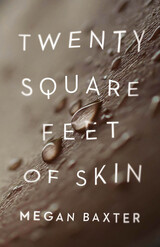 Twenty Square Feet of Skin
Megan Baxter
Ohio State University Press, 2023 Longlisted for the 2024 PEN America Diamonstein-Spielvogel Award for the Art of the Essay “A pensive inquiry, often breathtakingly beautiful and relatable, into how and where and with whom we fit.” —Kirkus The essays in Twenty Square Feet of Skin tell their stories through the body—encased as it is in “that greatest of organs, that membrane that protects the individual from the universe”—as Megan Baxter’s entrée to and home within the larger world that surrounds her. What does a tattoo mean? How can plastic surgery transform? What is the history of pedicures? Where does the mind wander on a long run? Through every example, Baxter writes toward a greater understanding of how self-knowledge is forged through physical experiences. With the input of Prince, Walt Whitman, Don Johnson, Andrew Wyeth, Meriwether Lewis, and others, Baxter reflects on love, identity, and belonging by looking closely at her skin, toenails, and DNA. Playful, wandering, and deeply felt, Twenty Square Feet of Skin weaves a strange, rich tapestry of flesh and bones, art and body, skin and scar. In embracing the beauty and peril of physicality in crystalline detail, Baxter asks us all to ponder what makes us human within these frail, flawed, powerful, and wonderful bodies of ours.
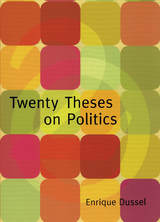 Twenty Theses on Politics
Enrique Dussel
Duke University Press, 2008 First published in Spanish in 2006, Twenty Theses on Politics is a major statement on political philosophy from Enrique Dussel, one of Latin America’s—and the world’s—most important philosophers, and a founder of the philosophy of liberation. Synthesizing a half-century of his pioneering work in moral and political philosophy, Dussel presents a succinct rationale for the development of political alternatives to the exclusionary, exploitative institutions of neoliberal globalization. In twenty short, provocative theses he lays out the foundational elements for a politics of just and sustainable coexistence. Dussel first constructs a theory of political power and its institutionalization, taking on topics such as the purpose of politics and the fetishization of power. He insists that political projects must criticize or reject as unsustainable all political systems, actions, and institutions whose negative effects are suffered by oppressed or excluded victims. Turning to the deconstruction or transformation of political power, he explains the political principles of liberation and addresses matters such as reform and revolution. Twenty Theses on Politics is inspired by recent political transformations in Latin America. As Dussel writes in Thesis 15, regarding the liberation praxis of social and political movements, “The winds that arrive from the South—from Nestor Kirchner, Tabaré Vásquez, Luiz Inácio Lula da Silva, Evo Morales, Hugo Chávez, Fidel Castro, and so many others—show us that things can be changed. The people must reclaim sovereignty!” Throughout the twenty theses Dussel engages with Latin American thinkers and activists and with radical political projects such as the World Social Forum. He is also in dialogue with the ideas of Marx, Hegel, Habermas, Rawls, and Negri, offering insights into the applications and limits of their thinking in light of recent Latin American political thought and practice.
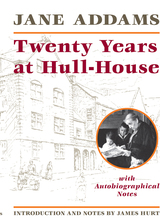 Twenty Years at Hull-House
Jane Addams, with Autobiographical Notes. Introduction and Notes by James Hurt.
University of Illinois Press, 1990 A bedrock text of American progressivism, Twenty Years at Hull-House tells the dramatic story of how social reformer Jane Addams cofounded and developed the Chicago settlement house into a community center dedicated to serving the city's immigrants and poor. Addams provides an eyewitness account of urban life in her lifetime while explaining the ideas and experiences that motivated her to dedicate her life to helping these Chicagoans. By arguing that Americans should respect immigrants' traditions, Addams created a successful template for integrating newcomers into society and empowering them to seek out what they needed from government, business, and other institutions. Addams' philosophy and tireless pursuit of social justice influenced people and movements around the world. One of the best-known public figures of her time, Addams won the Nobel Peace Prize and a century later remains an inspirational figure in American history.
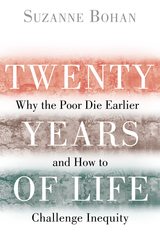 Twenty Years of Life: Why the Poor Die Earlier and How to Challenge Inequity
Suzanne Bohan
Island Press, 2018 In Twenty Years of Life, Suzanne Bohan exposes the disturbing flip side of the American dream: your health is largely determined by your zip code. The strain of living in a poor neighborhood, with sub-par schools, lack of parks, fear of violence, few to no healthy food options, and the stress of unpaid bills is literally taking years off people’s lives. The difference in life expectancy between wealthy and distressed neighborhoods can be as much as twenty years.
Bohan chronicles a bold experiment to challenge this inequity. The California Endowment, one of the nation’s largest health foundations, is upending the old-school, top-down charity model and investing $1 billion over ten years to help distressed communities advocate for their own interests. This new approach to community change draws on the latent political power of residents and is driving reform both locally and in the state’s legislative chambers. If it can work in fourteen of California’s most challenging and diverse communities, it has the potential to work anywhere in the country.
Bohan introduces us to former street shooters with official government jobs; kids who convinced their city council members to build skate parks; students and parents who demanded fairer school discipline policies to keep kids in the classroom; urban farmers who pushed for permits to produce and sell their food; and a Native American tribe that revived its traditional forest management practices. Told with compassion and insight, their stories will fundamentally change how we think about the root causes of disease and the prospects for healing.
 The Twenty-First Ballot: A Political Party Struggle in Minnesota
David Lebedoff
University of Minnesota Press, 1969
The Twenty-First Ballot was first published in 1969. Minnesota Archive Editions uses digital technology to make long-unavailable books once again accessible, and are published unaltered from the original University of Minnesota Press editions.
This account of a bitter struggle with in the Democratic-Farmer-Labor (DFL) party in Minnesota is an interesting story in its own right, and, viewed from a wider perspective, is a valuable documentary on the American political process.
The author recounts the events leading up to and climaxing in the party's deep split over the nomination of a candidate for the 1966 gubernatorial election. The nomination was accomplished only after twenty ballots were taken at the party's convention. The twenty first ballot of the book's title derives from a campaign slogan which urged that the voters, not the party, would make the final decision.
The intraparty battle was waged between a faction which backed the nomination of the incumbent governor, Karl F. Rolvaag, for a second term and a group favoring the nomination of the incumbent lieutenant governor, A. M. "Sandy" Keith, as the gubernatorial candidate. Basic to the struggle was the conviction among supporters of Mr. Keith that a new "image' was needed to win the election of a party's obligation to an incumbent. Mr. Keith was nominated. However, Mr. Rolvaag challenged the nomination by entering the primary election. He defeated the party nominee and won a place on the general election ballot, only to be defeated, in the end, by his Republican opponent.
The book is illustrated with eight pages of news photographs of the principals and events of the story.
The details of this unusual sequence of events reveal much about the workings of party politics at the important state level. The book will, therefore, be of interest not only to the general readers but to students and teachers in political science courses.
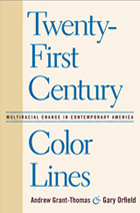 Twenty-First Century Color Lines: Multiracial Change in Contemporary America
edited by Andrew Grant-Thomas and Gary Orfield, foreword by Christopher Edley, Jr.
Temple University Press, 2008 The result of work initiated by the Harvard Civil Rights Project, this collection provides an excellent overview of the contemporary racial and ethnic terrain in the United States. The well-respected contributors to Twenty-First Century Color Lines combine theoretical and empirical perspectives, answering fundamental questions about the present and future of multiracialism in the United States: How are racial and ethnic identities promoted and defended across a spectrum of social, geopolitical and cultural contexts? What do two generations of demographic and social shifts around issues of race look like “on the ground?” What are the socio-cultural implications of changing demographics in the U.S.? And what do the answers to these questions portend for our multiracial future? This illuminating book addresses issues of work, education, family life and nationality for different ethnic groups, including Asians and Latinos as well as African Americans and whites. Such diversity, gathered here in one volume, provides new perspectives on ethnicity in a society marked by profound racial transformations. Contributors: Luis A. Avilés, Juan Carlos Martínez-Cruzado, Nilanjana Dasgupta, Christina Gómez, Gerald Gurin, Patricia Gurin, Anthony Kwame Harrison, Maria-Rosario Jackson, John Matlock, Nancy McArdle, John Mollenkopf, john a. powell, Doris Ramírez, David Roediger, Anayra Santory-Jorge, Jiannbin Lee Shiao, Mia H. Tuan, Katrina Wade-Golden and the editors.
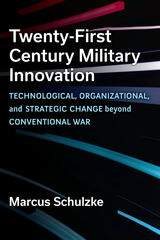 Twenty-First Century Military Innovation: Technological, Organizational, and Strategic Change beyond Conventional War
Marcus Schulzke
University of Michigan Press, 2022 Contemporary war is as much a quest for decisive technological, organizational, and doctrinal superiority before the fighting starts as it is an effort to destroy enemy militaries during battle. Armed forces that are not actively fighting are instead actively reengineering themselves for success in the next fight and imagining what that next fight may look like. Twenty-First Century Military Innovation outlines the most theoretically important themes in contemporary warfare, especially as these appear in distinctive innovations that signal changes in states’ warfighting capacities and their political goals. Marcus Schulzke examines eight case studies that illustrate the overall direction of military innovation and important underlying themes. He devotes three chapters to new weapons technologies (drones, cyberweapons, and nonlethal weapons), two chapters to changes in the composition of state military forces (private military contractors and special operations forces), and three chapters to strategic and tactical changes (targeted killing, population-centric counterinsurgency, and degradation). Each case study includes an accessible introduction to the topic area, an overview of the ongoing scholarly debates surrounding that topic, and the most important theoretical implications. This book can be read as an overview of the themes that run throughout innovations of varying types or it can be used by readers who are interested in particular topic areas.
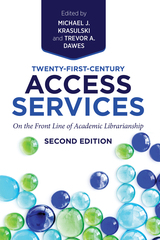 Twenty-First-Century Access Services: On the Front Line of Academic Librarianship, Second Edition
Trevor A. Dawes
Association of College & Research Libraries, 2023 Access services is the administrative umbrella typically found in academic libraries where the circulation, reserves, interlibrary loan, stacks maintenance, and related functions reside. These functions are central to daily operations and the staff are often seen as “the face” of the library. But while access services impact every user of the academic library, these functions can be unseen and often go unnoticed and uncelebrated. This thoroughly revised edition of 2013’s seminal Twenty-First-Century Access Services highlights the expanded duties of these departments; the roles these services continue to play in the success of the library, students, and faculty; and the knowledge, skills, and abilities these library workers need. In four parts it explores: - Facilitating Access
- Leading Access Services
- Assessing Access Services
- Developing Access Services Professionals
Chapters take in-depth looks at functions including circulation, stacks management, resource sharing, course reserve management and controlled digital lending, user experience, and assessing and benchmarking access services. The book also contains the full text of ACRL’s new A Framework for Access Services Librarianship: An Initiative Sponsored by the Association of College and Research Libraries’ Access Services Interest Group and a look at how it was developed and approved. Twenty-First-Century Access Services demonstrates access services’ value, defines their responsibilities and necessary skills, and explores how access services departments are evolving new and traditional services to support the academic mission of their institutions. It is geared toward both access services practitioners and library and information science graduate students and faculty.
 Twenty-Five Sides of a Post-Communist Mafia State
Bálint Magyar
Central European University Press, 2017 The twenty-five essays accompany, illustrate and underpin the conceptual framework elaborated in Post-Communist Mafia State, published in conjunction with this volume. Leading specialists analyze the manifestations of the current political regime in Hungary from twenty-five angles. Topics discussed include the ideology, constitutional issues, social policy, the judiciary, foreign relations, nationalism, media, memory politics, corruption, civil society, education, culture and so on. Beyond the basic features of the economy the domains of taxation, banking system, energy policies and the agriculture are treated in dedicated studies. The essays are based on detailed empirical investigation about conditions in today's Hungary. They nevertheless contribute to the exploration of the characteristic features of post-communist authoritarian regimes, shared by an increasing number of countries in Europe and Central Asia.
Twenty-Five Years Behind Bars: The Proceedings of the Twenty-fifth Anniversary of the U.P.C. at the Smithsonian Institution, September 30, 1999
Alan L. Haberman
Harvard University Press The bar code is now at the core of commerce, transportation, warehousing, manufacturing, and retailing, and its influence has spread to virtually every industry in the industrialized world. When this voluntary product code was first introduced in 1974, it led to the worldwide revolution in supply chain efficiency.
To celebrate the twenty-fifth anniversary of this now universally embraced technology, the Smithsonian Institution sponsored a symposium. Gathered together in this volume are the thoughts of eight speakers with hands-on experience concerning the development, diffusion, adoption, and applications of a truly groundbreaking technology. The volume concludes with papers from a panel discussion among those involved in creating the Universal Product Code, the foundation of the bar code.
 Twenty-Five Years in the Black Belt
William J. Edwards
University of Alabama Press, 1993 Born in Snow Hill, in 1869, William J. Edwards graduated in 1893 from Tuskegee Institute, then under the direction of Booker T. Washington, and set out to find a way to use in his own life the values he had learned at Tuskeegee. He did not have to look far. Edwards toured Wilcox, Monroe, Butler, and Dallas counties and found a large black population in need of both liberal and practical education. Following the model set by Tuskegee, Edwards founded Snow Hill Institute in 1893 and was its principal and guiding hand for 31 years.
Twenty-Five Years in the Black Belt is a memoir written by Edwards in 1918, when the school was 25 years old. It not only provided a fascinating portrait of the conditions of black people and the state of race relations in Alabama at the time, but also tells of one person's determination to uplift his race, particularly through eductation, in the years following Reconstruction.
 The Twenty-Five Years of Philosophy: A Systematic Reconstruction
Eckart Förster
Harvard University Press, 2012 Kant declared that philosophy began in 1781 with his Critique of Pure Reason. In 1806 Hegel announced that philosophy had now been completed. Eckart Förster examines the reasons behind these claims and assesses the steps that led in such a short time from Kant’s “beginning” to Hegel’s “end.” He concludes that, in an unexpected yet significant sense, both Kant and Hegel were indeed right.
“Presents a novel interpretation of the development of German idealism that is rich in both historical depth and philosophical insight…Förster sets forth a historically nuanced and philosophically discerning interpretation of the central debates of the era.”
—Peter Yong, Philosophy in Review
“[Förster’s] book does not disappoint…The amount of material covered by Förster is impressive…Förster’s book is rich in specificity…Wherever the discussion goes, it is going to have to go on by taking Förster’s big picture and all his detailed accounts into account.”
—Terry Pinkard, Notre Dame Philosophical Reviews
“Förster’s command of the historical sources is most impressive. Moreover, this book is clearly written, and Bowman’s translation is commendable. Scholars and graduate students will welcome this masterpiece.”
—J. M. Fritzman, Choice
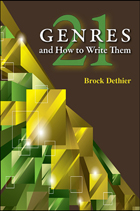 Twenty-One Genres and How to Write Them
Brock Dethier
Utah State University Press, 2013 In this classroom-tested approach to writing, Brock Dethier teaches readers how to analyze and write twenty-one genres that students are likely to encounter in college and beyond. This practical, student-friendly, task-oriented text confidently guides writers through step-by-step processes, reducing the anxiety commonly associated with writing tasks.
In the first section, Dethier efficiently presents each genre, providing models; a description of the genres’ purpose, context, and discourse; and suggestions for writing activities or “moves” that writers can use to get words on the page and accomplish their writing tasks. The second section explains these moves, over two hundred of them, in chapters ranging from “Solve Your Process Problems” and “Discover” to “Revise” and “Present.” Applicable to any writing task or genre, these moves help students overcome writing blocks and develop a piece of writing from the first glimmers of an idea to its presentation.
This approach to managing the complexity and challenge of writing in college strives to be useful, flexible, eclectic, and brief—a valuable resource for students learning to negotiate unfamiliar writing situations.
Twenty-one Texas Short Stories
Edited by William Peery
University of Texas Press, 1954 This is a splendid collection of stories about Texas by Texans—stories that appeared in leading magazines in the first half of the twentieth century. Authors in this volume: - Dillon Anderson
- Barry Benefield
- Charles Carver
- Margaret Cousins
- Chester T. Crowell
- Eugene Cunningham
- J. Frank Dobie
- Fred Gipson
- William Goyen
- O. Henry
- Sylvan Karchmer
- Harry Kidd, Jr.
- Mary King O’Donnell
- George Pattullo
- George Sessions Perry
- Katherine Anne Porter
- Winifred Sanford
- John W. Thomason, Jr.
- Thomas Thompson
- John Watson
- John W. Wilson
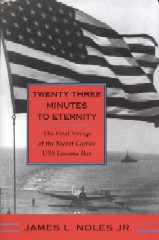 Twenty-Three Minutes to Eternity: The Final Voyage of the Escort Carrier USS Liscome Bay
James L. Noles
University of Alabama Press, 2004 A long-overdue history of America's "forgotten flattop." On November 24, 1943, a Japanese torpedo plunged into the starboard side of the American escort carrier USS Liscome Bay. The torpedo struck the thin-skinned carrier in the worst possible place the bomb storage area. The resulting explosion could be seen 16 miles away, literally ripping the Liscome Bay in half and killing 644 of her crew. In terms of lives lost, it was the costliest carrier sinking in United States naval history. Liscome Bay's loss came on her first combat operation: the American invasion of the Gilbert Islands. Despite her short career, she touched a number of remarkable and famous lives. Doris Miller, the first black American sailor to win the Navy Cross, lost his life, as did Rear Admiral Henry Mullinax, one of the Navy's first "air admirals." John Crommelin was the senior officer to survive the sinking. Later in his career, Crommelin, a decorated naval aviator himself, sparked the famous Revolt of the Admirals, which helped save the role of naval aviation in America's Cold War military. James Noles's account of the Liscome Bay and those who served aboard her is based on interviews with the ship's survivors and an unpublished memoir that the ship's pay officer made available to the author. This readable, compelling book pays homage to the crew by telling their story of experience and sacrifice.
 Twenty-Two Years: Causes and Consequences of Mental Retardation
Stephen Richardson and Helene Koller
Harvard University Press, 1996 Twenty-Two Years presents the results of a unique longitudinal study of the first 22 years in the lives of more than 200 young people with varying degrees of mental retardation. By following their paths through available services, job histories, leisure activities, friendships, and marriages, the authors provide objective information about the quality of life of young people with mental retardation.
The book makes a unique contribution by determining what factors in childhood predict who will and who will not require mental retardation services and, for those who disappear from services, why some fare better than others. Most important, the results help answer a question that haunts parents: "What will happen when my child grows up?"
This study expands on an internationally acclaimed clinical and epidemiological study of children with mental retardation published in 1970. It provides prevalence rates by severity of mental retardation, gender, social class, and family stability, and shows how these change over time.
The authors confirm the central role of biomedical factors in the etiology of severe mental retardation. For the etiology of mild mental retardation, the book examines the relative contributions of biomedical and intergenerational genetic factors as well as psychosocial adversity. The book should be of interest to a broad range of clinicians, researchers, and students, as well as the families of people with mental retardation, and it will serve as a model for future epidemiological and follow-up research.
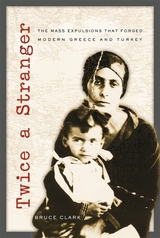 Twice a Stranger: The Mass Expulsions that Forged Modern Greece and Turkey
Bruce Clark
Harvard University Press, 2006 In the dismantling of the Ottoman Empire following World War I, nearly two million citizens in Turkey and Greece were expelled from homelands. The Lausanne treaty resulted in the deportation of Orthodox Christians from Turkey to Greece and of Muslims from Greece to Turkey. The transfer was hailed as a solution to the problem of minorities who could not coexist. Both governments saw the exchange as a chance to create societies of a single culture. The opinions and feelings of those uprooted from their native soil were never solicited.
In an evocative book, Bruce Clark draws on new archival research in Turkey and Greece as well as interviews with surviving participants to examine this unprecedented exercise in ethnic engineering. He examines how the exchange was negotiated and how people on both sides came to terms with new lands and identities.
Politically, the population exchange achieved its planners' goals, but the enormous human suffering left shattered legacies. It colored relations between Turkey and Greece, and has been invoked as a solution by advocates of ethnic separation from the Balkans to South Asia to the Middle East. This thoughtful book is a timely reminder of the effects of grand policy on ordinary people and of the difficulties for modern nations in contested regions where people still identify strongly with their ethnic or religious community.
Twilight at the Equator: A Novel
Jaime Manrique
University of Wisconsin Press, 2003 Colombian-born Santiago Martinez starts his adult life as a young gay writer living in Spain. Years later, as a university professor in New York City, Santiago is called back to his native Colombia upon the suicide of his sister. There he learns some shocking secrets about his childhood and adolescence and comes to the realization that cherished memories of the past are only illusion.
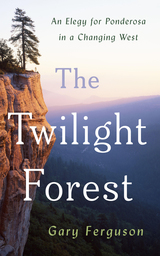 The Twilight Forest: An Elegy for Ponderosa in a Changing West
Gary Ferguson
Island Press, 2025 With their towering, cinnamon-colored trunks and dusky green canopies, ponderosa pine has long been a charismatic icon of the American West. Yet a quiet unraveling has begun: in the past decade, in a vast area from Santa Fe to the Sierras, more than two hundred million ponderosa have died. While some trees will survive in cooler places, scientists estimate that by mid-century less than five percent of the ponderosa in the American Southwest may remain. As the very character of this vast region shifts, what will be left behind? And how can we come to terms with such profound loss?
In The Twilight Forest, Gary Ferguson brings readers on an expansive journey through the ponderosa forests of the Southwest both to mourn—and to celebrate—the forests that nurtured him. In warm and luminous storytelling, Ferguson weaves together the human and natural history of ponderosa, from its march across the West more than 10,000 years ago, to centuries of artists inspired by its dazzling stature and shady passageways. Both wildfire and climate change are constant presences on this journey. Fire is necessary for healthy forests but has turned deadly, while climate change stresses even the hardiest beings of the natural world. Yet the story of ponderosa reminds us that loss can be a gateway to connection—to nature and each other.
While it is tempting to hide from the changes around us, Ferguson offers a healing approach: “to pick even one of these thousand doors of loss, pull it open and walk through.” The resulting journey is a life-affirming tribute to one of America’s most cherished wild landscapes.
Twilight of a Golden Age: Selected Poems of Abraham Ibn Ezra
Weinberger, Leon J.
University of Alabama Press, 1997 Twilight of a Golden Age offers a selection of poems by medieval Jewish scholar Abraham Ibn Ezra. Ibn Ezra (1089–1167) was a scholar, poet, and philosopher from Al-Andalus. Renowned for his biblical commentaries, he also made significant contributions to philosophy, astronomy, mathematics, and astrology. His works influenced Jewish and non-Jewish intellectual traditions alike. He was also the first to realize the need to translate the theoretical works of Jewish scholars in Al-Andalus from Arabic to Hebrew. As a sage-teacher he traveled in Spain, Italy, France, and England, where, according to certain researchers, he died. Also considered among the most famous Jewish poets, he penned verse that exemplified high Hebrew-Spanish culture in the Middle Ages. This volume of his work is a welcome addition to lovers of and newcomers to ibn Ezra's work.
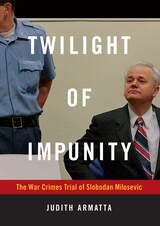 Twilight of Impunity: The War Crimes Trial of Slobodan Milosevic
Judith Armatta
Duke University Press, 2010 An eyewitness account of the first major international war-crimes tribunal since the Nuremberg trials, Twilight of Impunity is a gripping guide to the prosecution of Slobodan Milosevic for war crimes, crimes against humanity, and genocide. The historic trial of the “Butcher of the Balkans” began in 2002 and ended abruptly with Milosevic’s death in 2006. Judith Armatta, a lawyer who spent three years in the former Yugoslavia during Milosevic’s reign, had a front-row seat at the trial. In Twilight of Impunity she brings the dramatic proceedings to life, explains complex legal issues, and assesses the trial’s implications for victims of the conflicts in the Balkans during the 1990s and international justice more broadly. Armatta acknowledges the trial’s flaws, particularly Milosevic’s grandstanding and attacks on the institutional legitimacy of the International Criminal Tribunal. Yet she argues that the trial provided an indispensable legal and historical narrative of events in the former Yugoslavia and a valuable forum where victims could tell their stories and seek justice. It addressed crucial legal issues, such as the responsibility of commanders for crimes committed by subordinates, and helped to create a framework for conceptualizing and organizing other large-scale international criminal tribunals. The prosecution of Slobodan Milosevic in The Hague was an important step toward ending impunity for leaders who perpetrate egregious crimes against humanity.
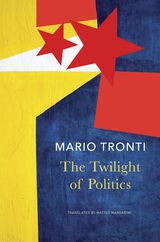 The Twilight of Politics
Mario Tronti
Seagull Books, 2024 A classic work of political theory by a major twentieth-century figure of the Italian Left.
Italian political thinker Mario Tronti is most famous for being the author of Workers and Capital, which became the central theoretical formulation of Italian operaismo or workerism, a current of political thought emerging in the 1960s that revolutionized the institutional and extra-parliamentary Left in Italy and beyond. In The Twilight of Politics, written originally in 1998, Tronti argues that modern politics, which reached its apogee in the twentieth century, has ended.
Realism and Utopia, Tronti explains, were the foundational qualities of modern politics, which it always tried to clasp together. But behind this highwater mark of politics was a history over the longue durée, encompassing the wars of religion, Hobbes’ Leviathan, revolution, great individuals, and popular movements, as well as innovations such as the nation-state and the party-form. Historically, the modern period is also a coming together of the categories of the political and the laws of political economy. At the heart of this book is Tronti’s attempt to hold together a view of the course of political history with a critique of the “dictatorship of the present” to help us escape being “chained to the bars of an eternal present . . . which deprives us both of the freedom to look back and to see ahead.”
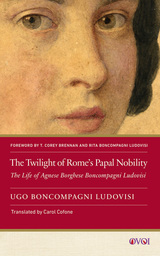 The Twilight of Rome's Papal Nobility: The Life of Agnese Borghese Boncompagni Ludovisi
Ugo Boncompagni Ludovisi (1856–1935)
Rutgers University Press, 2025 Today, the Ludovisi district is one of Rome’s most luxurious neighborhoods, home to famous restaurants and some of the most expensive shops in the city. But it was once private property, part of an eighty-six-acre villa owned by the Boncompagni Ludovisis, an ancient noble family with close ties to the papacy. The story of how the palazzo fell out of the family's hands reveals the tremendous social upheavals that Italy underwent following its mid-nineteenth-century unification.
First privately published in 1921, The Twilight of Rome's Papal Nobility provides an intimate look at a family who grew up accustomed to almost unimaginable wealth, power, and glamour. A descendant of two popes, Ugo Boncompagni Ludovisi recounts the life story of his mother Agnese, who was raised in a palace full of priceless artwork, including pieces by Caravaggio and Michelangelo. We get a window into Agnese's private life—her girlhood, marriage, and raising of several children—as her public life becomes increasingly tumultuous amid the family’s struggles to retain its property. A tender elegy to a bygone era, Boncompagni Ludovisi's story provides a unique perspective on Italian history and Rome’s urban redevelopment.
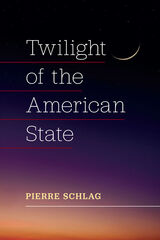 Twilight of the American State
Pierre Schlag
University of Michigan Press, 2023 The sudden emergence of the Trump nation surprised nearly everyone, including journalists, pundits, political consultants, and academics. When Trump won in 2016, his ascendancy was widely viewed as a fluke. Yet time showed it was instead the rise of a movement—angry, militant, revanchist, and unabashedly authoritarian.
How did this happen? Twilight of the American State offers a sweeping exploration of how law and legal institutions helped prepare the grounds for this rebellious movement. The controversial argument is that, viewed as a legal matter, the American state is not just a liberal democracy, as most Americans believe. Rather, the American state is composed of an uneasy and unstable combination of different versions of the state—liberal democratic, administered, neoliberal, and dissociative. Each of these versions arose through its own law and legal institutions. Each emerged at different times historically. Each was prompted by deficits in the prior versions. Each has survived displacement by succeeding versions. All remain active in the contemporary moment—creating the political-legal dysfunction America confronts today.
Pierre Schlag maps out a big picture view of the tribulations of the American state. The book abjures conventional academic frameworks, sets aside prescriptions for quick fixes, dispenses with lamentations about polarization, and bypasses historical celebrations of the American Spirit.
 Twilight of the Literary: Figures of Thought in the Age of Print
Terry Cochran
Harvard University Press, 2005 In Western thought, the modern period signals a break with stagnant social formations, the advent of a new rationalism, and the emergence of a truly secular order, all in the context of an overarching globalization. In The Twilight of the Literary, Terry Cochran links these developments with the rise of the book as the dominant medium for recording, preserving, and disseminating thought. Consequently, his book explores the role that language plays in elaborating modern self-understanding. It delves into what Cochran calls the "figures of thought" that have been an essential component of modern consciousness in the age of print technology--and questions the relevance of this "print-bound" thinking in a world where print no longer dominates.
Cochran begins by examining major efforts of the eighteenth century that proved decisive for modern conceptions of history, knowledge, and print. After tracing late medieval formulations of vernacular language that proved crucial to print, he analyzes the figures of thought in print culture as they proceed from the idea of the collective spirit (the "people"), an elaboration of modern history. Cochran reconsiders basic texts that, in his analysis, reveal the underpinnings of modernity's formation--from Dante and Machiavelli to Antonio Gramsci and Walter Benjamin. Moving from premodern models for collective language to competing theories of history, his work offers unprecedented insight into the means by which modern consciousness has come to know itself.
 Twilight of the Pepper Empire: Portuguese Trade in Southwest India in the Early Seventeenth Century
A. R. Disney
Harvard University Press, 1978 This study of the Portuguese commercial empire in India during the Hapsburg years is the most serious attempt yet made to analyze the old Portuguese pepper trade--from the planting of orchards in the foothills of Malabar and Kanara to the unloading of spice-laden carracks in Lisbon. Equally significant, it is the first book to explain how and why the Portuguese were not able to modernize their trade system when faced with crisis conditions.
The distress that confronted the Portuguese following the arrival of the Dutch and English, seen here as partly military but fundamentally economic and organizational, reached its decisive stage in the 1620s and early 1630s. The Portuguese attempted to combat the crisis by creating their own India Company. The story of that company and the reasons for its failure are thoroughly investigated as Disney looks at its antecedents, composition, activities, and weaknesses. The author has unearthed much new statistical material from widely scattered manuscript sources and in doing so sheds new light on related problems and issues, such as institutional relations between Spain and Portugal, the careers of individual merchants, and the nature and difficulties of viceregal government in Portuguese India.
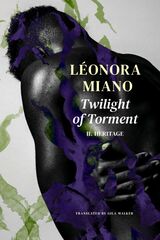 Twilight of Torment: II. Heritage
Léonora Miano
Seagull Books, 2023 A searing novel exploring the construction of masculinity in sub-Saharan Africa.
After beating his girlfriend and leaving her for dead on the street, Amok retraces his steps. Frightened by his act, which reproduces the violence of his father, he hopes to save the woman. But it is too late when he arrives at the scene; two women are already carrying the injured woman. Overwhelmed and not daring to reveal himself, he decides to find his father in order to learn how to rid himself of the dark force that he believes runs through the men of his lineage. He embarks on a journey that will be, more than anything, an inner one, forcing him to understand his story and choose a healthier way of being in the world. This second volume of Twilight of Torment is both intimate and political. Through the story of a man and his family, we discover an African bourgeoisie and its many social wanderings in a contemporary Africa whose future seems nebulous.
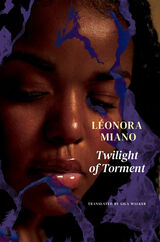 Twilight of Torment: Melancholy
Léonora Miano
Seagull Books, 2022 A haunting, multivocal novel full of stories of the lives of women of African descent.
Four women speak. They speak to the same man, who is not there. He is the son of the first, the great-yet-impossible love of the second, the platonic companion of the third, the older brother of the last. Speaking to him in his absence, it is to themselves that these women turn, examining their own stories to make sense of their journey, from twilight to twilight, through a mysterious stormy night in the middle of the dry season.
Together, the voices in Twilight of Torment: Melancholy, the first volume of a two-volume novel, perform a powerful and sometimes discordant jazz-inspired chorus about issues such as femininity, sexuality, self-love, and the intrusion of history into the intimate lives of people of African descent. Blackness confronts African-ness, love is sometimes discovered in the arms of another woman, the African renaissance tries to establish itself on the rubble of self-esteem damaged by history. Each of these women, with her own language and rhythm, ultimately represents a specific aspect of the tormented history of Africans in today’s world, and at the end of the night, they will each arrive at a dawn of hope.
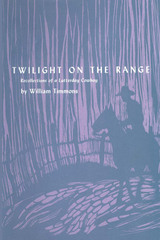 Twilight on the Range: Recollections of a Latterday Cowboy
By William Timmons
University of Texas Press, 1962 Billie Timmons was fourteen when he met Charles Goodnight—over a wagonload of manure that had been jammed on a gatepost—and he went to work on the Goodnight Cross J Ranch shortly thereafter. The spirit of helpfulness that led Mr. Goodnight to strip off his coat and lift the wagon free for a lad in need sets the tone of this book, in which the author unwinds a spool of recollections of range-riding in Texas and North Dakota over an eighteen-year period. When Billie Timmons went to work for Mr. Goodnight in 1892, Texas was undergoing a rapid transition from open range to fences. But around Texas campfires he heard tales about the northern range, told by cowboys who had ridden there and who had seen the northern lights, the tall free grass, swollen streams, and stampeding cattle. A longing to see that exciting country took hold of young Timmons. His chance came when four buffaloes from the Goodnight ranch needed a nursemaid for their freight car trip to Yellowstone Park. Once in the northern country, Timmons stayed, casting his lot with the cowmen of North Dakota. He became the protégé of an extraordinary man, William Ray; he was foreman, friend, and confidant of banker-rancher Wilse Richards, a member of the Cowboy Hall of Fame. But even during his days in North Dakota he never lost touch with Charles Goodnight, a lifelong friend, and his portrayal of Goodnight provides much insight into the character of the man whose name belongs to the West. In this book you experience the terror of being lost in the dead-white expanse of a North Dakota snowstorm; the gaiety of cowboy dances, for which there were never enough women available; the excitement of a near-riot in a Hebron, North Dakota, saloon, where cowboys from the 75 Ranch drank up or poured out all the liquor, then smashed all the glasses and bottles—one day before the state became bone-dry; and the loneliness of work on the range, where a flickering lantern on the side of a chuck wagon on a stormy night meant home for many a cowboy. Running like a bright thread through the narrative is Billie Timmons’s love of horses, from whom he learned the wisdom that some horses and some men are to be handled with great care and others are not to be handled at all. His chapter on Buck, his best-loved horse, is memorable. In North Dakota, as in Texas, fences brought the end of the big herds and the end of cowboying for a man who enjoyed it to the hilt.
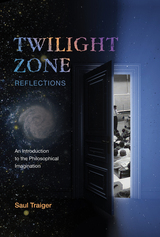 Twilight Zone Reflections: An Introduction to the Philosophical Imagination
Saul Traiger
Lever Press, 2024 Twilight Zone Reflections is the first book of its kind to explore the entirety of The Twilight Zone (1959–1964) as a series. It acts as both an introduction to the field of philosophy and as a complete guide to the philosophical issues illustrated throughout the original 1959-64 television series. Author Saul Traiger explores each of the 156 episodes, investigating the show’s themes in metaphysics, epistemology, moral and political philosophy, and other topics in a way that is accessible to both seasoned philosophers and those outside academia.
Each short chapter dives into a single episode and concludes with helpful cross-references to other episodes that explore similar philosophical problems and subjects. For example, a reader may be interested in questions about the nature of the mind and whether machines can think. By referencing this book, they could easily discover the thematic connections between episodes like “I Sing the Body Electric” or “The Lateness of the Hour,” and learn how both episodes introduce the viewer to possible worlds that challenge us to consider whether our idea of the mind, and even our very personhood, extends beyond the human to robots and other artificial intelligences. Each chapter introduces fundamental philosophical questions such as these through the lens of The Twilight Zone and inspires additional exploration. Further readings are suggested for all episodes, making this volume indispensable to academics, students, and fans of the show. Each chapter is short and accessible, ensuring that this book is the perfect resource to accompany a complete series re-watch.
The Twilight Zone considered questions that strike at the heart of philosophical inquiry, such as the nature of self, the existence of god, the possibility of an afterlife, the relationship between knowledge and mental illness, the nature of possibility, even the nature of imagination itself, and so much more. Traiger argues that each episode can serve as an entry point for philosophical reflection. Twilight Zone Reflections is a valuable reference for anyone interested in exploring a well-known slice of popular culture history that doubles as a vast store of philosophical ideas.
Twin Cities Sports: Games for All Seasons
Sheldon Anderson
University of Arkansas Press, 2020 The histories in Twin Cities Sports are rooted in the class, ethnic, and regional identity of this unique upper midwestern metropolitan area. The compilation includes a wide range of important studies on the hub of interwar speedskating, the success of Gopher football in the Jim Crow era, the integration of municipal golf courses, the building of a world-renowned park system, the Minneapolis Lakers’ basketball dynasty, the Minnesota Twins’ connections to Cuba, and more.
Twin Peaks: Unwrapping the Plastic
Franck Boulègue
Intellect Books, 2016 Few contemporary television shows have been subjected to the critical scrutiny that has been brought to bear on David Lynch and Mark Frost’s Twin Peaks since its debut in 1990.Yet the series, and the subsequent film, Fire Walk With Me, are sufficiently rich that it’s always possible for a close analysis to offer something new—and that’s what Franck Boulègue has done with Twin Peaks: Unwrapping the Plastic. Through Boulègue’s eyes, we see for the first time the world of Twin Peaks as a coherent whole, one that draws on a wide range of cultural source material, including surrealism, transcendental meditation, Jungian psychoanalysis, mythology, fairy tales, and much, much more. The work of a scholar who is also a fan, the book should appeal to any hardcore Twin Peaks viewer.
Twin Tollans: Chichén Itzá, Tula, and the Epiclassic to Early Postclassic Mesoamerican World
Jeff Karl Kowalski
Harvard University Press, 2007 This volume had its beginnings in the two-day colloquium, "Rethinking Chichén Itzá, Tula and Tollan," that was held at Dumbarton Oaks. The selected essays revisit long-standing questions regarding the nature of the relationship between Chichen Itza and Tula. Rather than approaching these questions through the notions of migrations and conquests, these essays place the cities in the context of the emerging social, political, and economic relationships that took shape during the transition from the Epiclassic period in Central Mexico, the Terminal Classic period in the Maya region, and the succeeding Early Postclassic period.
 Twin Tollans: Chichén Itzá, Tula, and the Epiclassic to Early Postclassic Mesoamerican World, Revised Edition
Jeff Karl Kowalski
Harvard University Press, 2011 Chichén Itzá and Tula have long been conceived as “twin cities”—paired political capitals that share so many aspects of architectural plan, sculptural repertory, and iconographical motifs that they represent a unique case of cultural contact and artistic convergence in ancient Mesoamerica. This volume (originally published in 2007) revisits long-standing questions regarding the relationship between Chichén Itzá and Tula. Hailed as a “must read,” it quickly became a fundamental source for all Mesoamericanists.
Rather than approaching these cities through earlier notions of migrations and conquests, the volume considers their roles in the social, political, and economic relationships that emerged during the transition from the Epiclassic to the Early Postclassic period. The seventeen contributors utilize archaeological, art historical, anthropological, epigraphical, and ethnohistorical methods to demonstrate that the rise and florescence of the “twin cities” was the result of their success in adapting to complex processes of cultural change. These adaptations, along with the development of new types of political systems and the use of innovative visual and symbolic systems, permitted Chichén Itzá and Tula to emerge as dominant powers in Mesoamerica between the Epiclassic and Early Postclassic periods.
 Twin Towers
Gillespie, Angus K
Rutgers University Press, 1999 A readable account of both the history of the construction of the Twin Towers and the life of the people who work there. The Twin Towers of the World Trade Center are more than office buildings. They are symbols of America, just as the Eiffel Tower and Big Ben represent their countries. Commissioned in 1962 and completed in 1976, these edifices are still the tallest man-made structures in New York City. Indeed, the builders intended the towers to make a statement about the importance of the Port of New York and New Jersey. The complex rises like Emerald City, with fountains and sculpture from what was once a dilapidated area of half-abandoned stores. Folklorist Angus Gillespie takes us on a tour that goes back in time and continues to the present day. He recounts the political maneuvering necessary to get the State of New Jersey to agree to situate the project at its present location. Deftly presenting portraits of the men responsible for mooring the World Trade Center at its present location, Gillespie provides ample evidence that the World Trade Center backers were “second to none in self promotion.” Twin Towers also demonstrates how engineers prepared the site and solved complex problems (wind patterns, elevator placement, ground-water complications) in order to erect the towers, each with 110 stories. And he discusses the contrast between the architectural community’s almost universal disdain for the towers’ design and the public’s enthusiastic acceptance of the buildings as a symbol of New York. There is more to the Twin Towers than its architecture, however. People give this complex life, purpose, vibrancy, Gillespie points out. The World Trade Center houses more than 400 businesses and organizations from some 60 different countries engaged in a broad range of international business activities. Through his numerous first-hand interviews conducted with the people who daily work there, Gillespie vividly portrays the world of bankers, shippers, freight forwarders, and traders. With skill and insight, he captures what happens during a normal 24-hour day in the Twin Towers, starting with early morning food deliveries and ending with the patrols of nighttime security guards. Twin Towers is both a fitting tribute and careful analysis of one of the most resonating symbols in American culture.
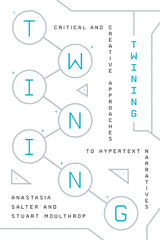 Twining: Critical and Creative Approaches to Hypertext Narratives
Anastasia Salter
Amherst College Press, 2021 Hypertext is now commonplace: links and linking structure nearly all of our experiences online. Yet the literary, as opposed to commercial, potential of hypertext has receded. One of the few tools still focused on hypertext as a means for digital storytelling is Twine, a platform for building choice-driven stories without relying heavily on code. In Twining, Anastasia Salter and Stuart Moulthrop lead readers on a journey at once technical, critical, contextual, and personal. The book’s chapters alternate careful, stepwise discussion of adaptable Twine projects, offer commentary on exemplary Twine works, and discuss Twine’s technological and cultural background. Beyond telling the story of Twine and how to make Twine stories, Twining reflects on the ongoing process of making.
"While there have certainly been attempts to study Twine historically and theoretically... no single publication has provided such a detailed account of it. And no publication has even attempted to situate Twine amongst its many different conversations and traditions, something this book does masterfully." —James Brown, Rutgers University, Camden
|
|
